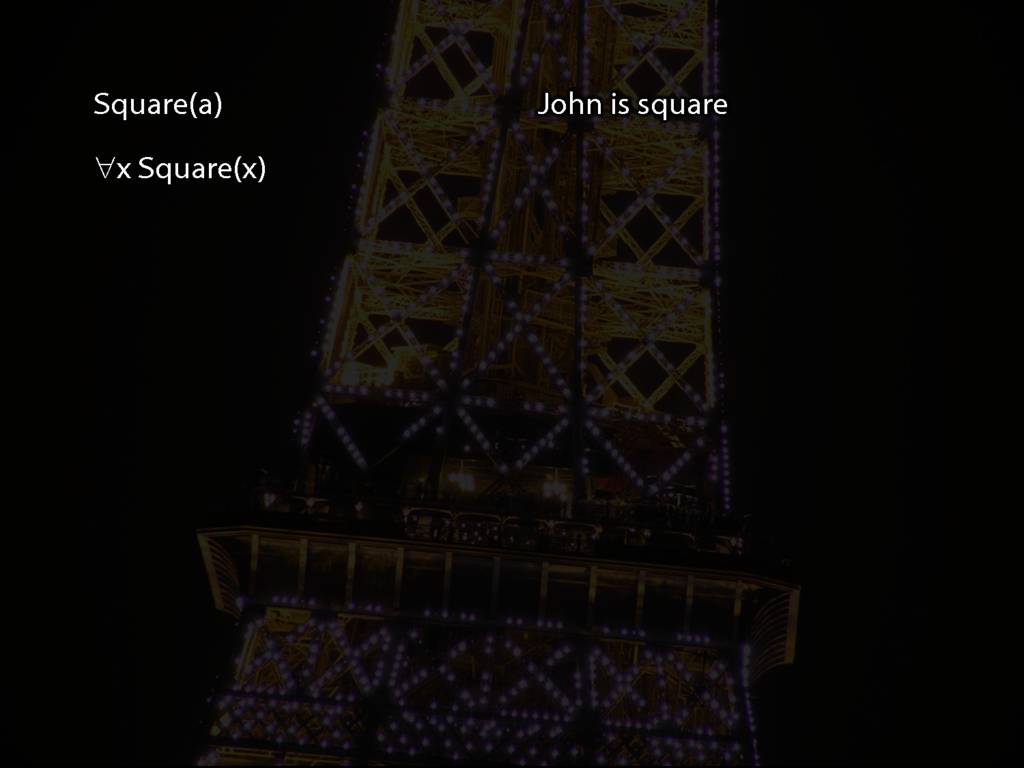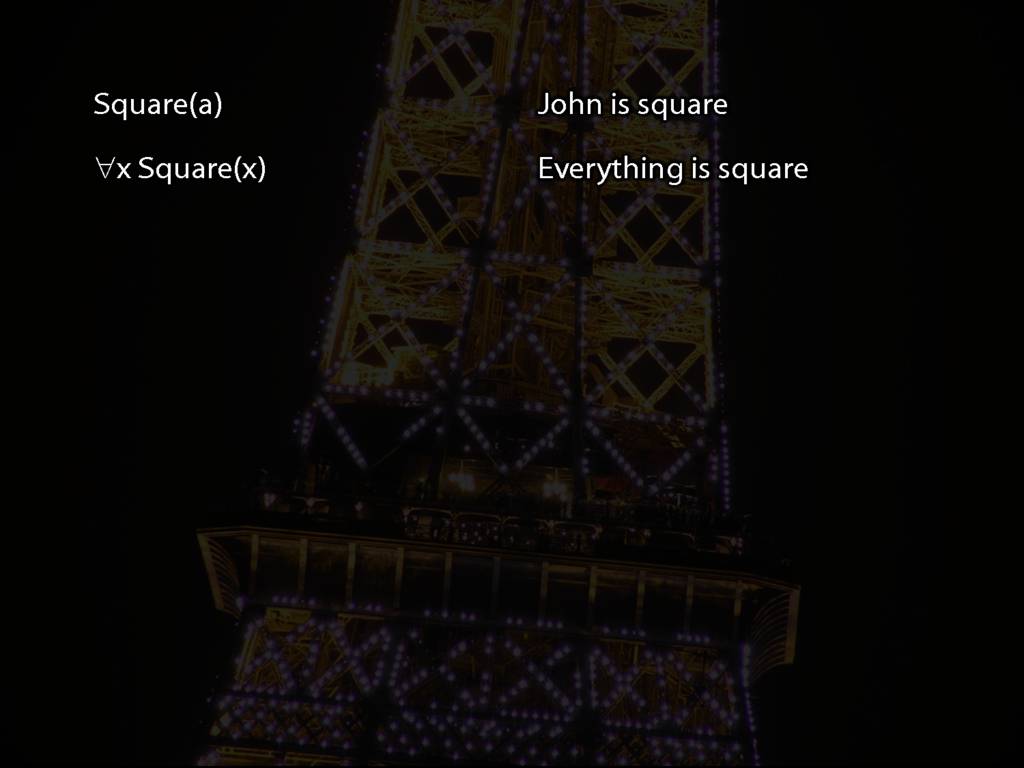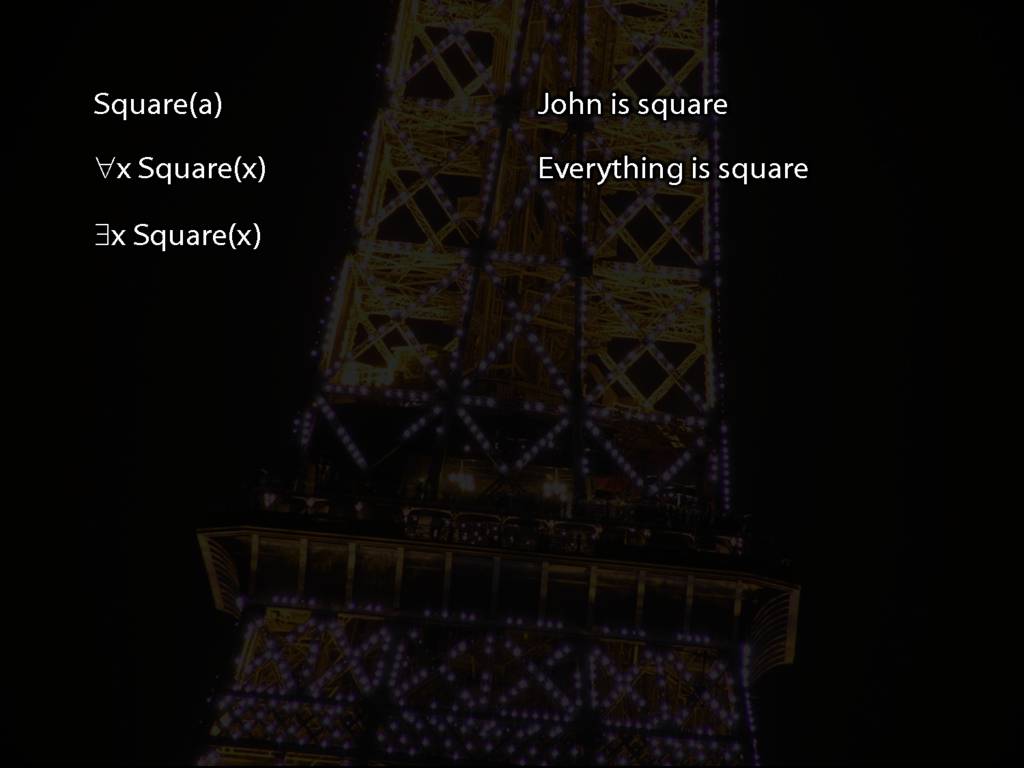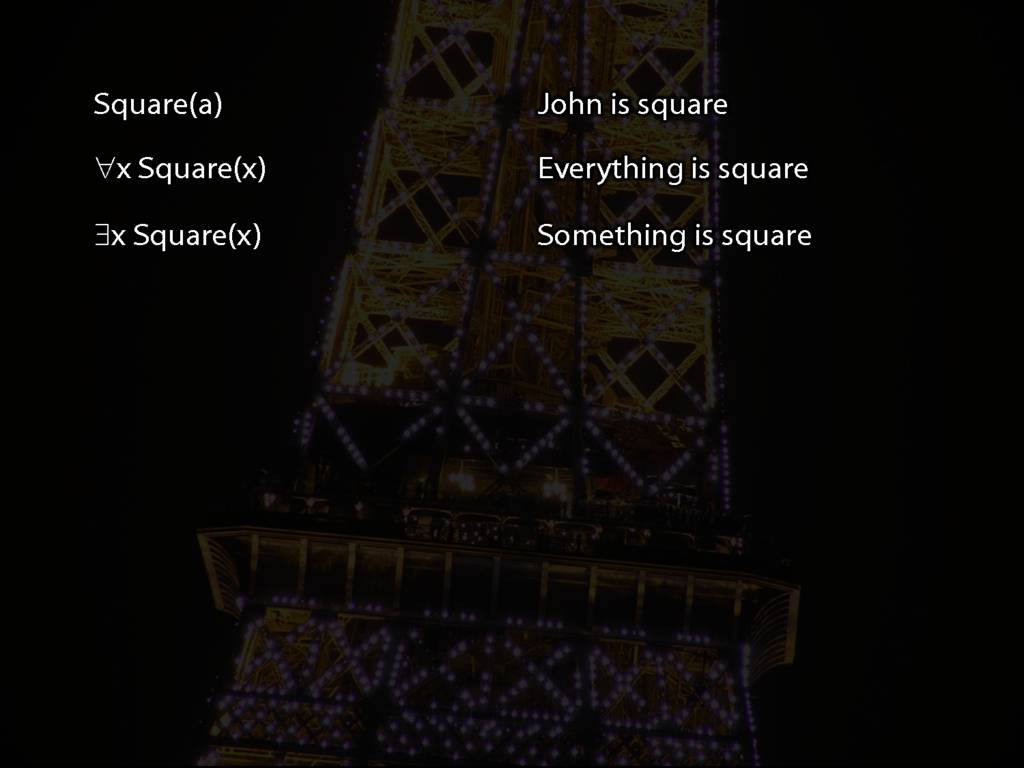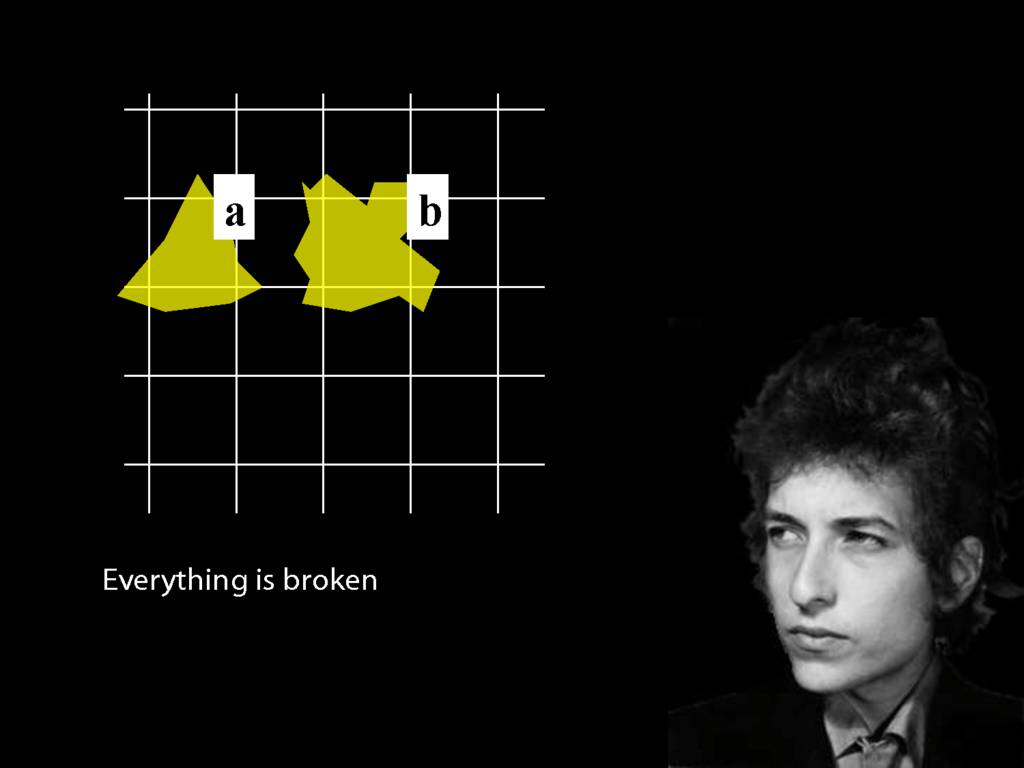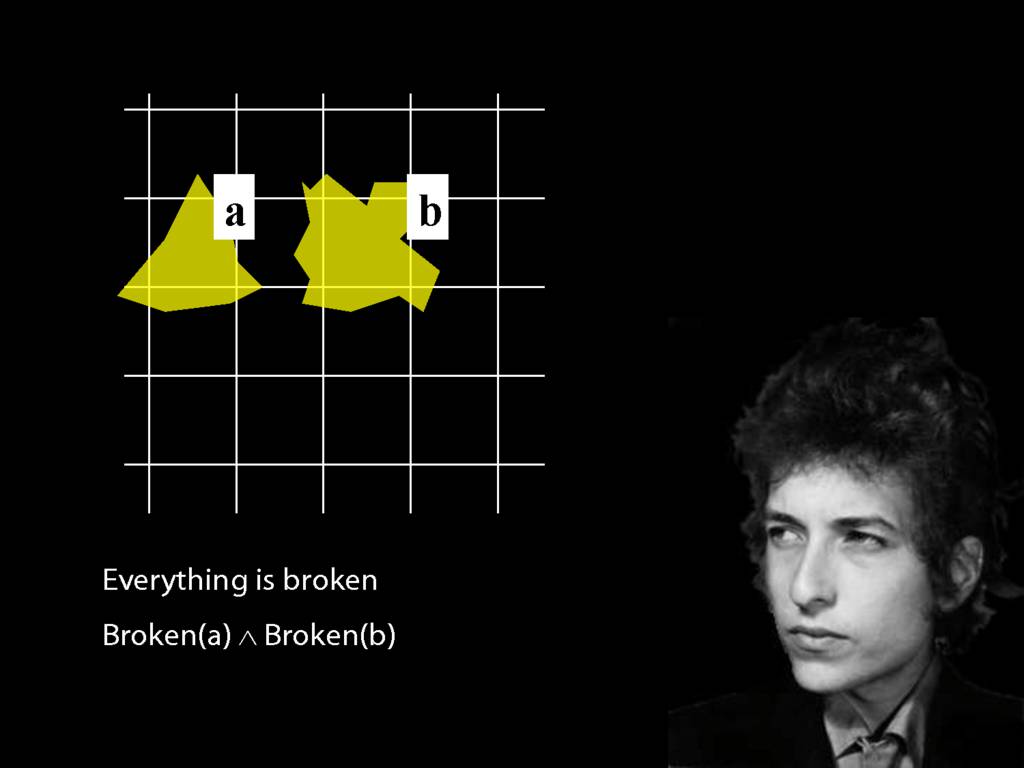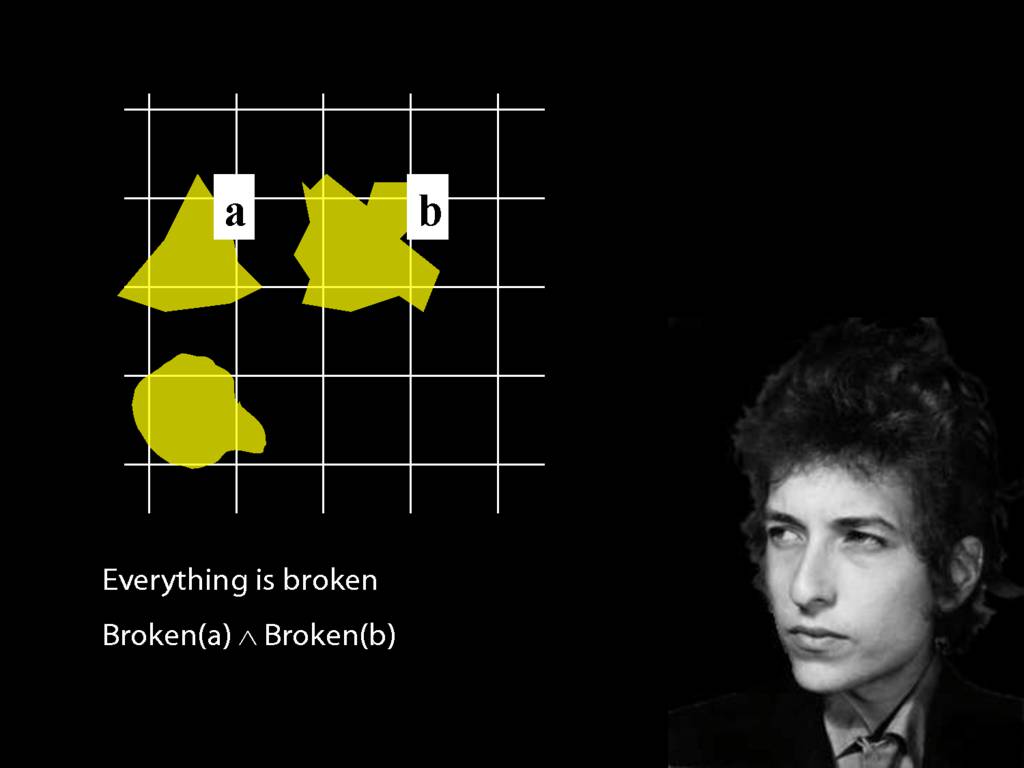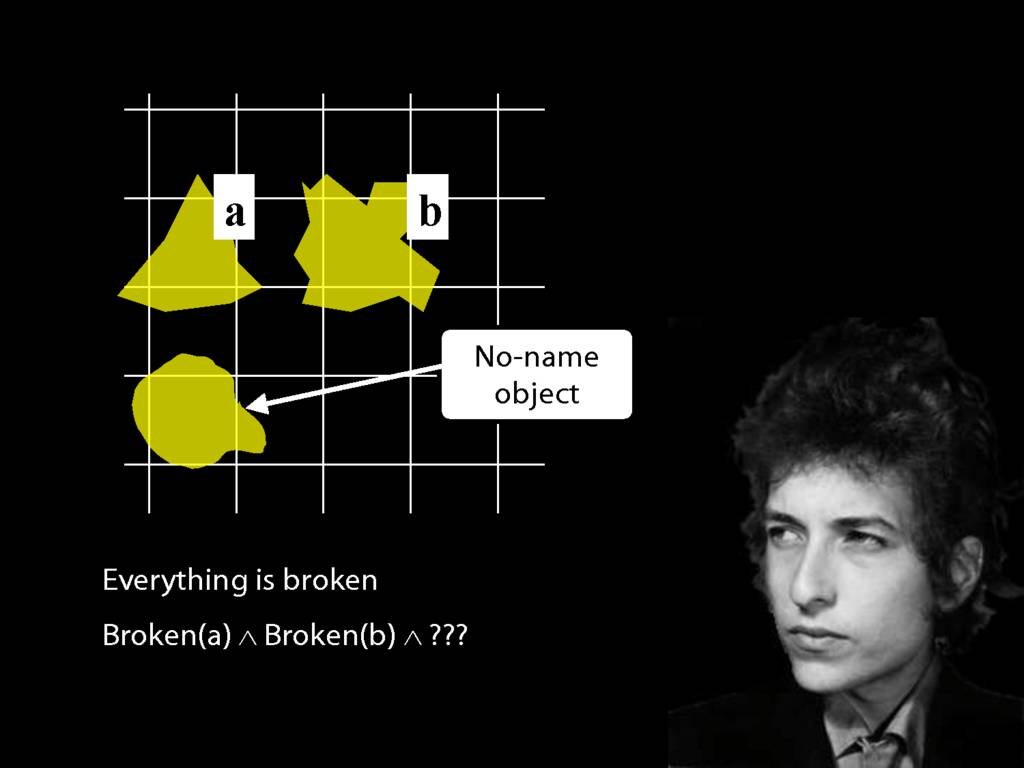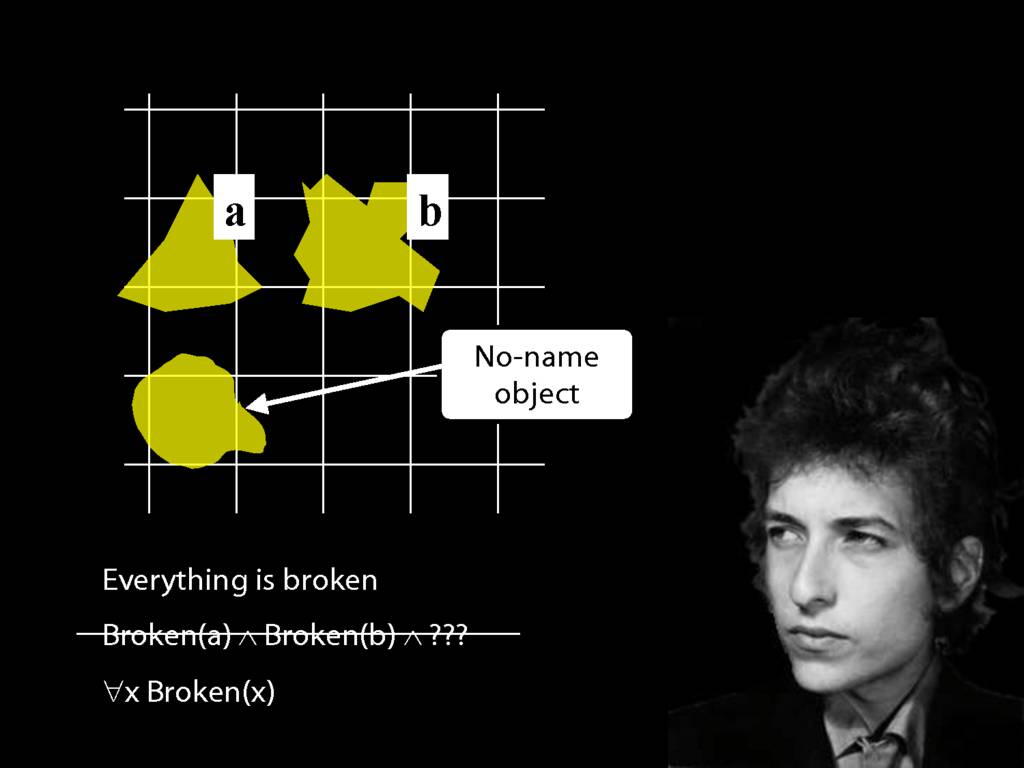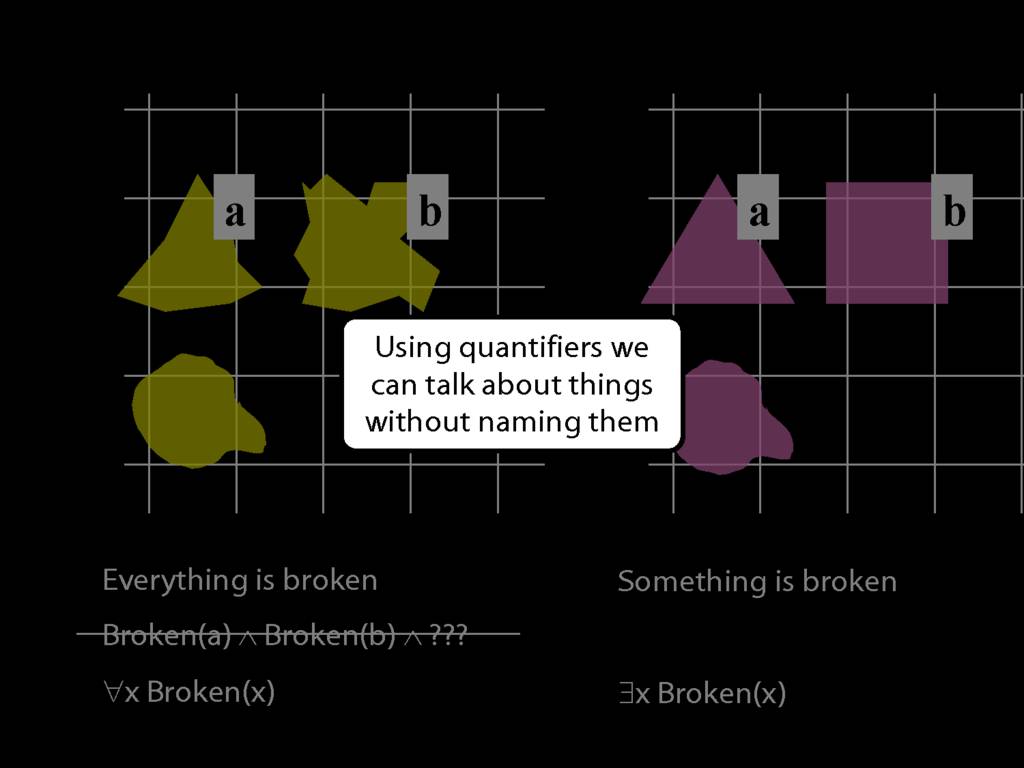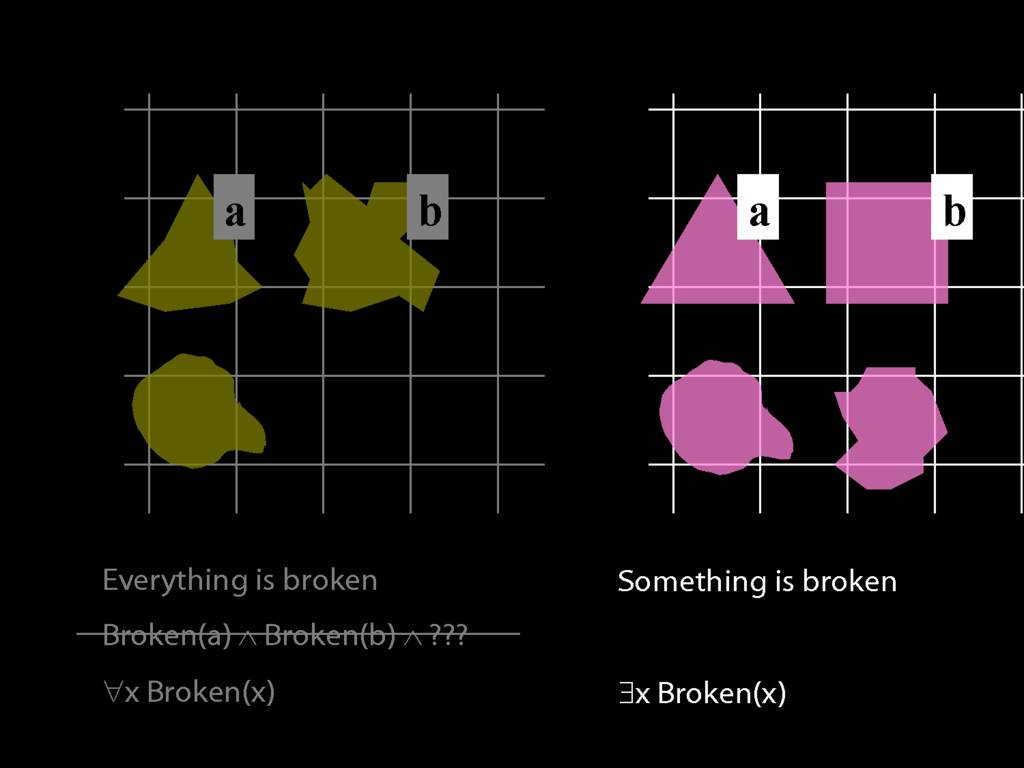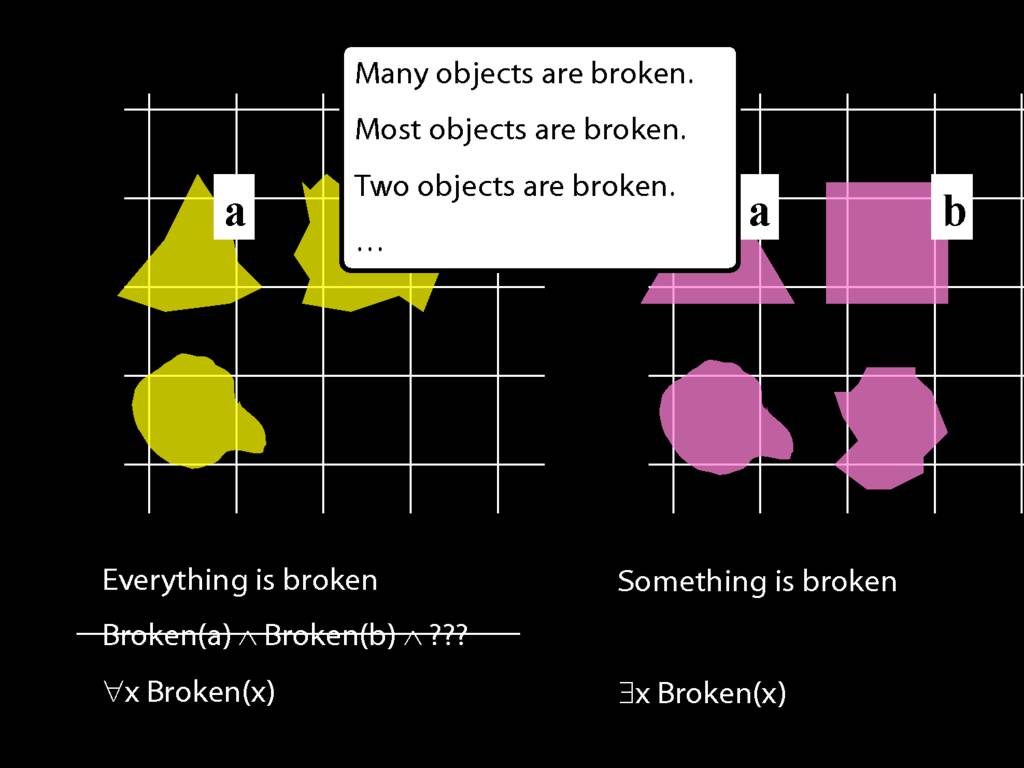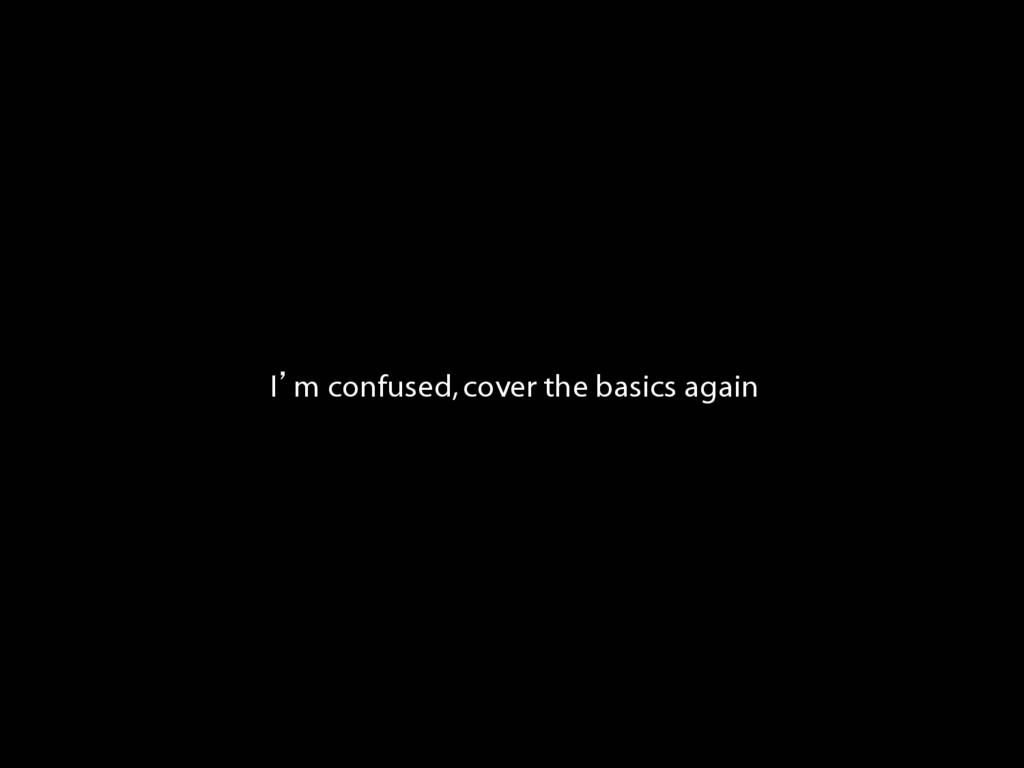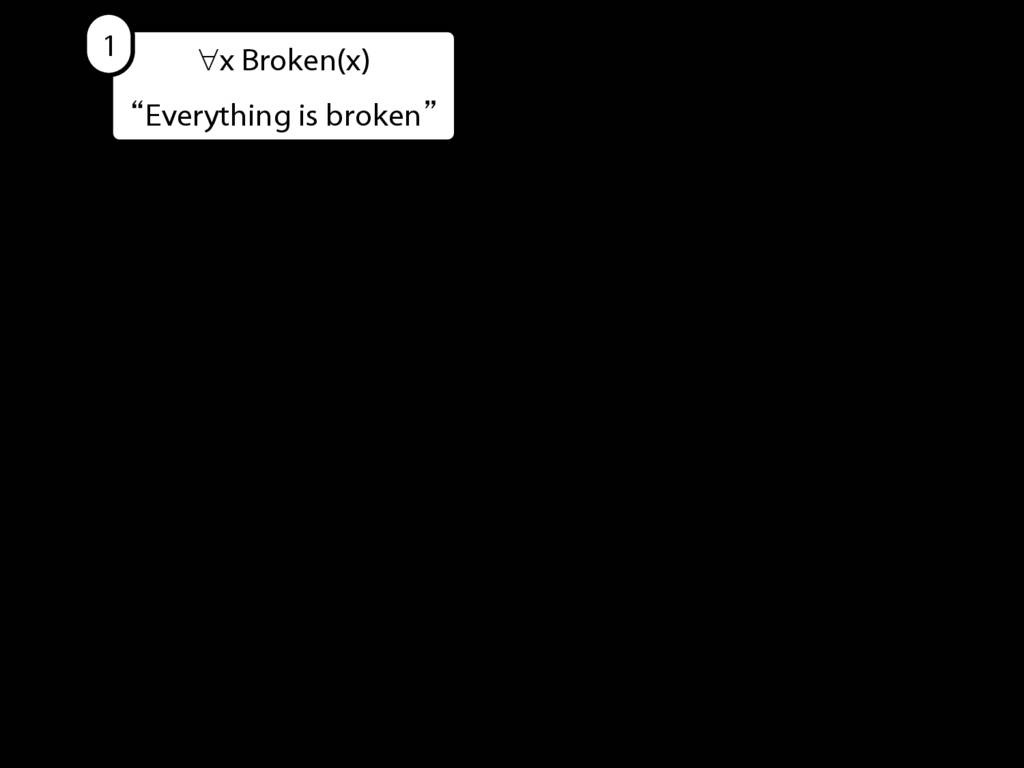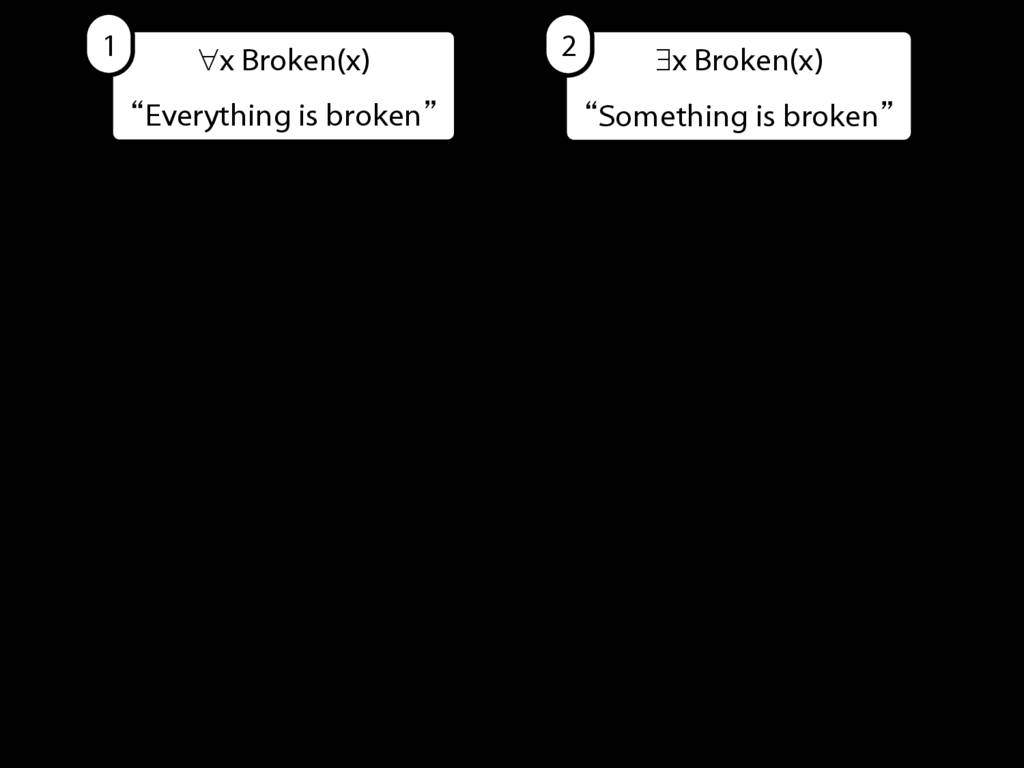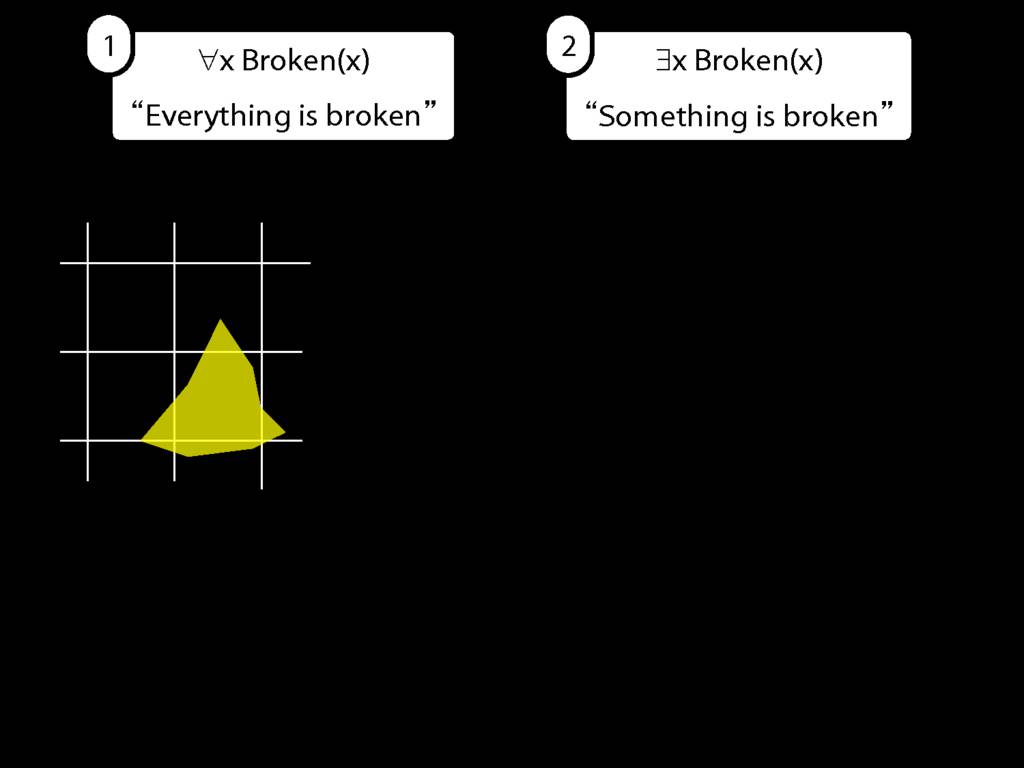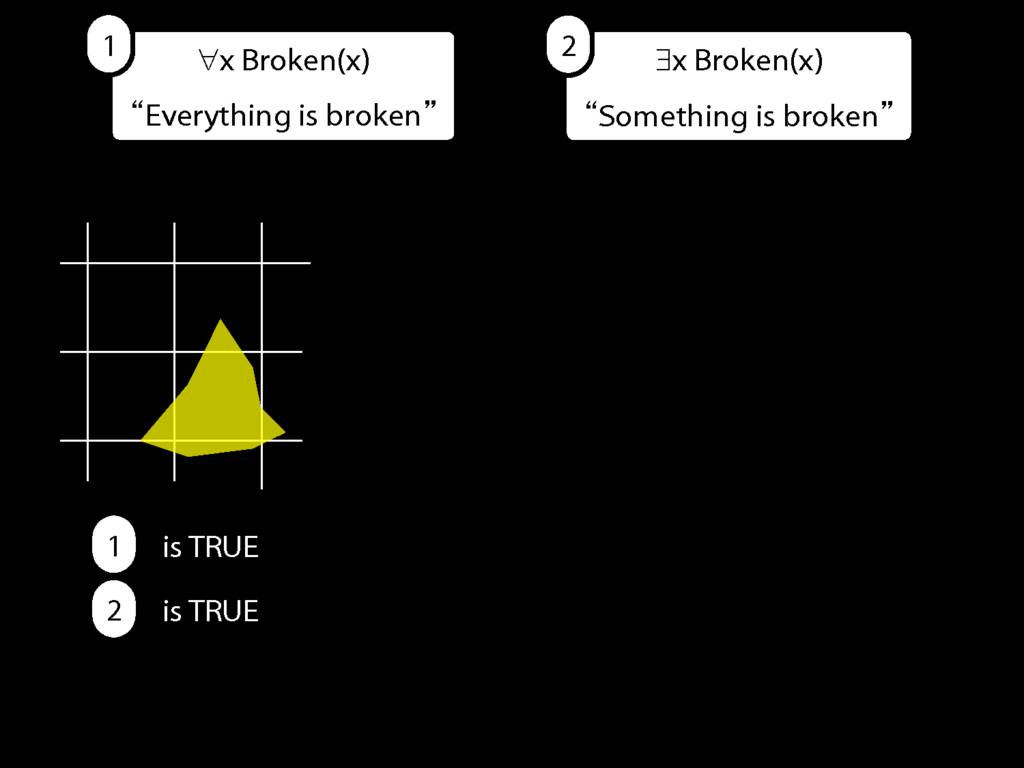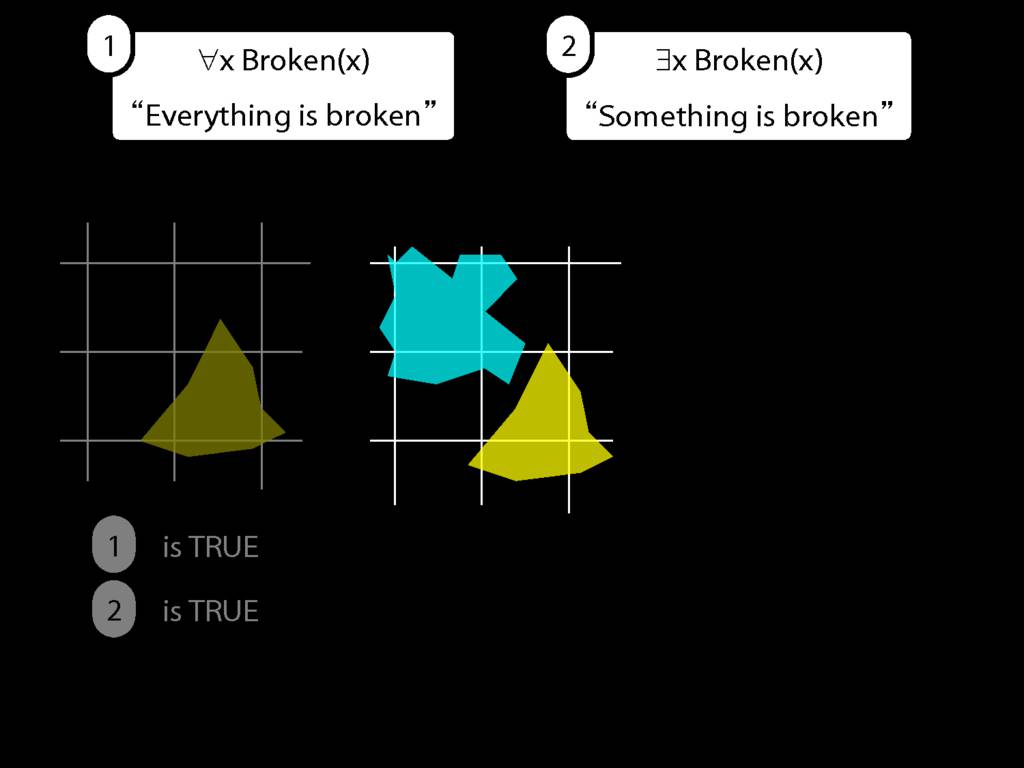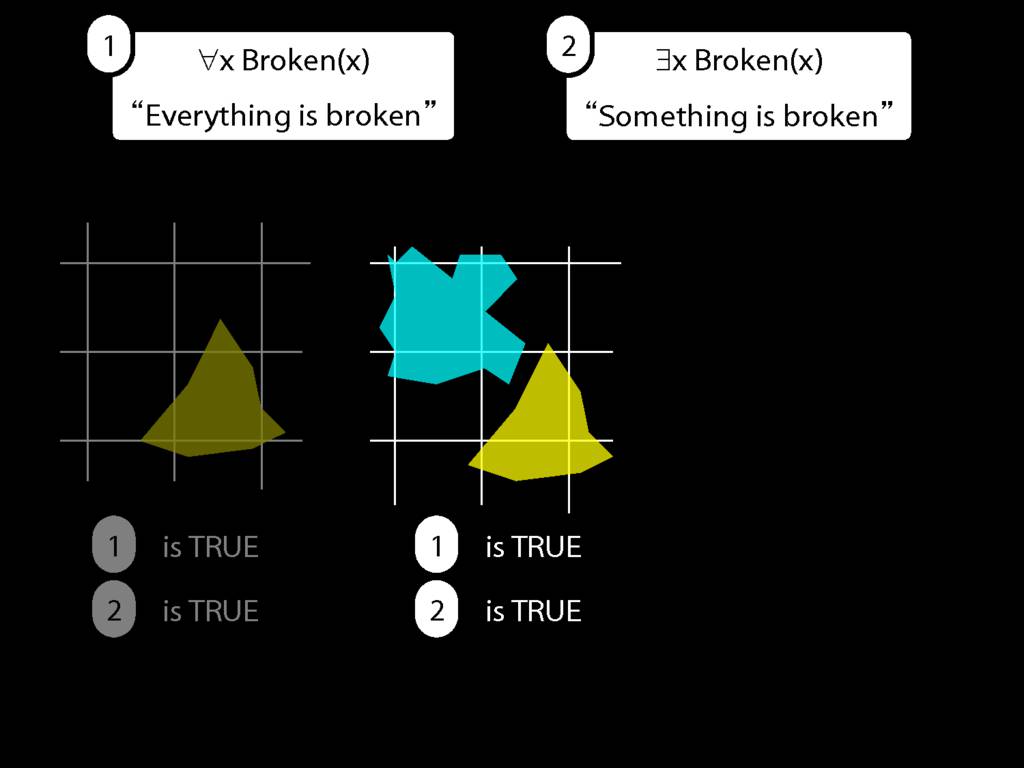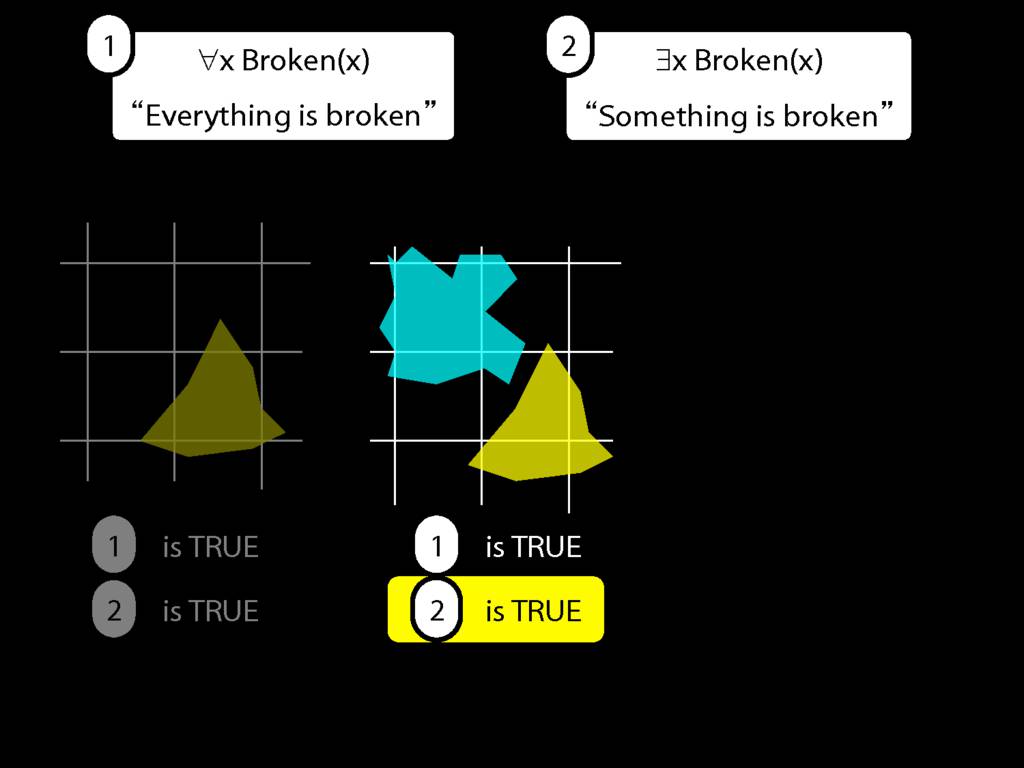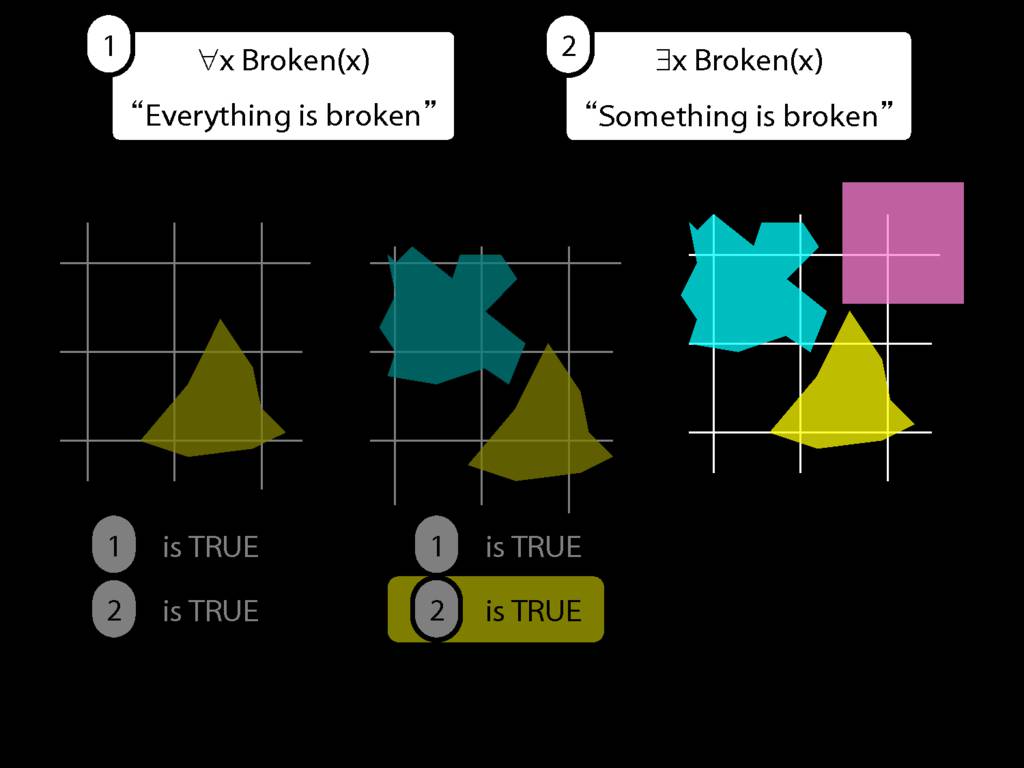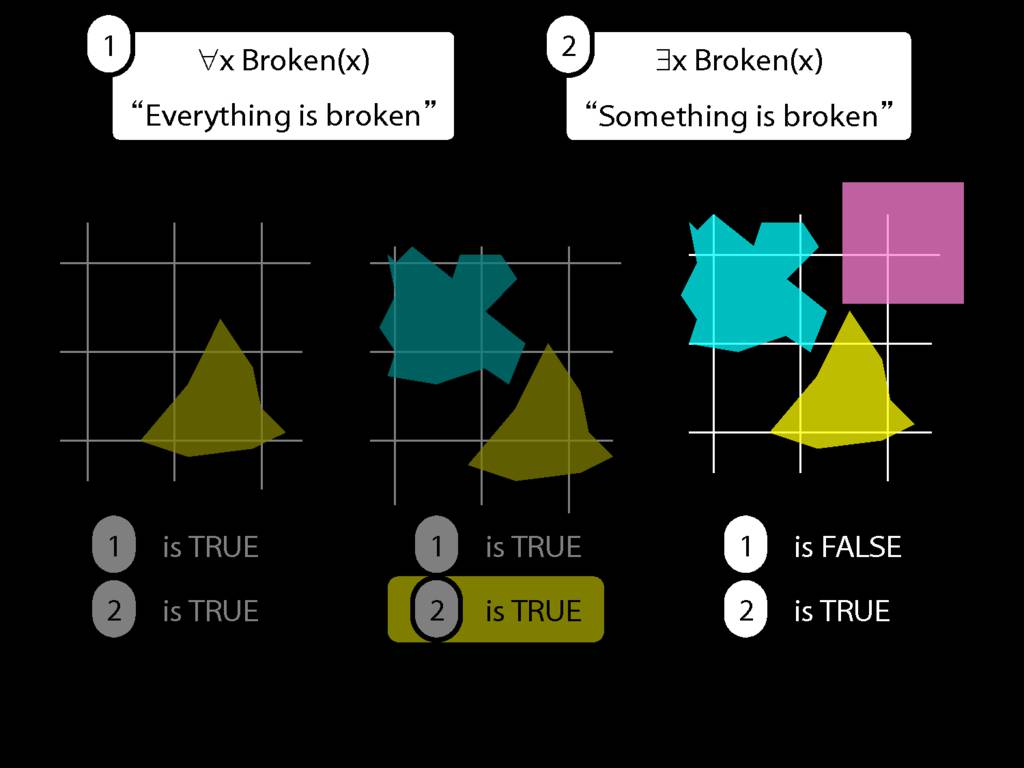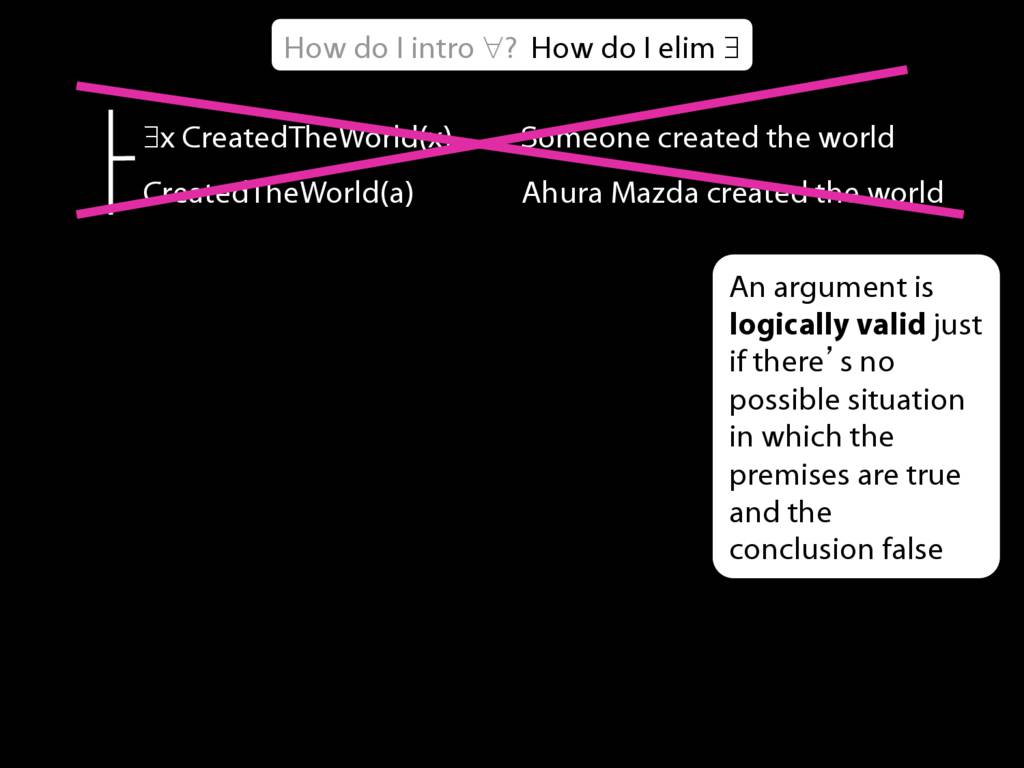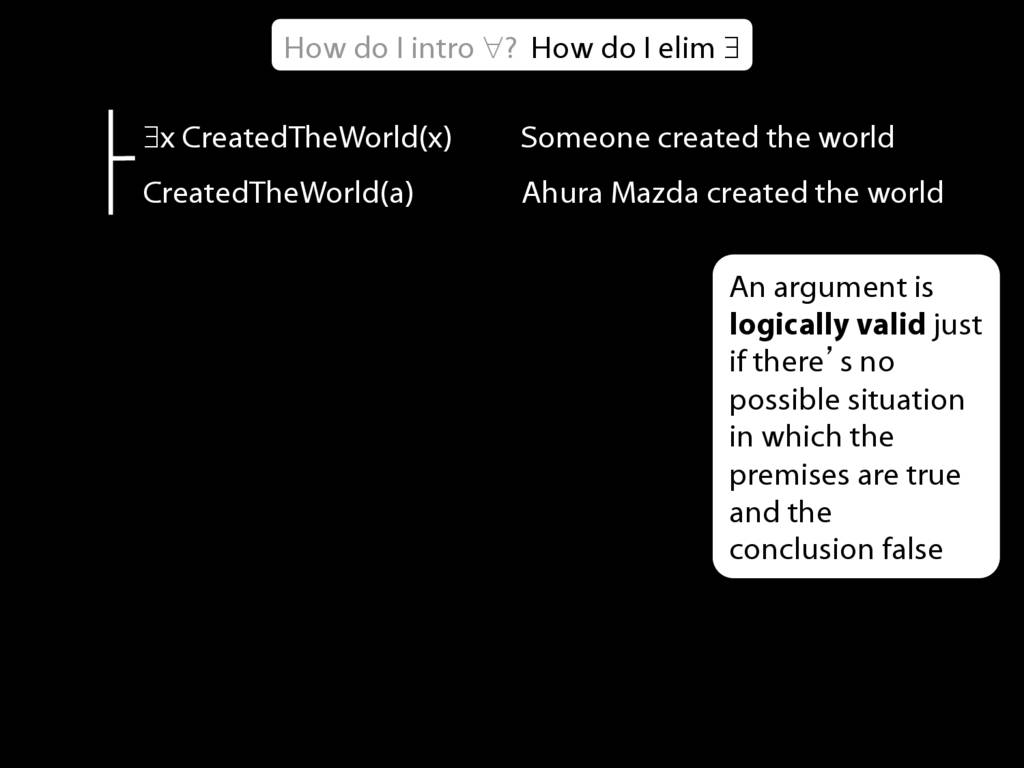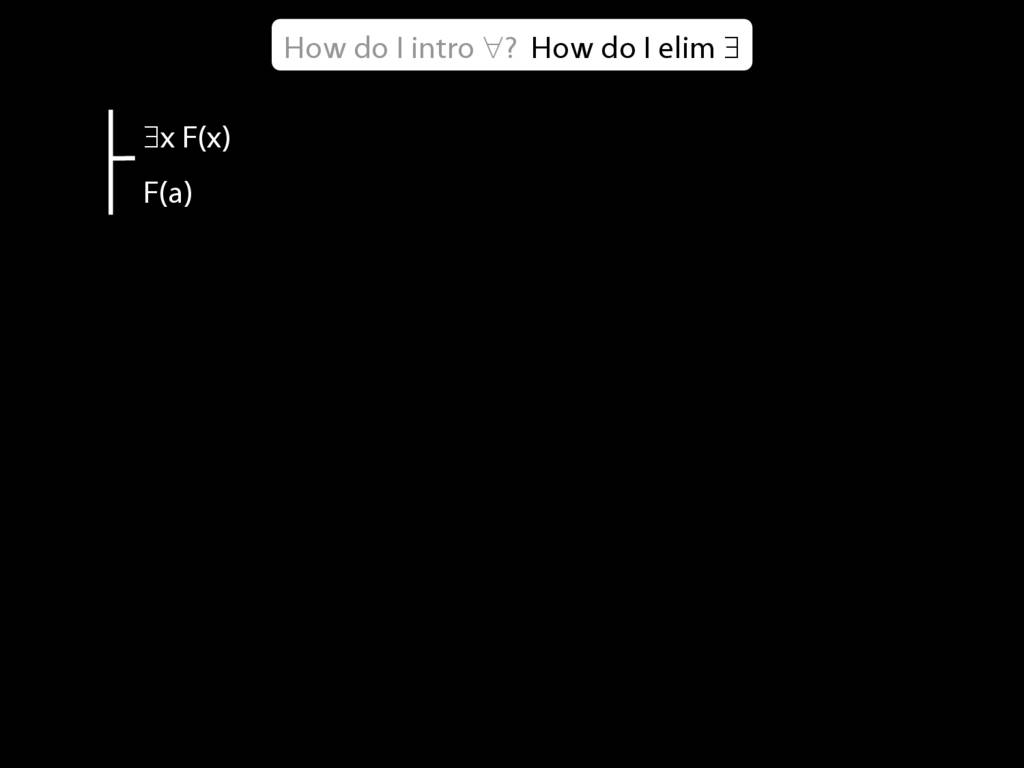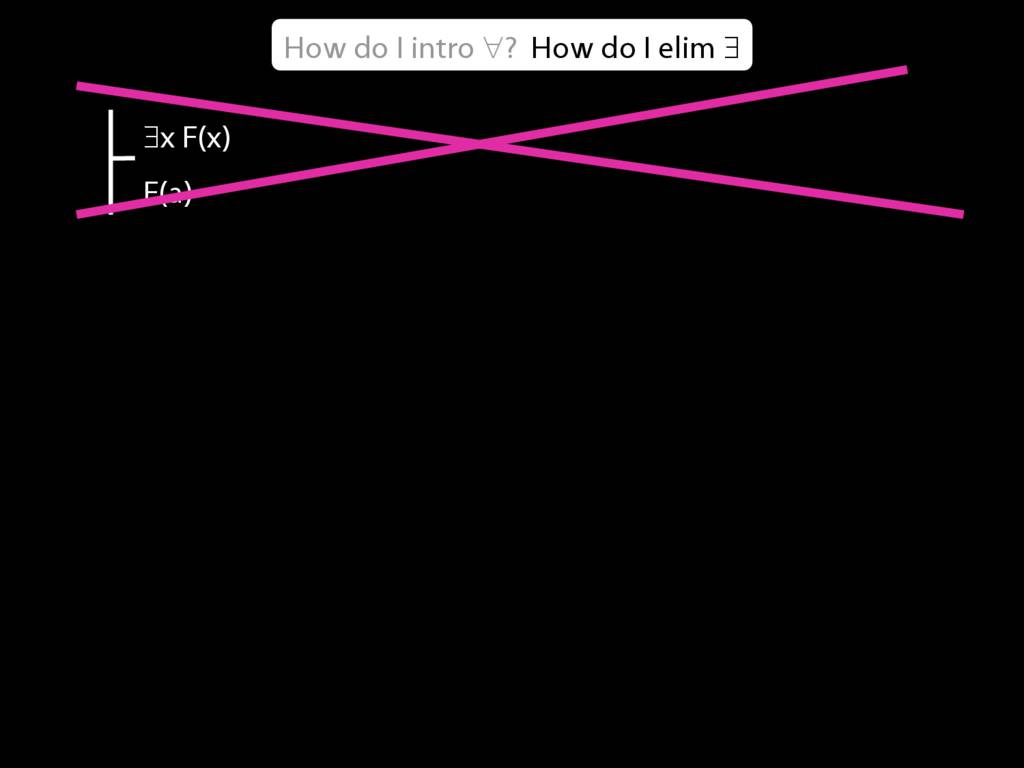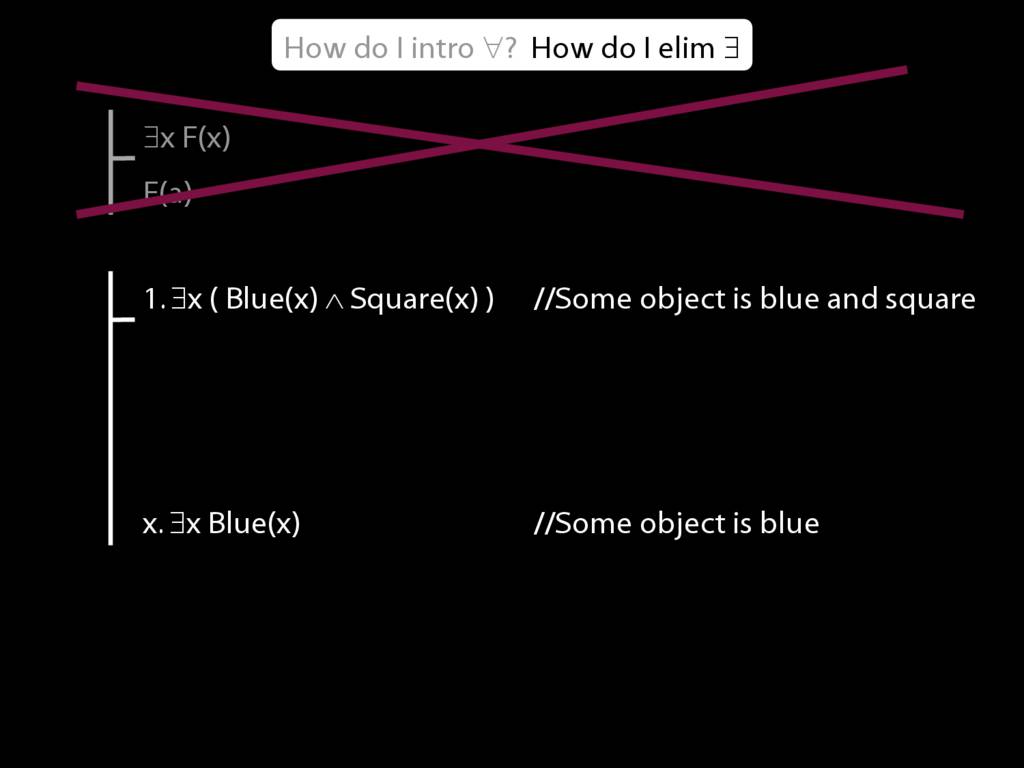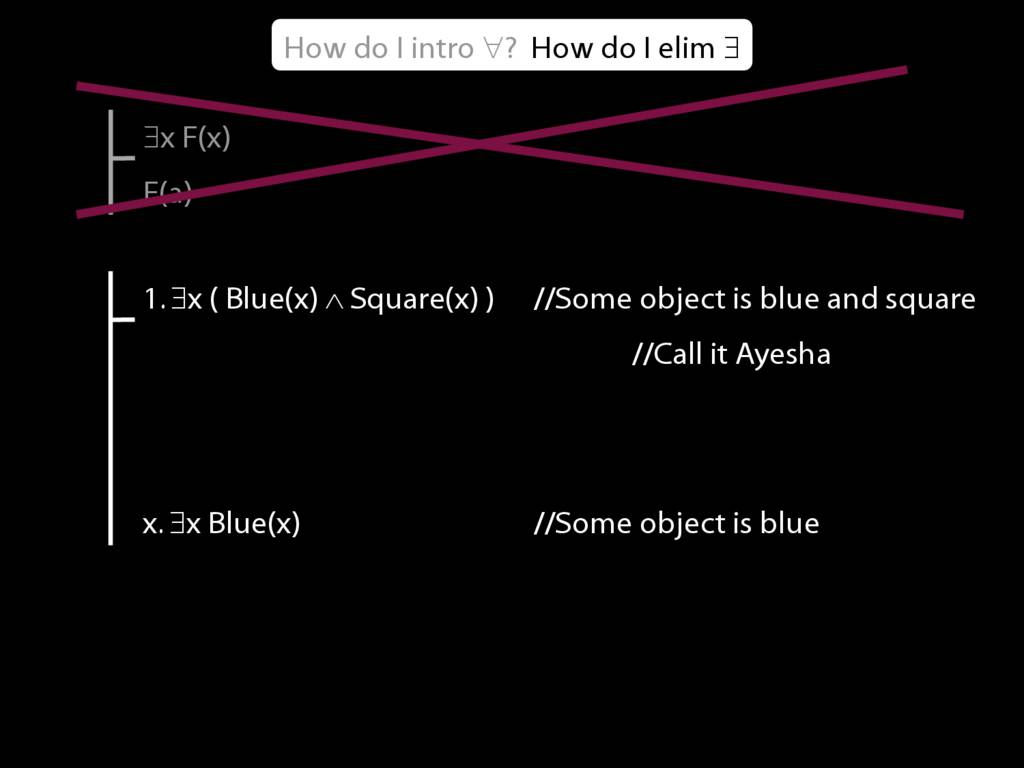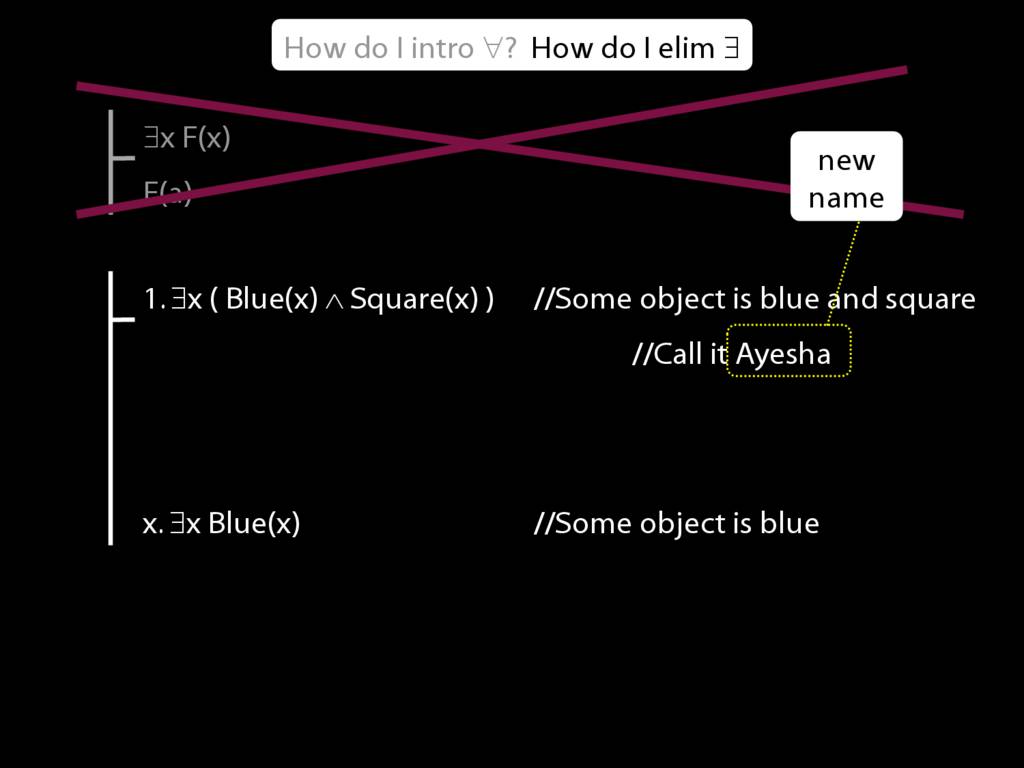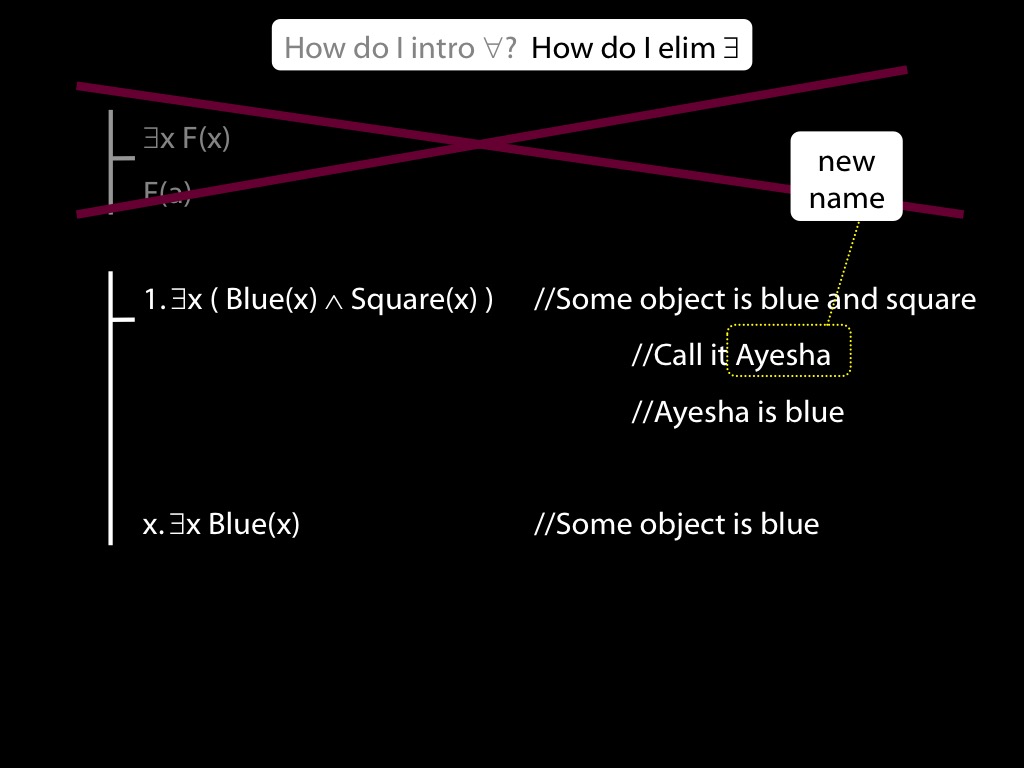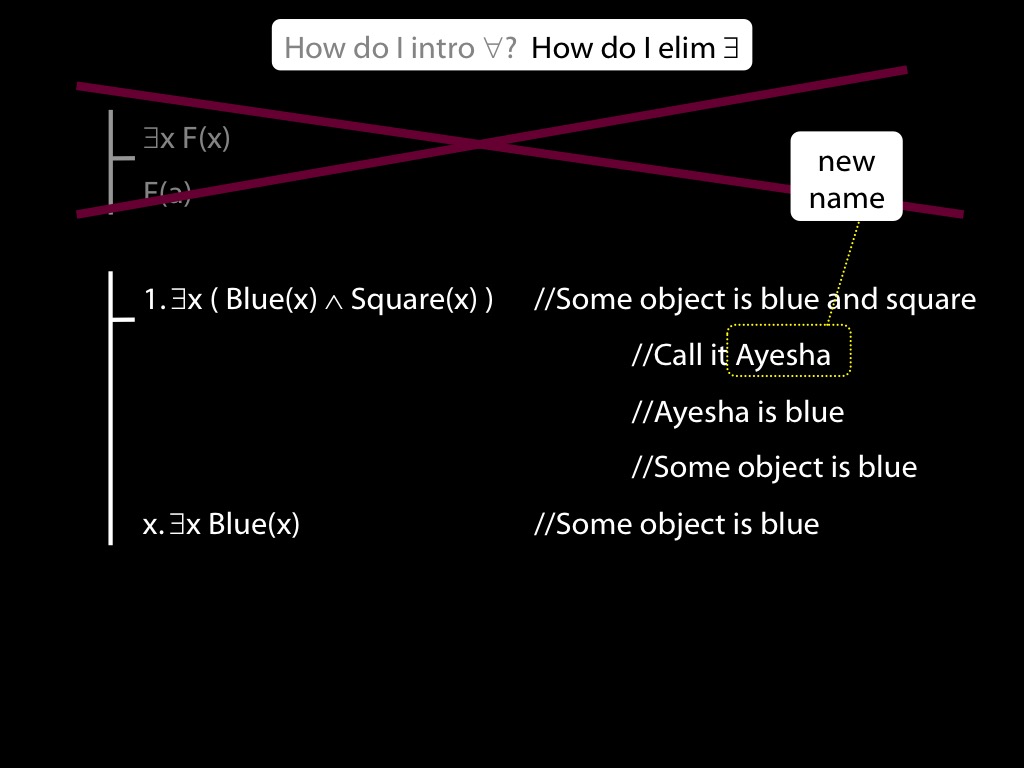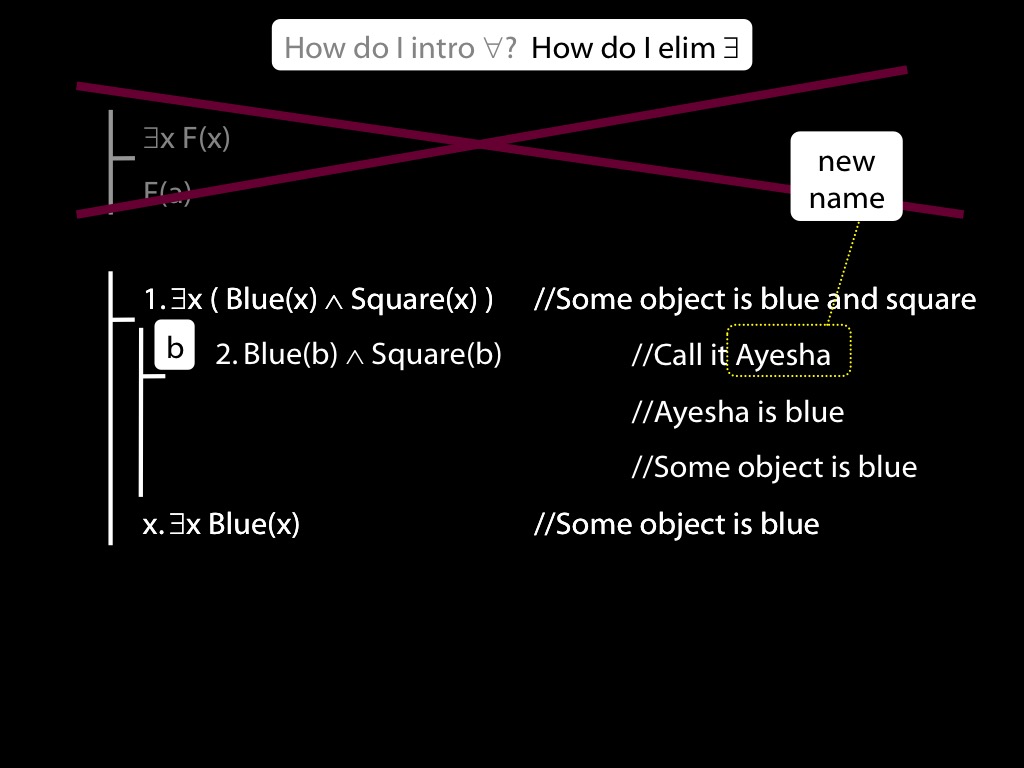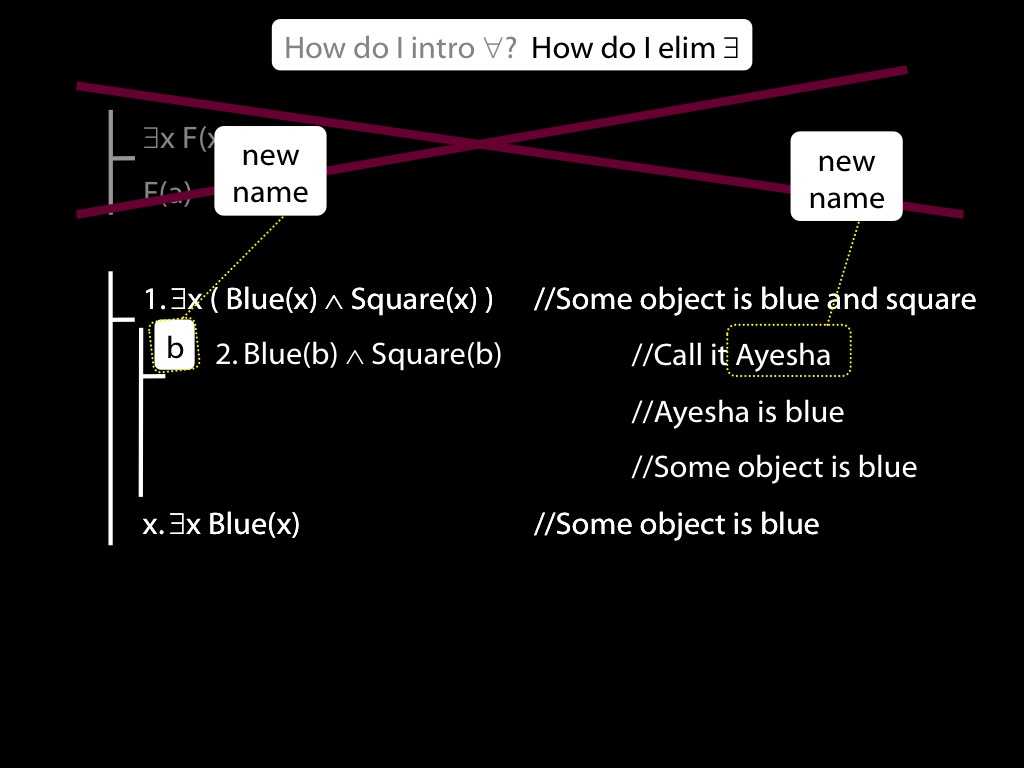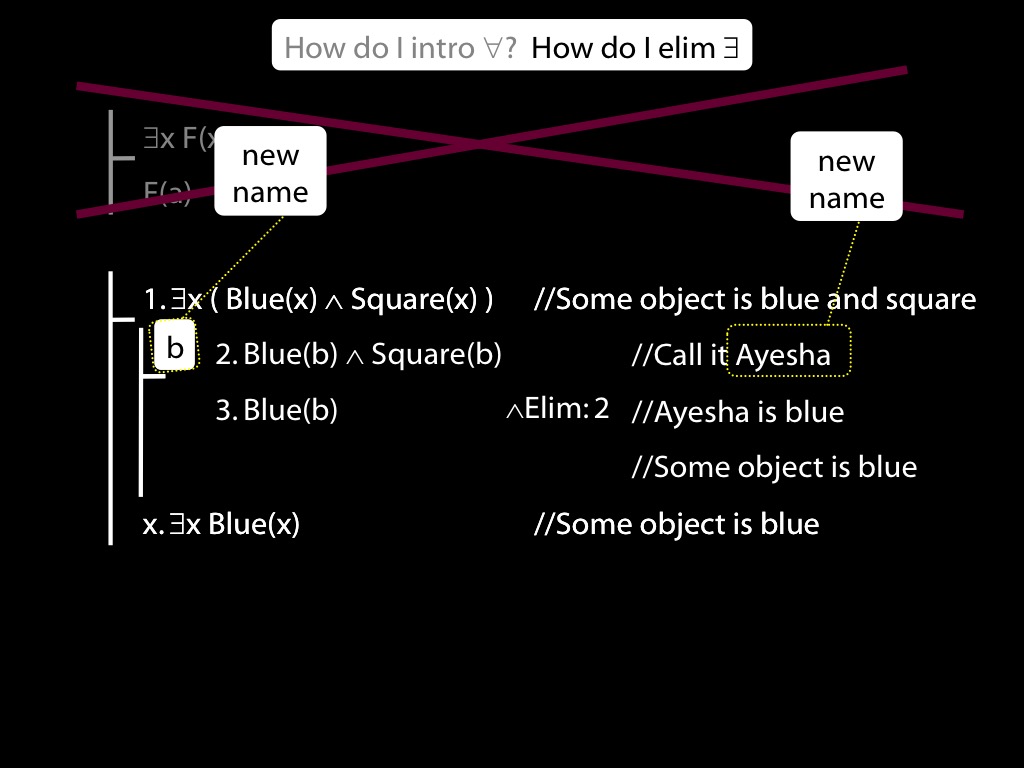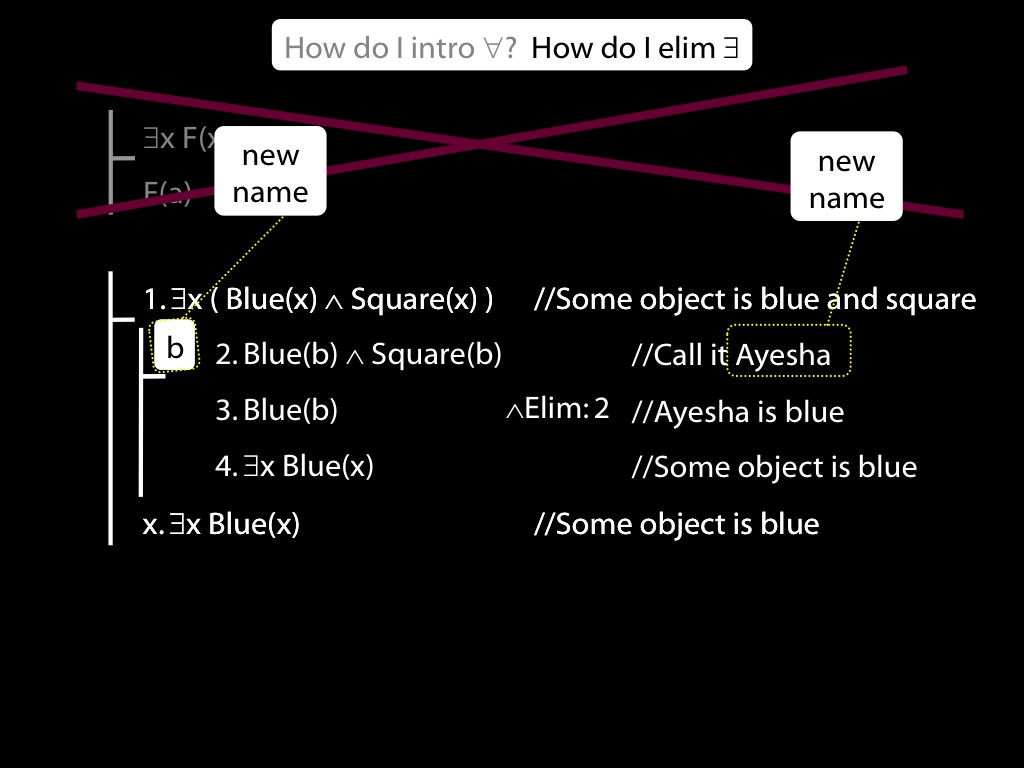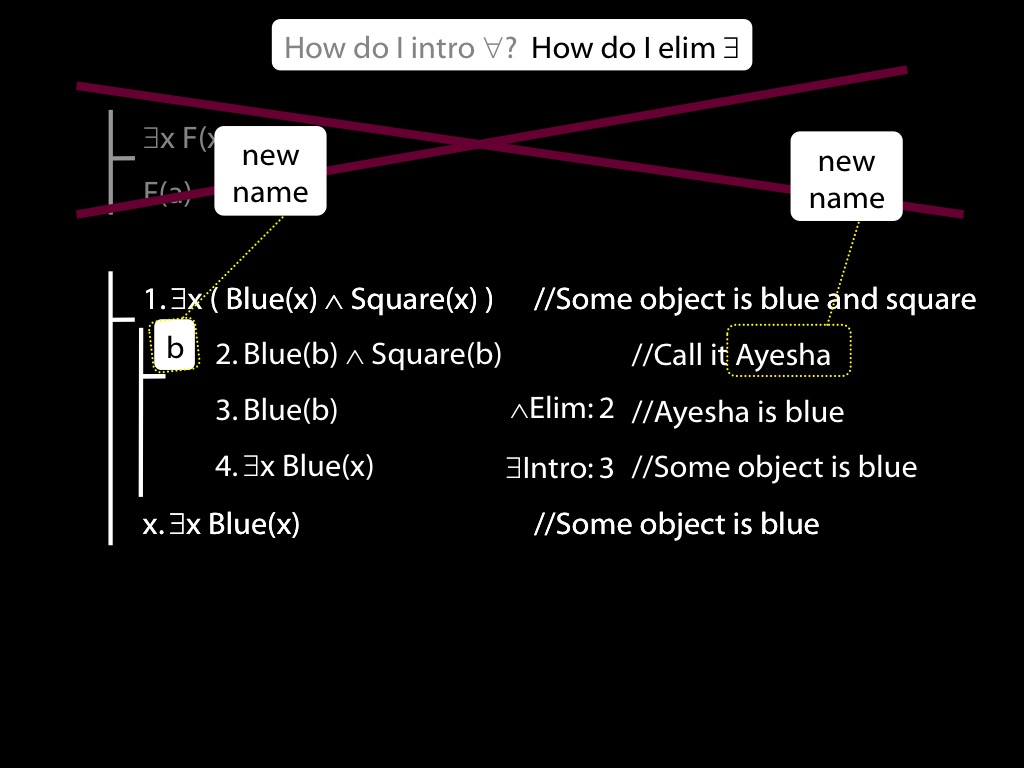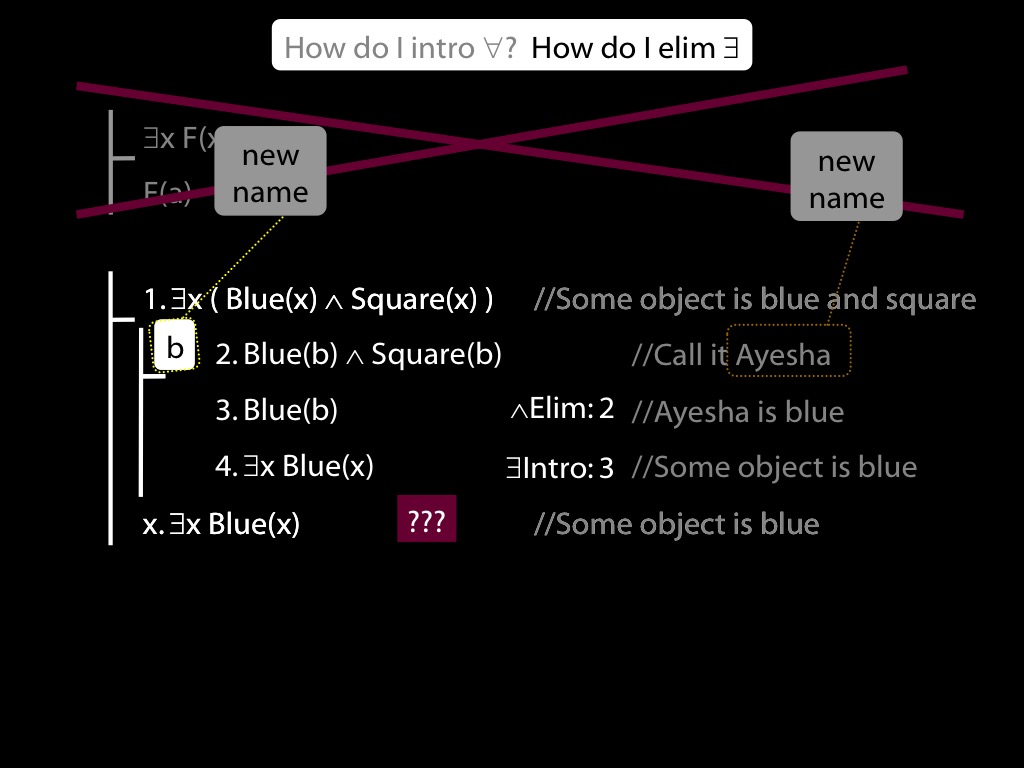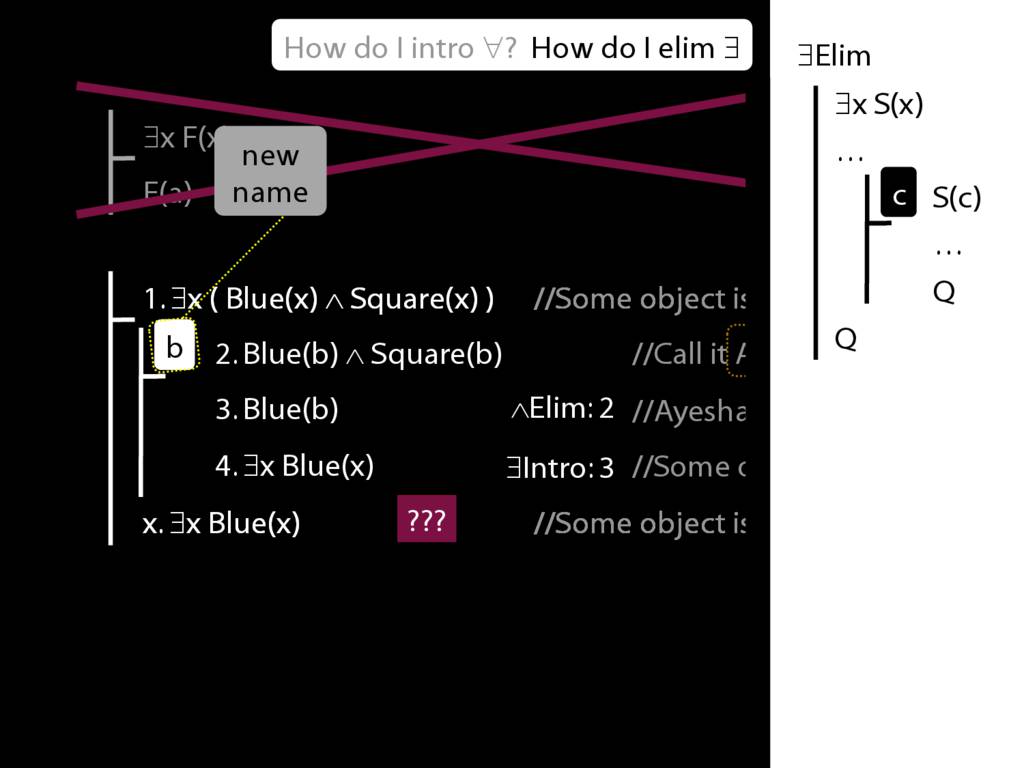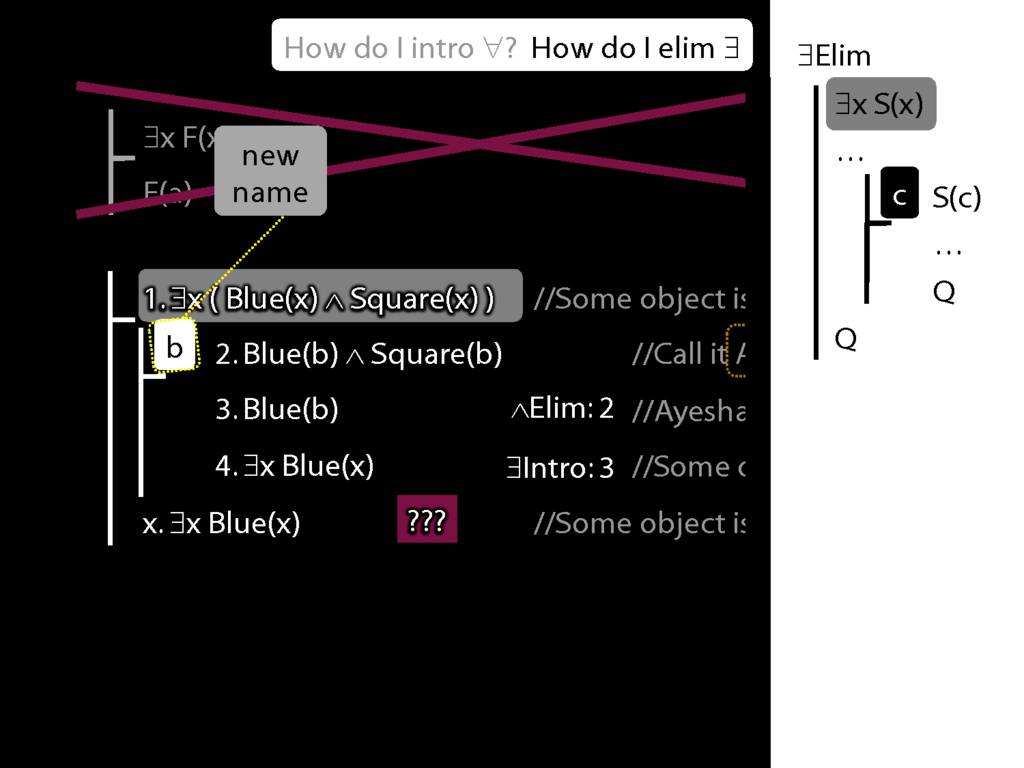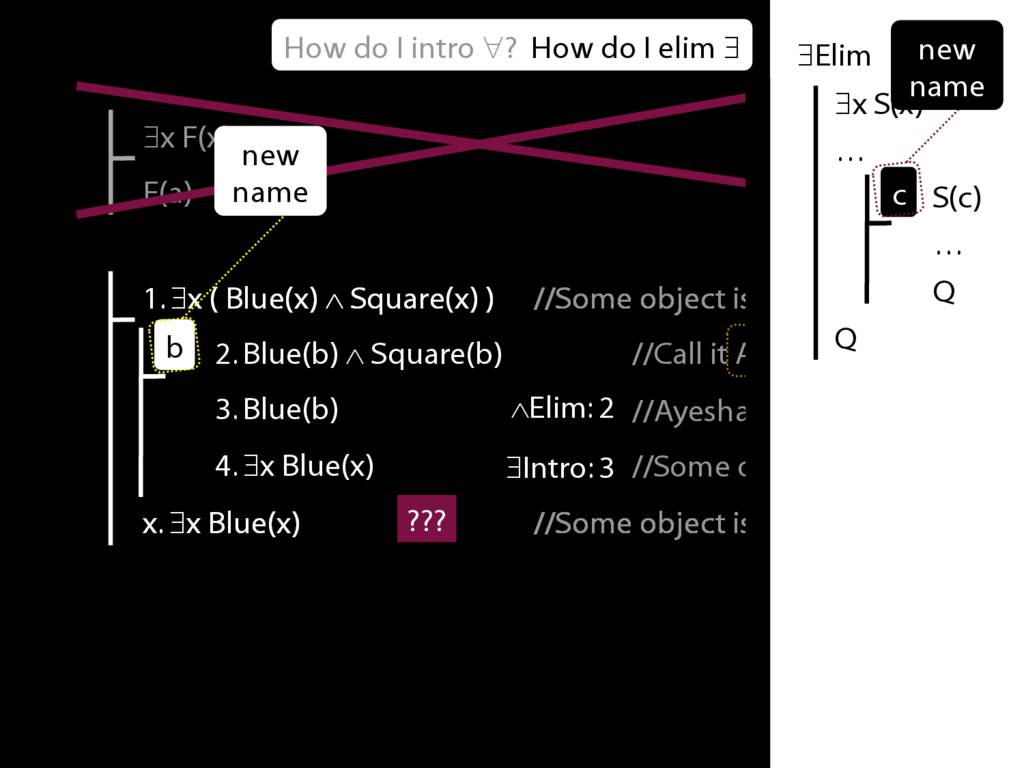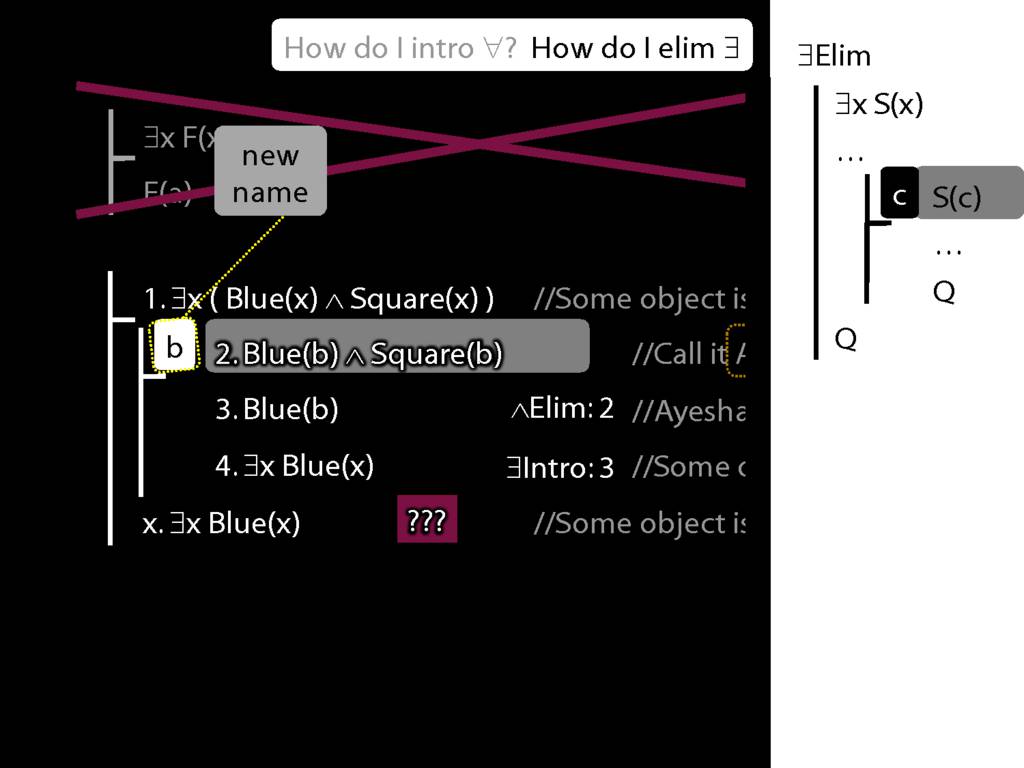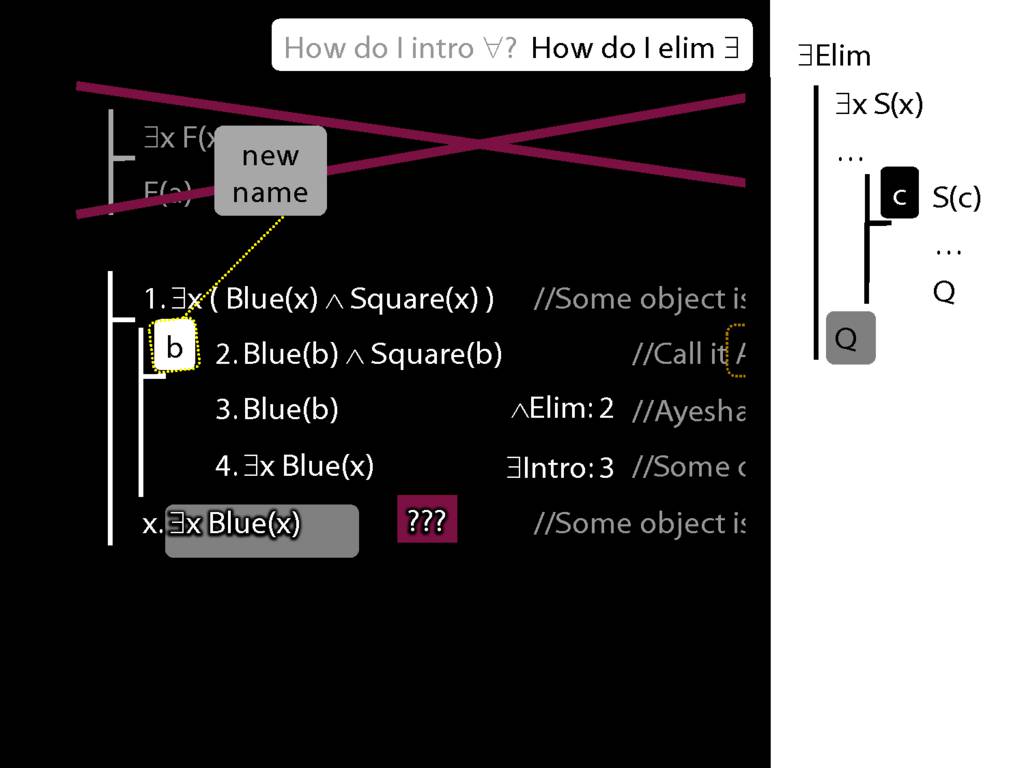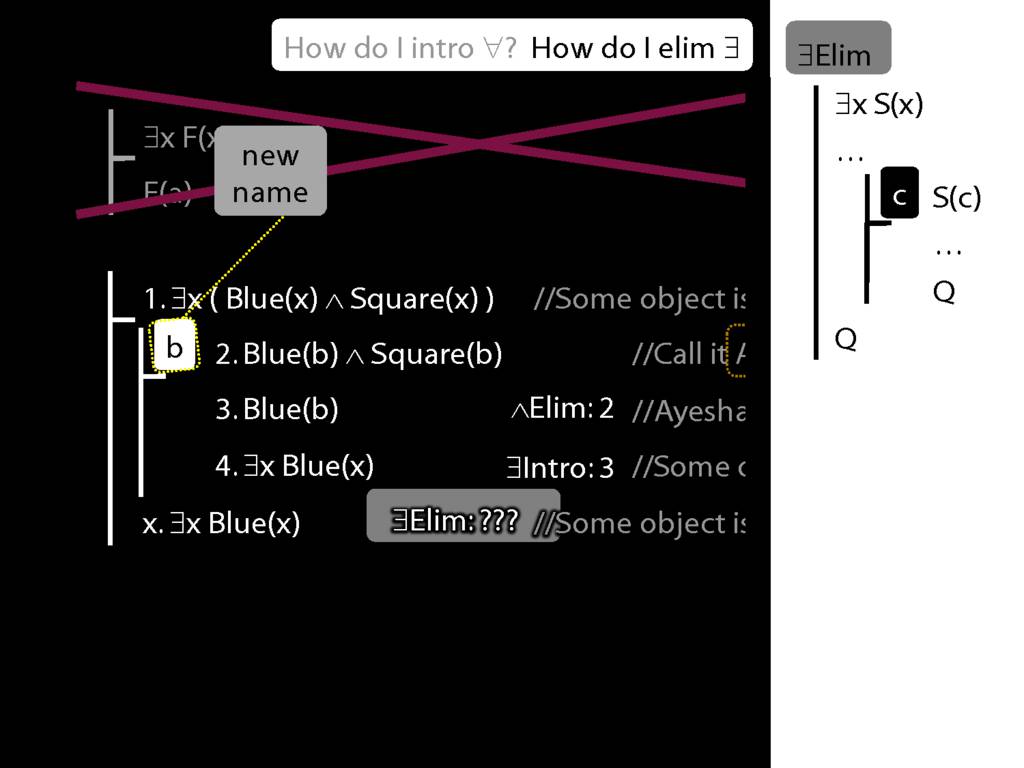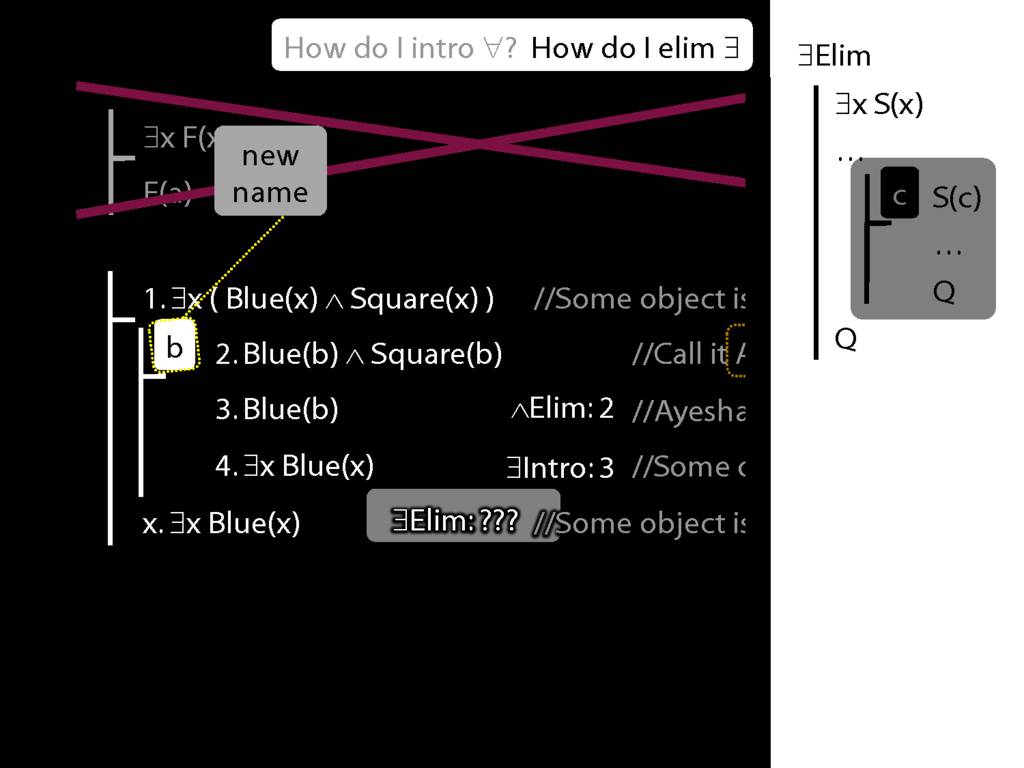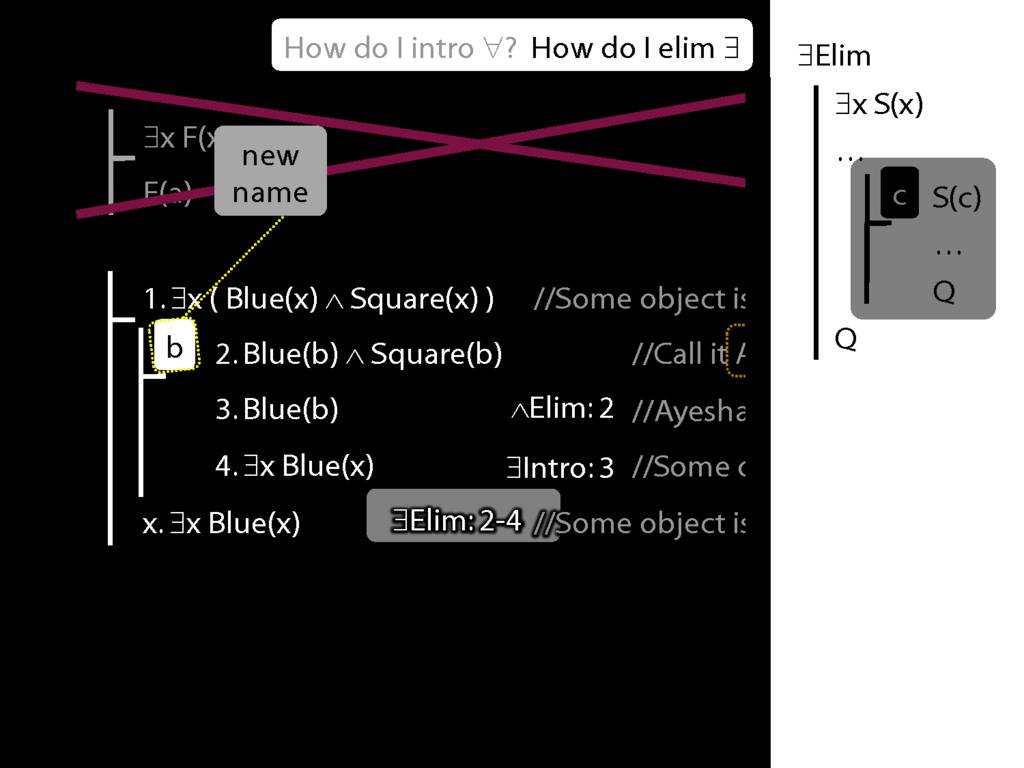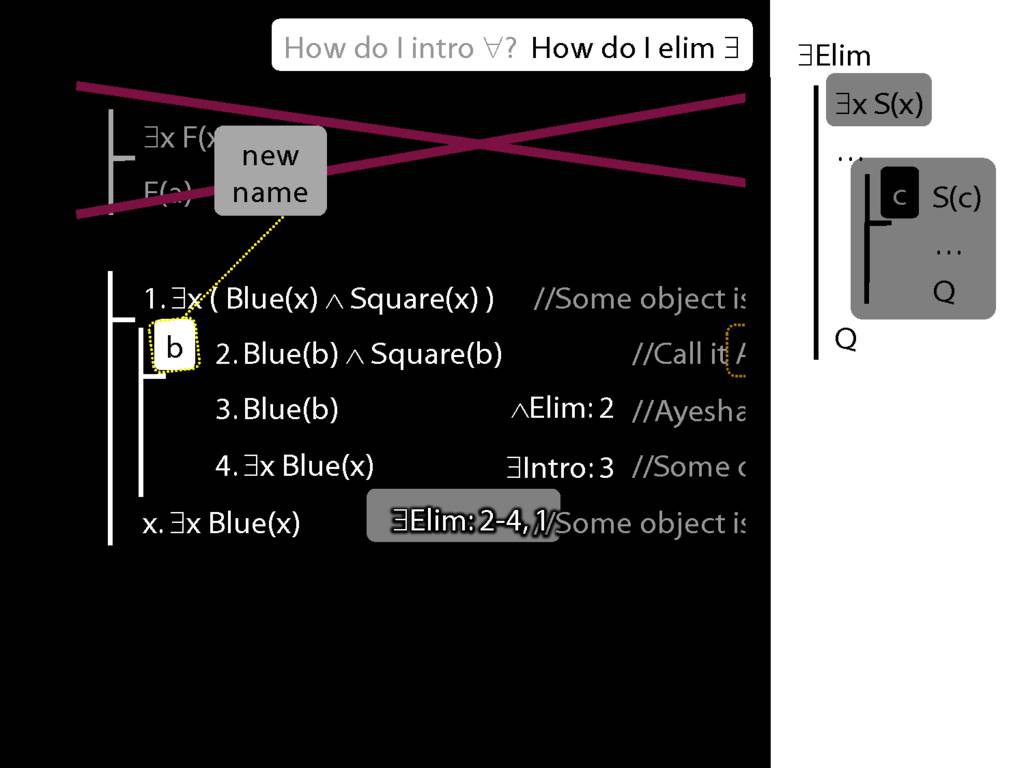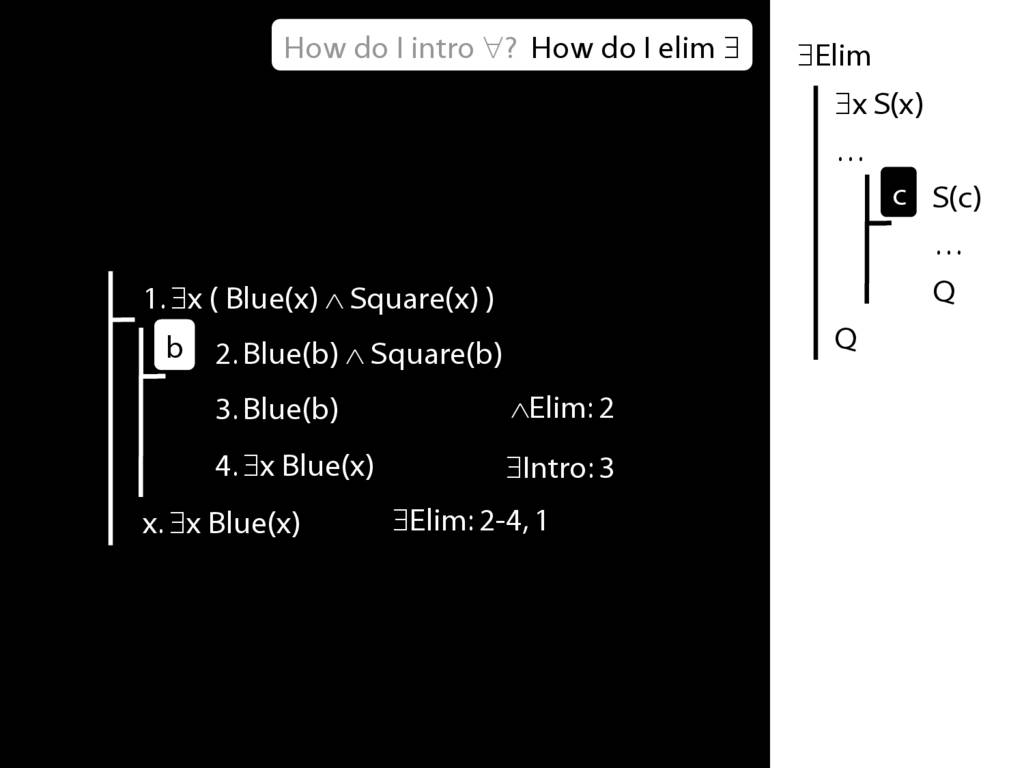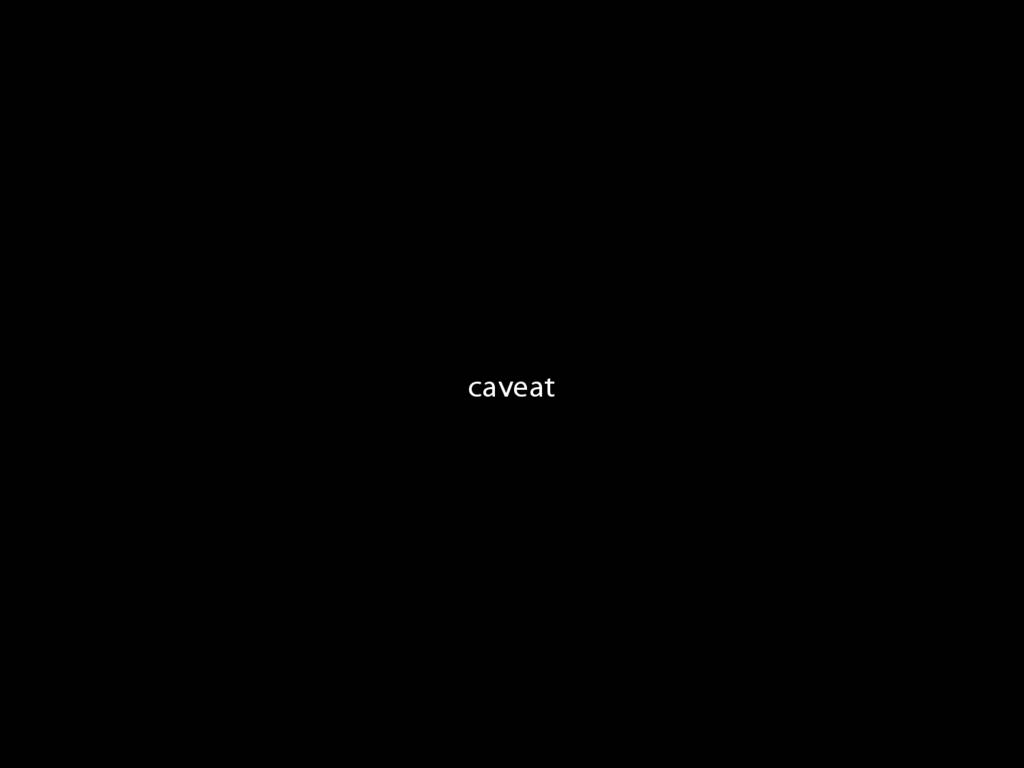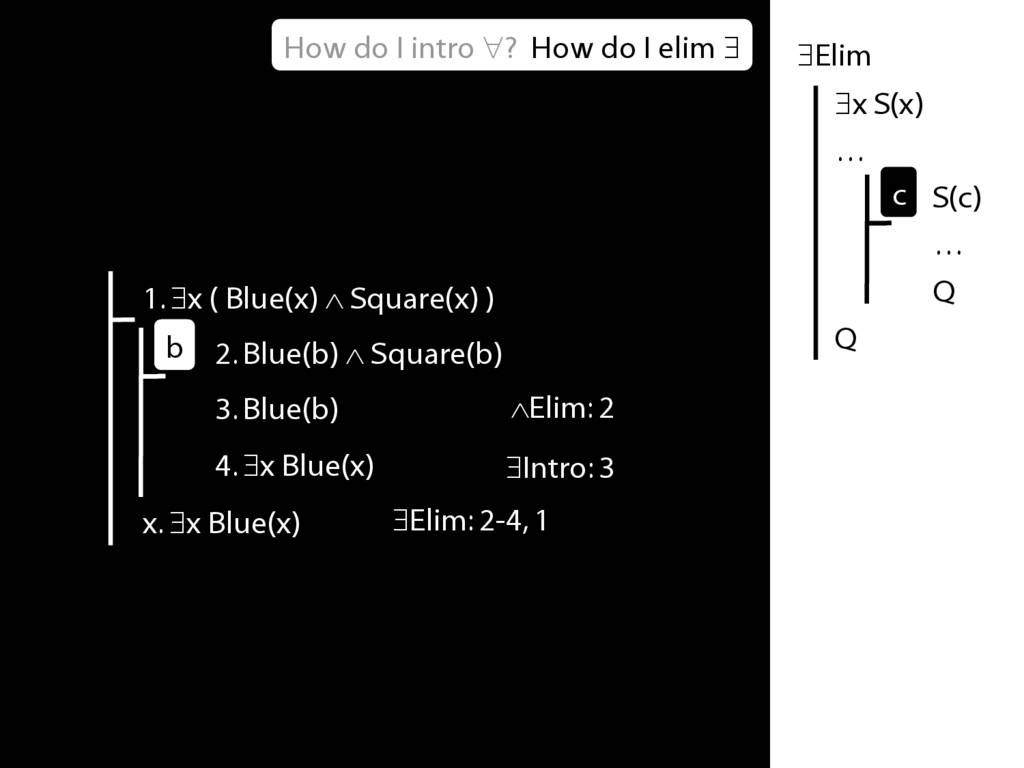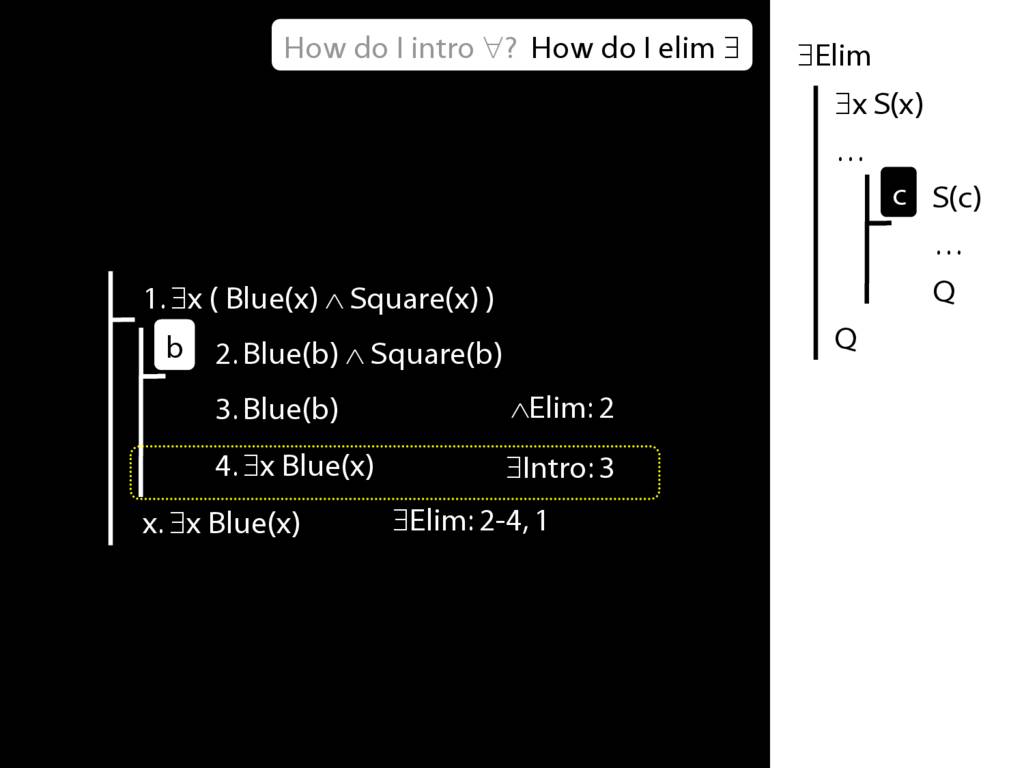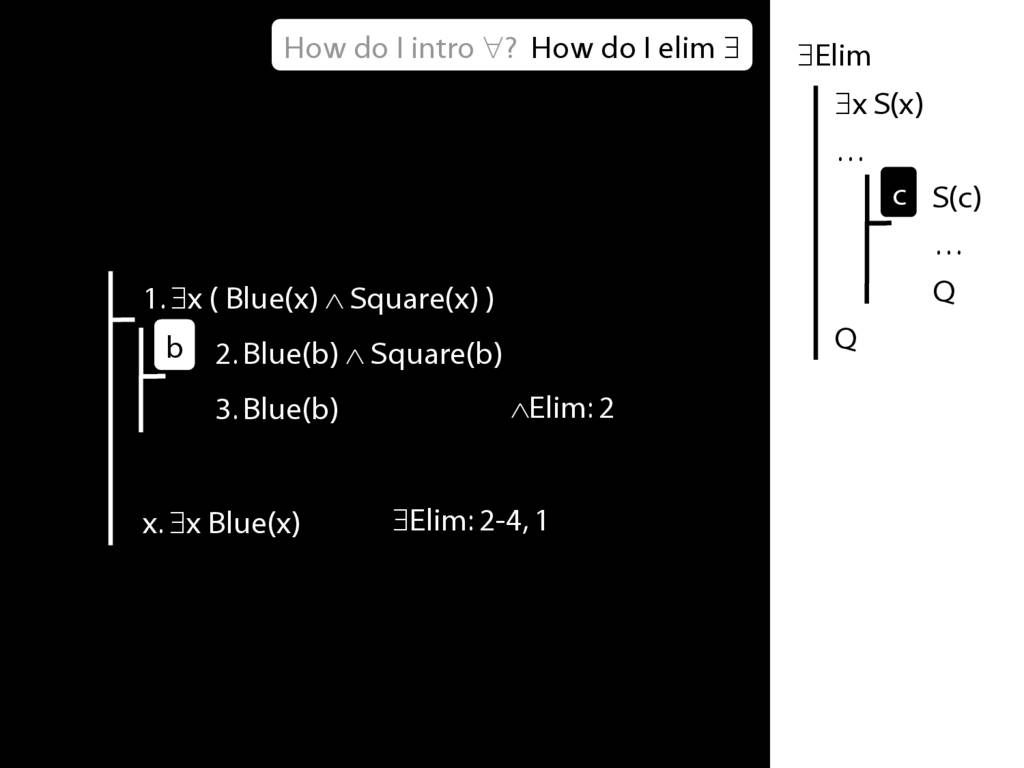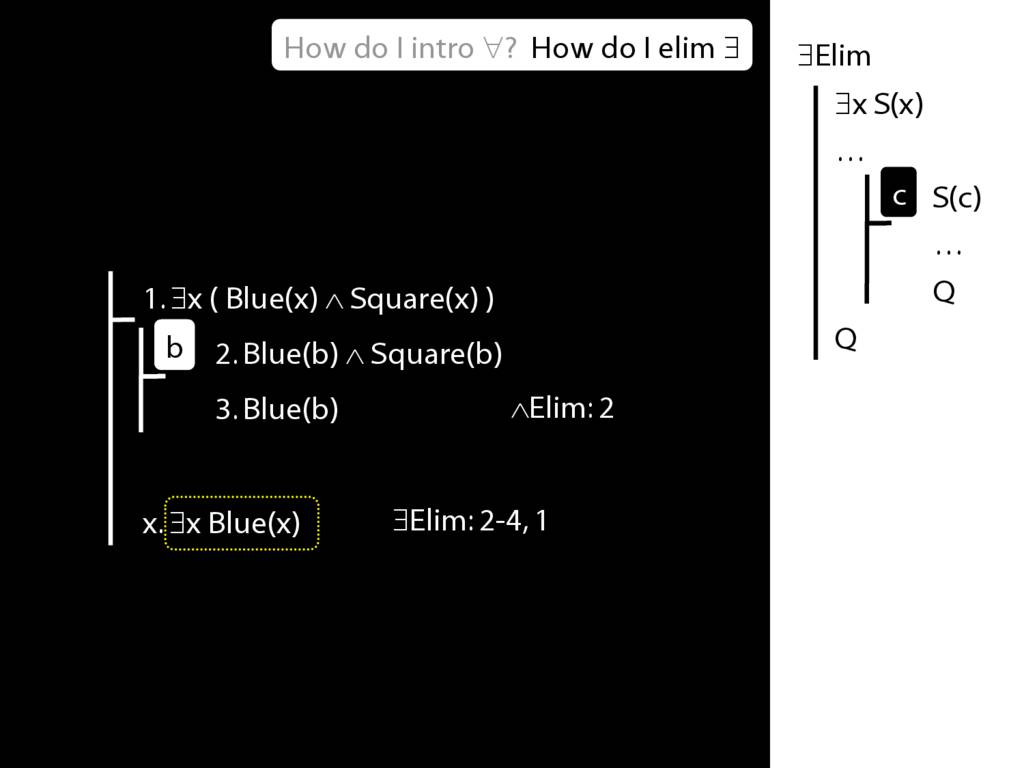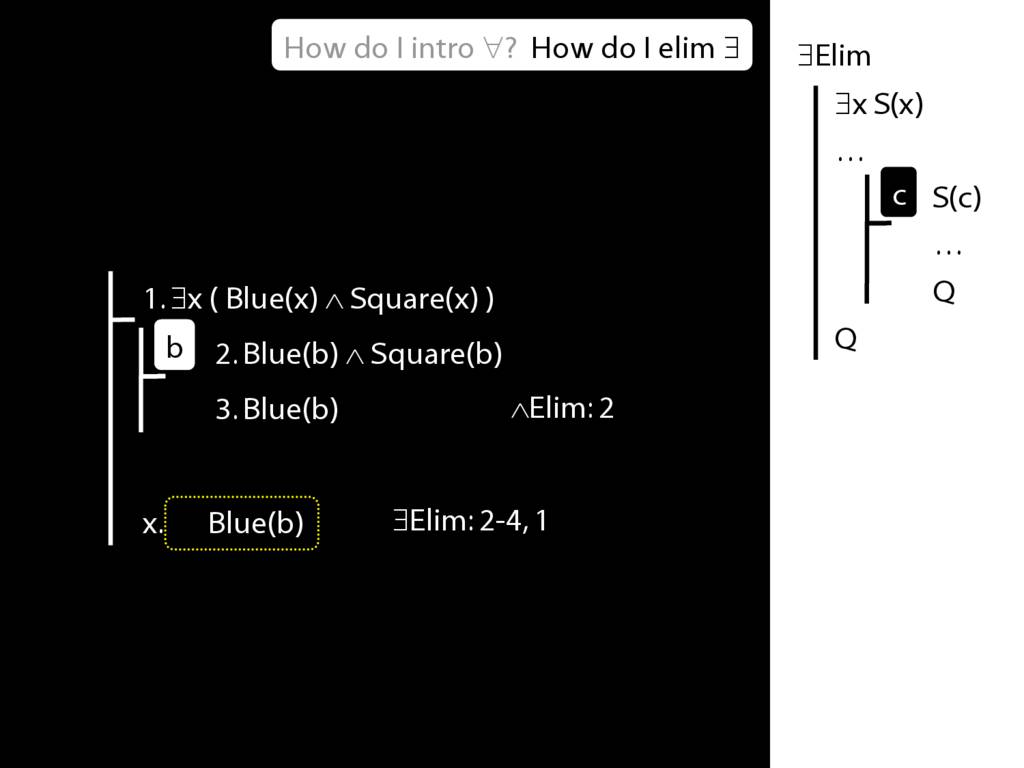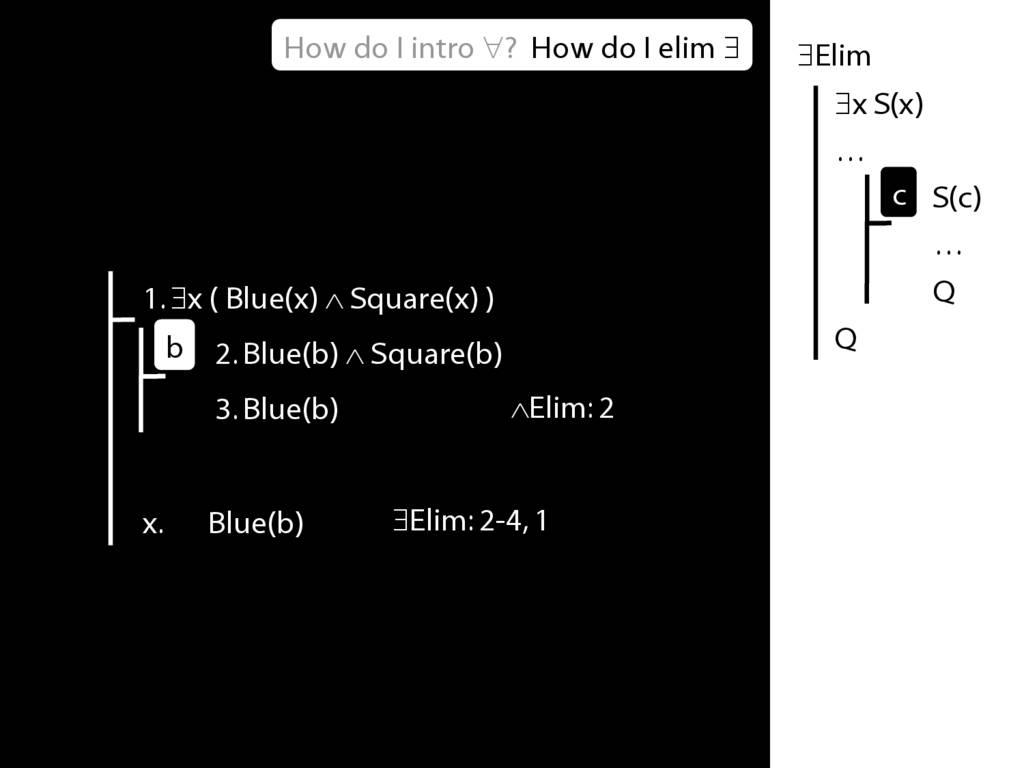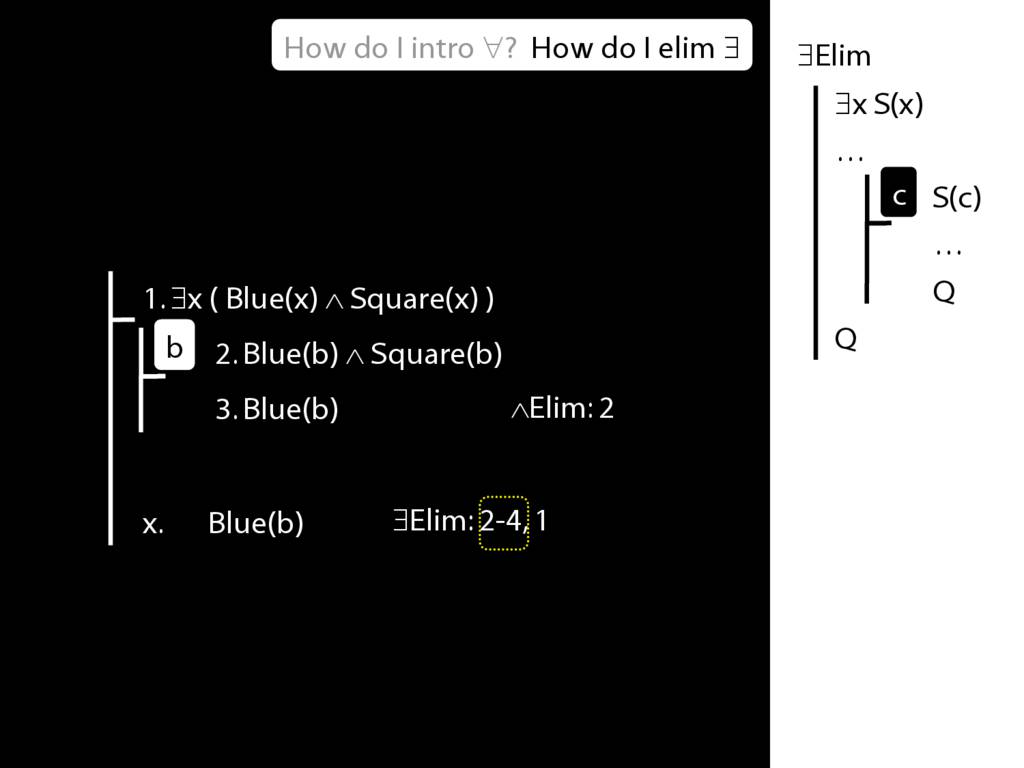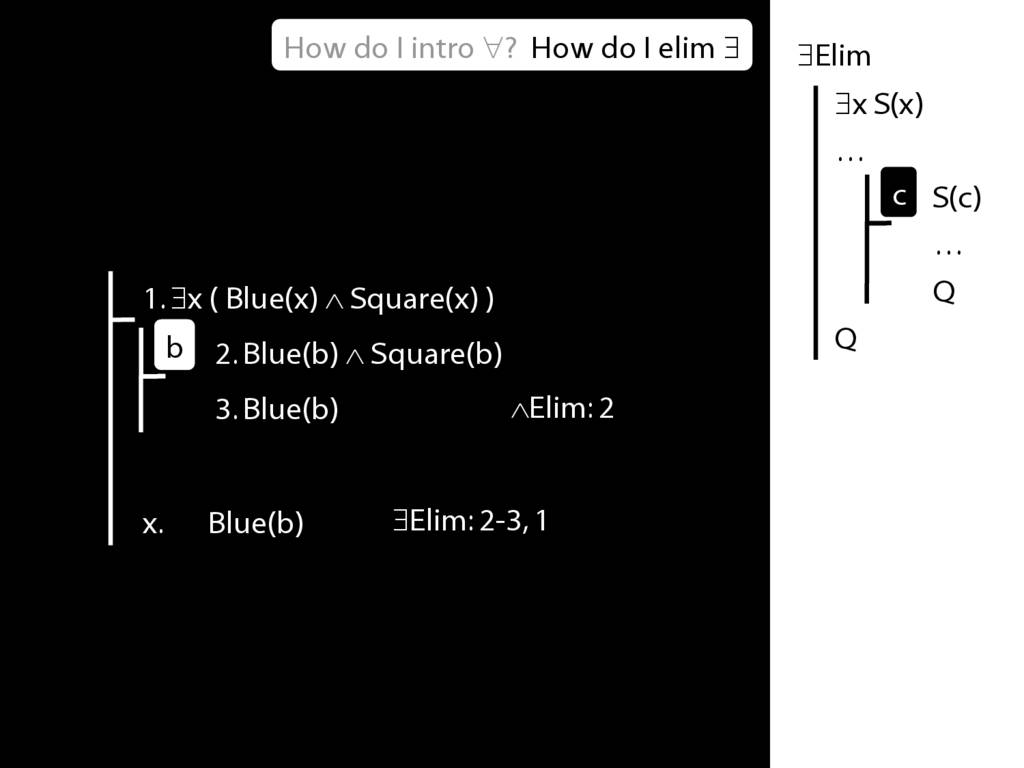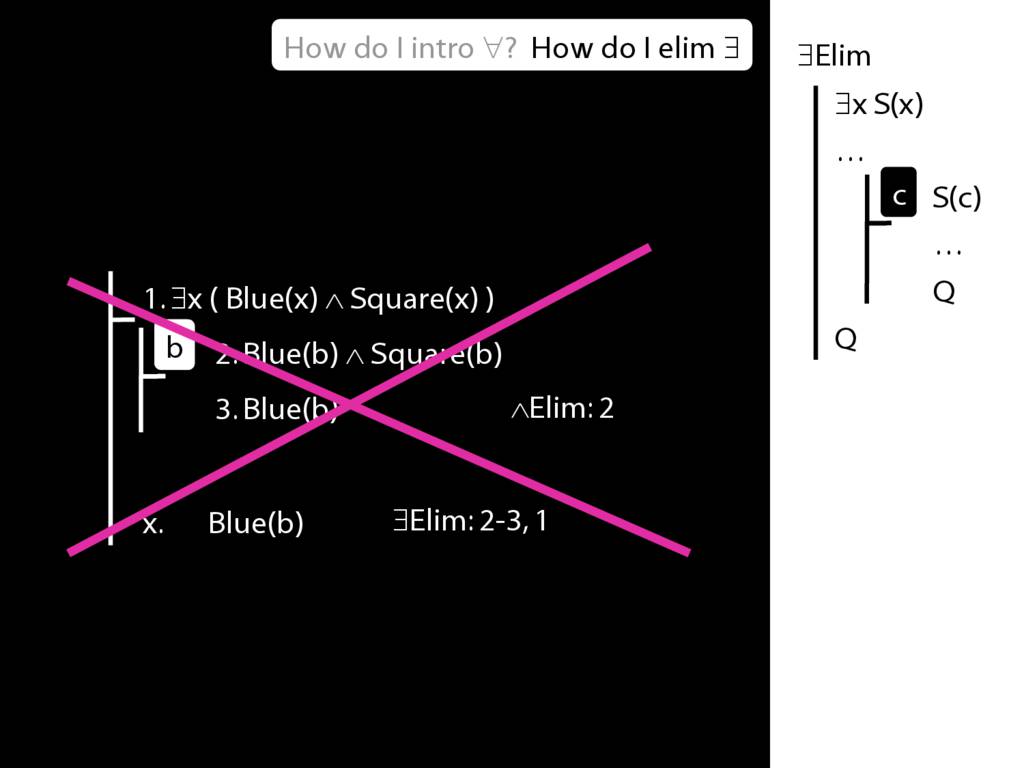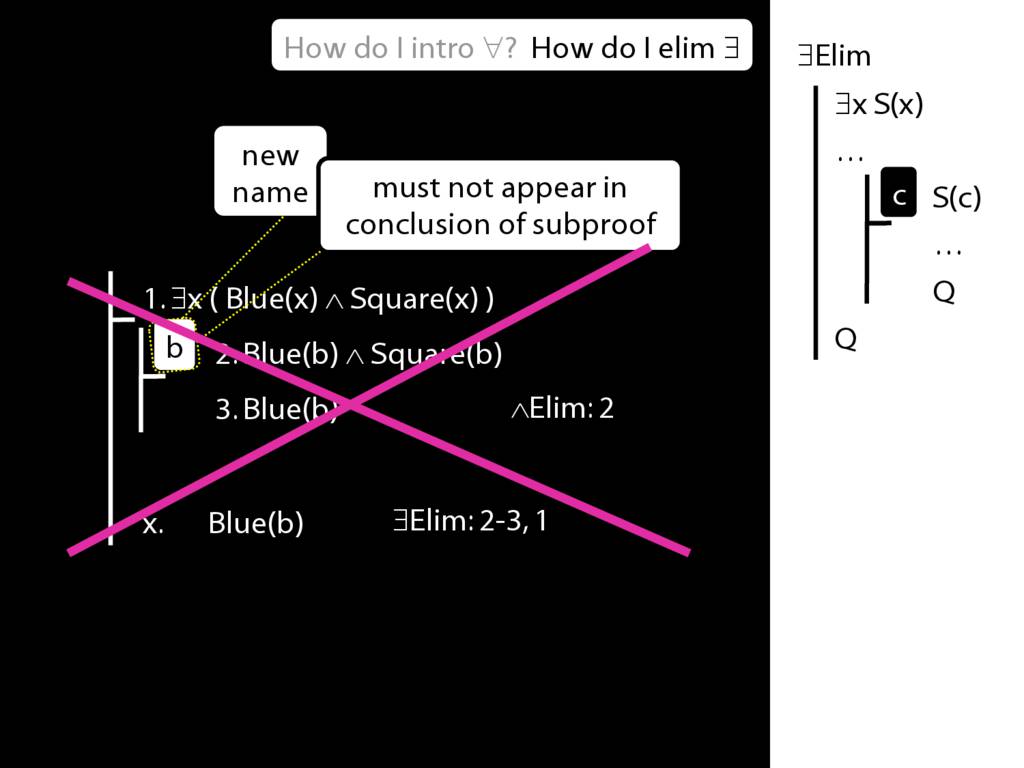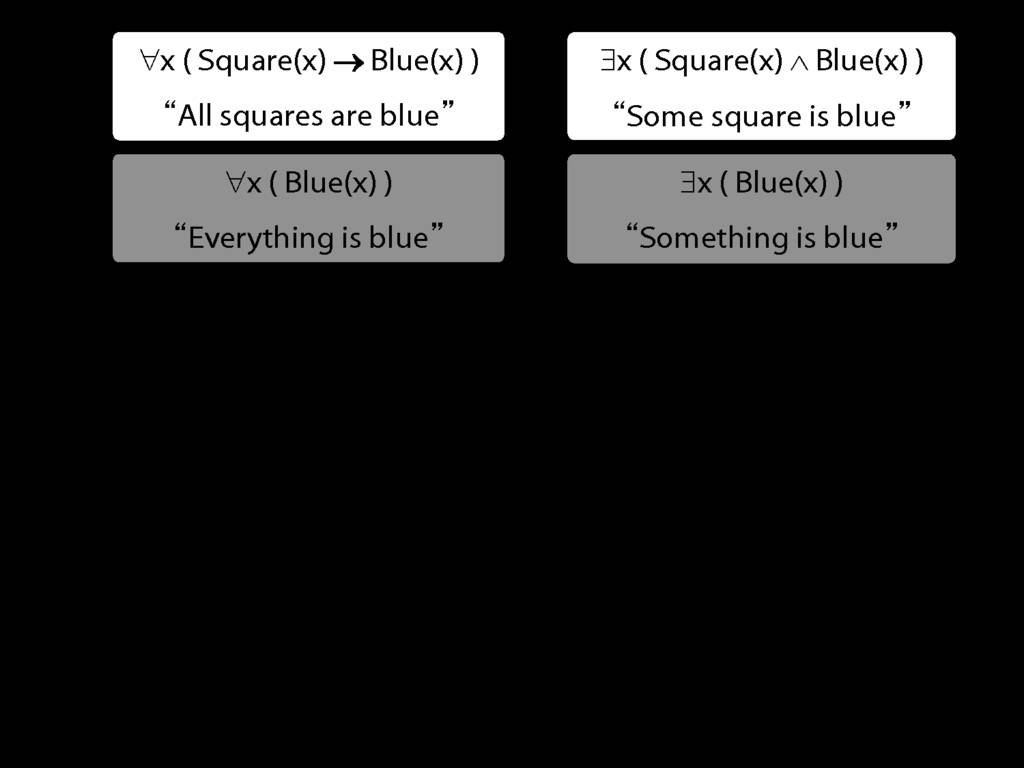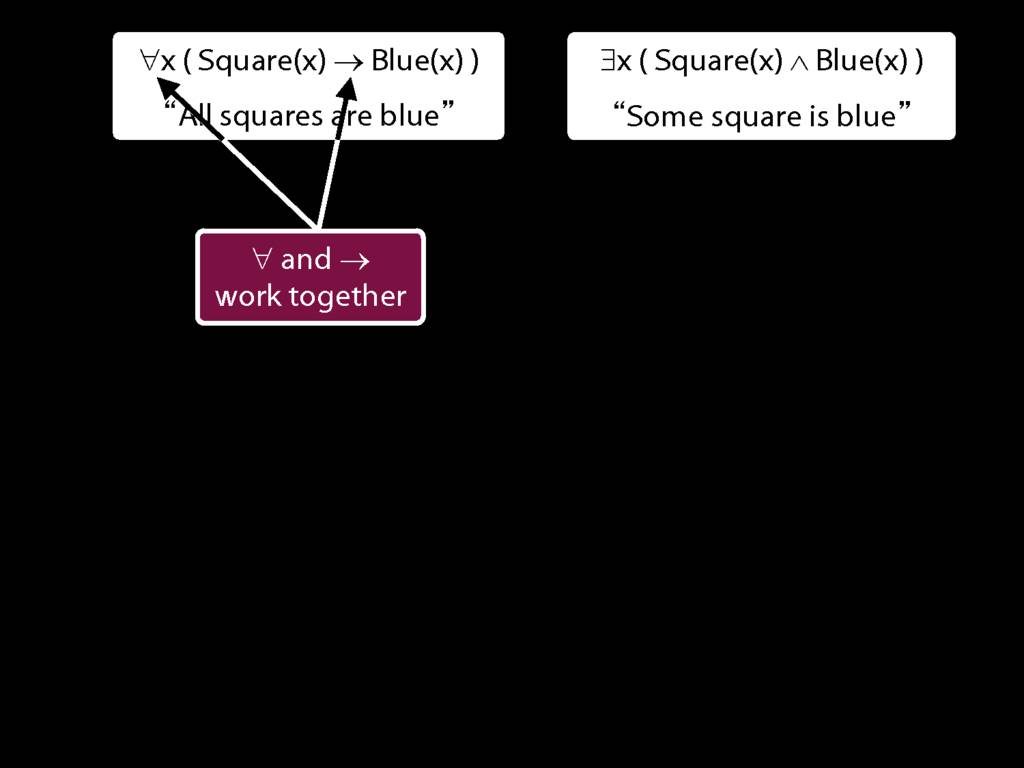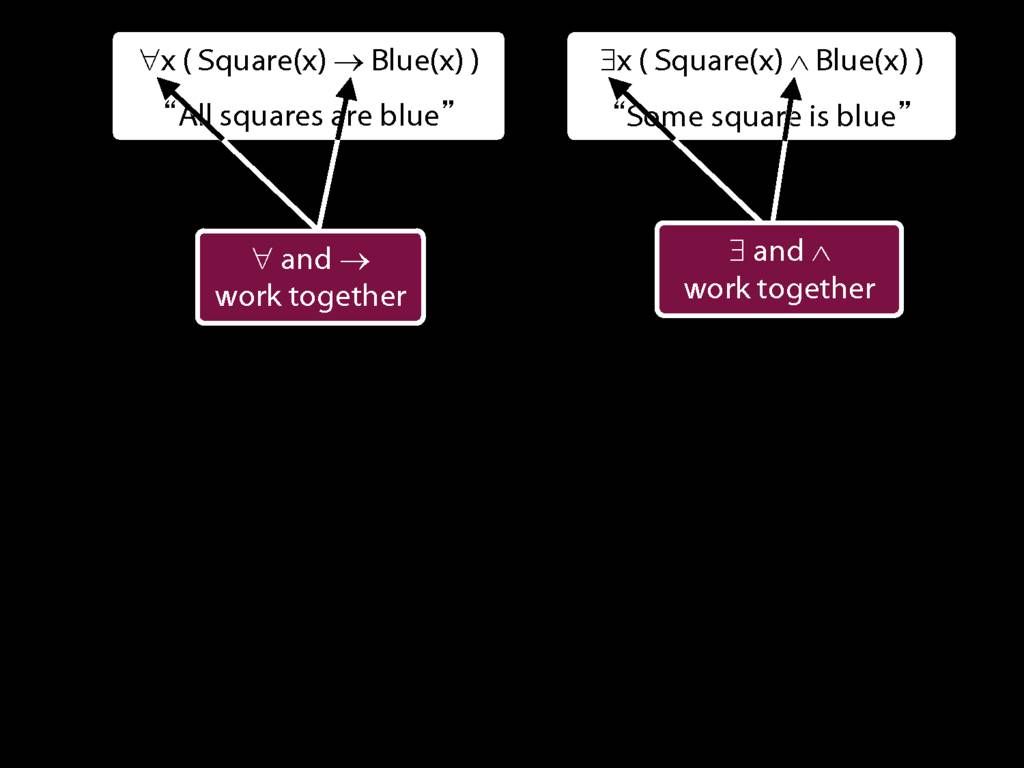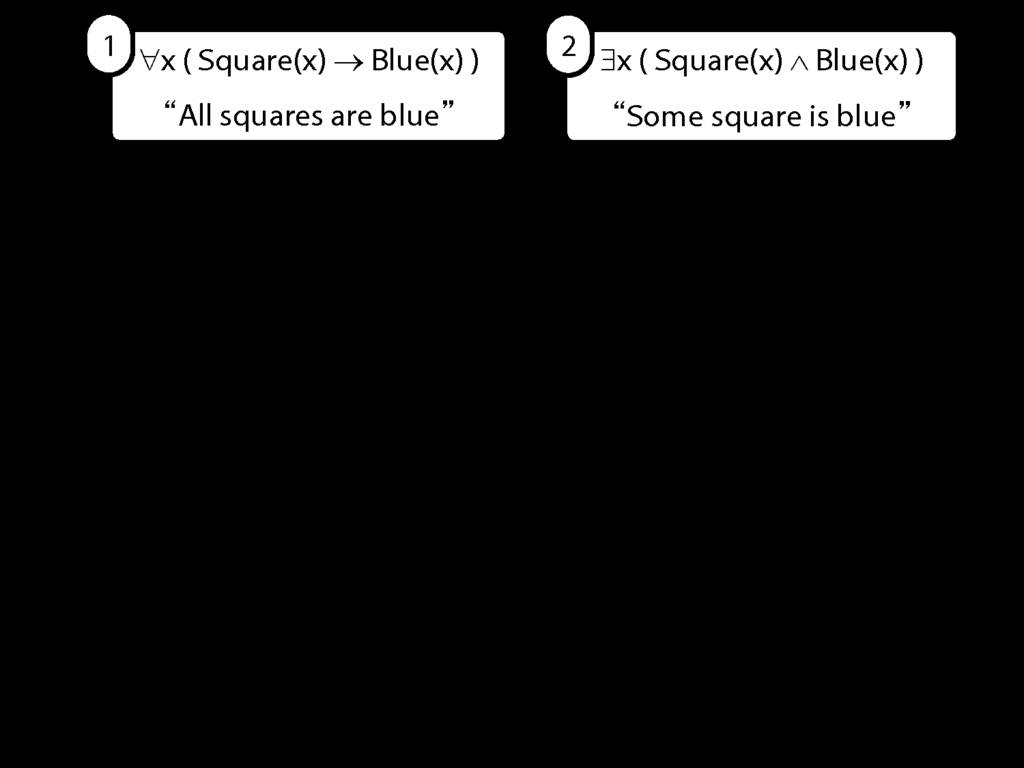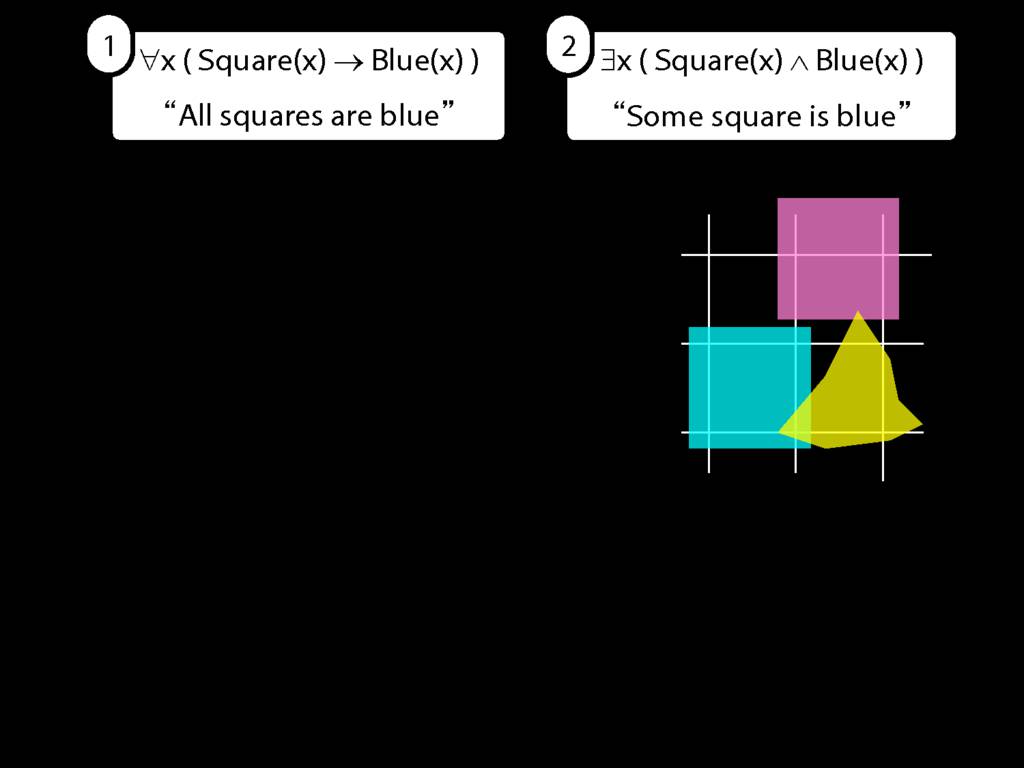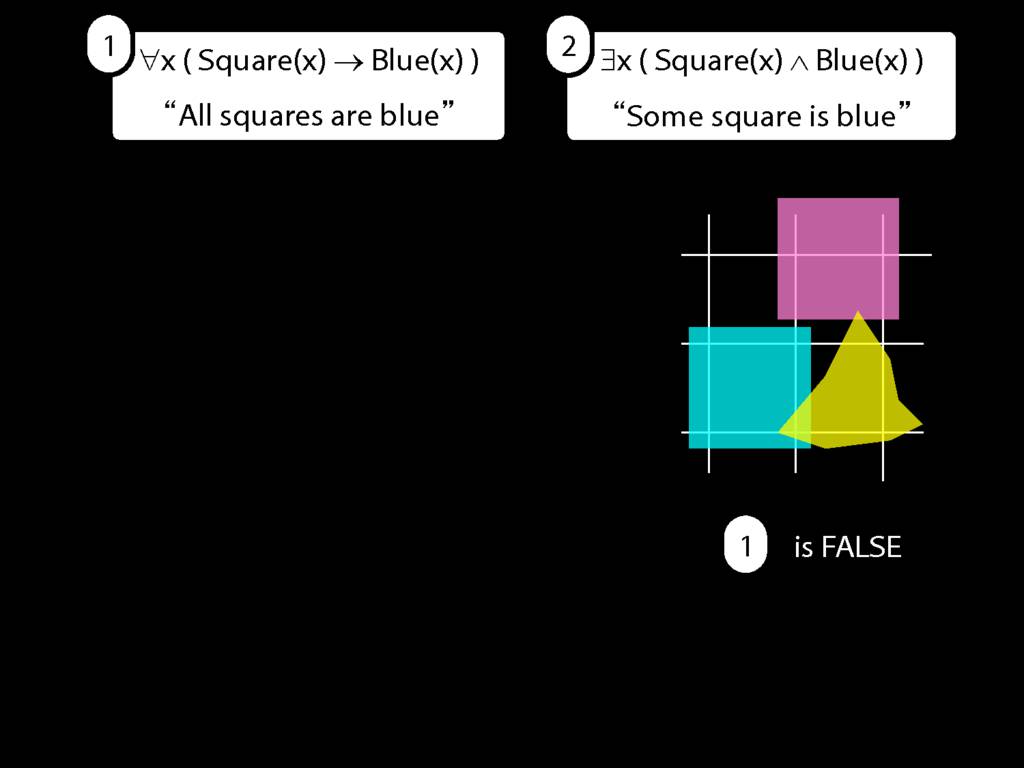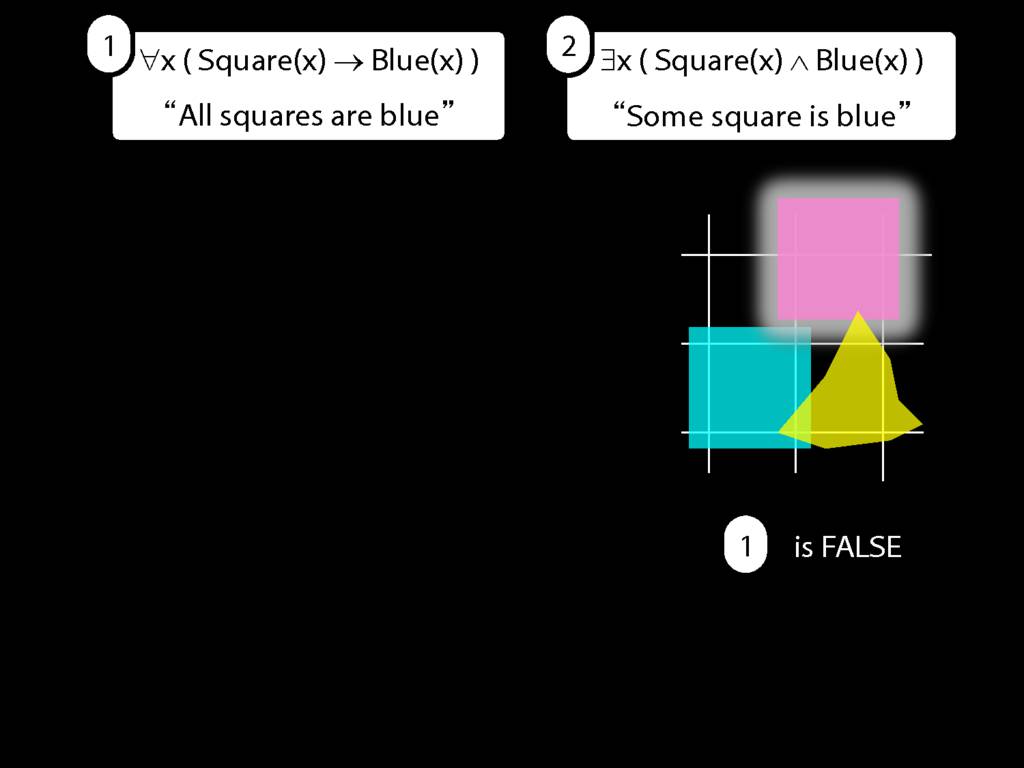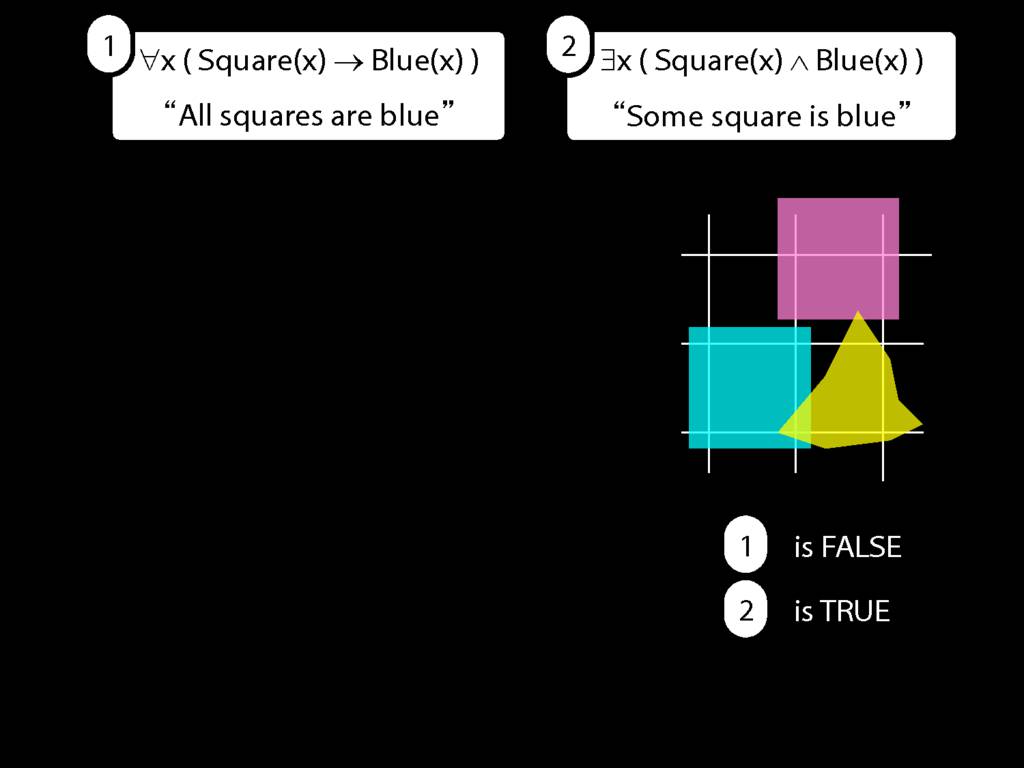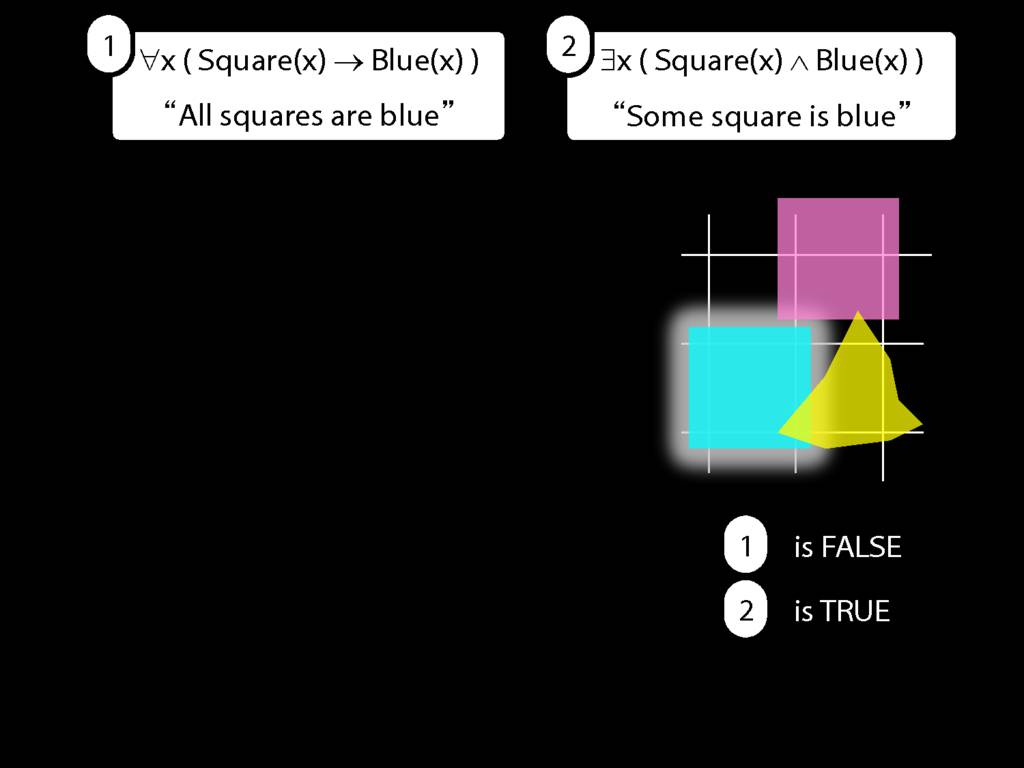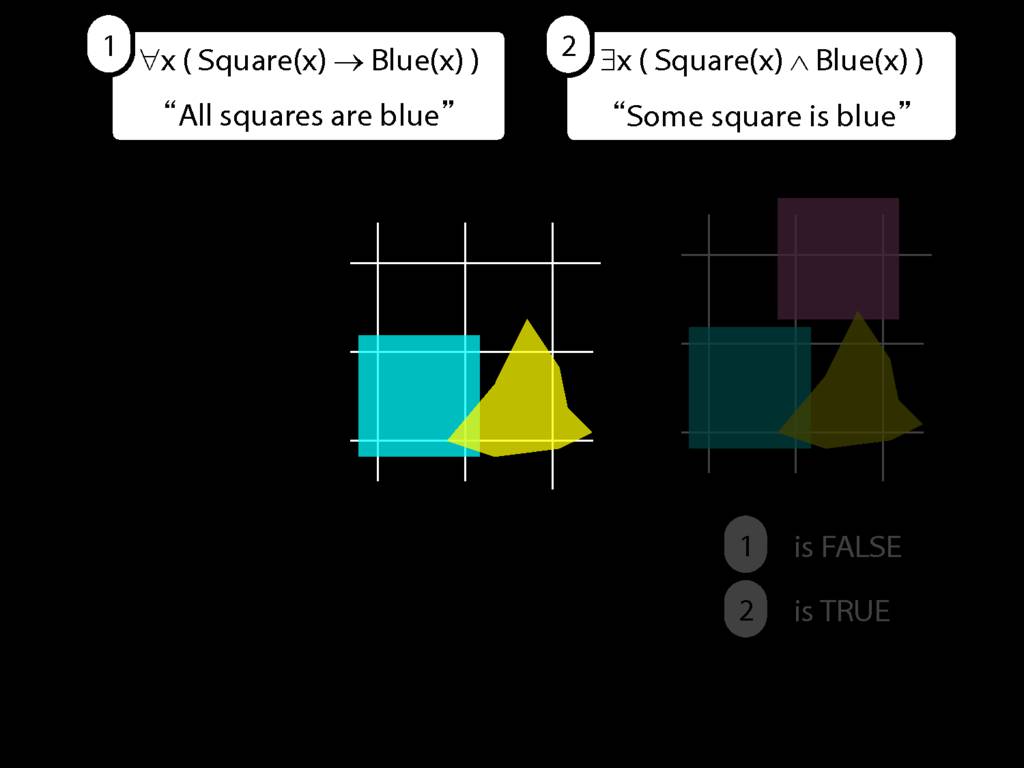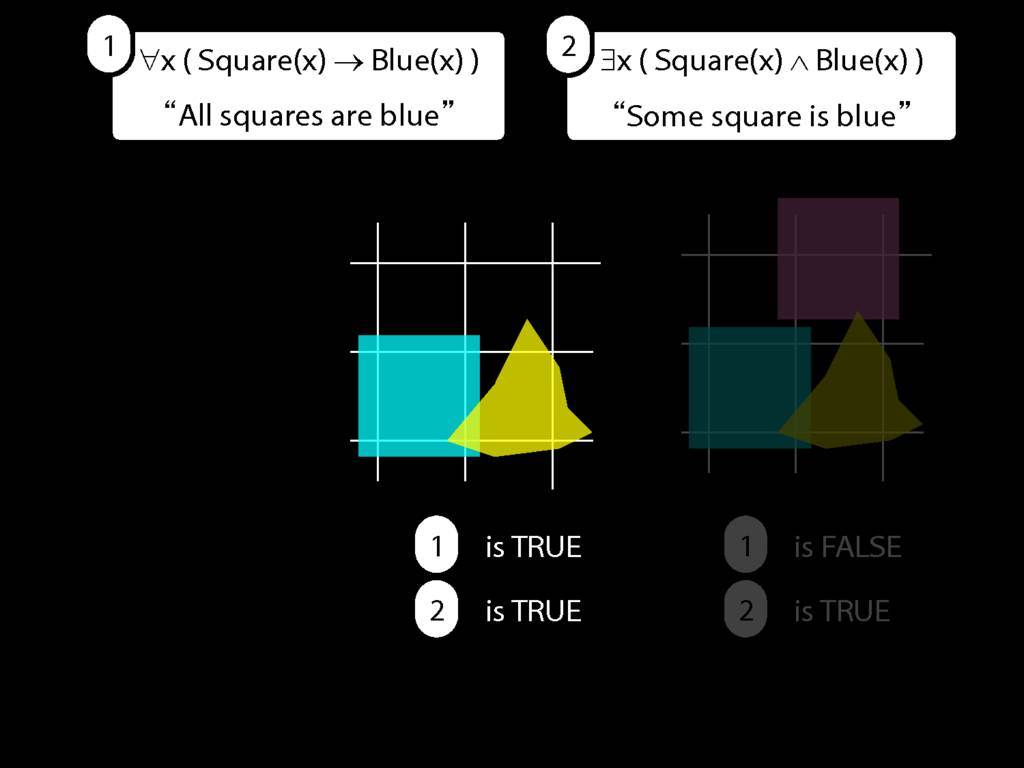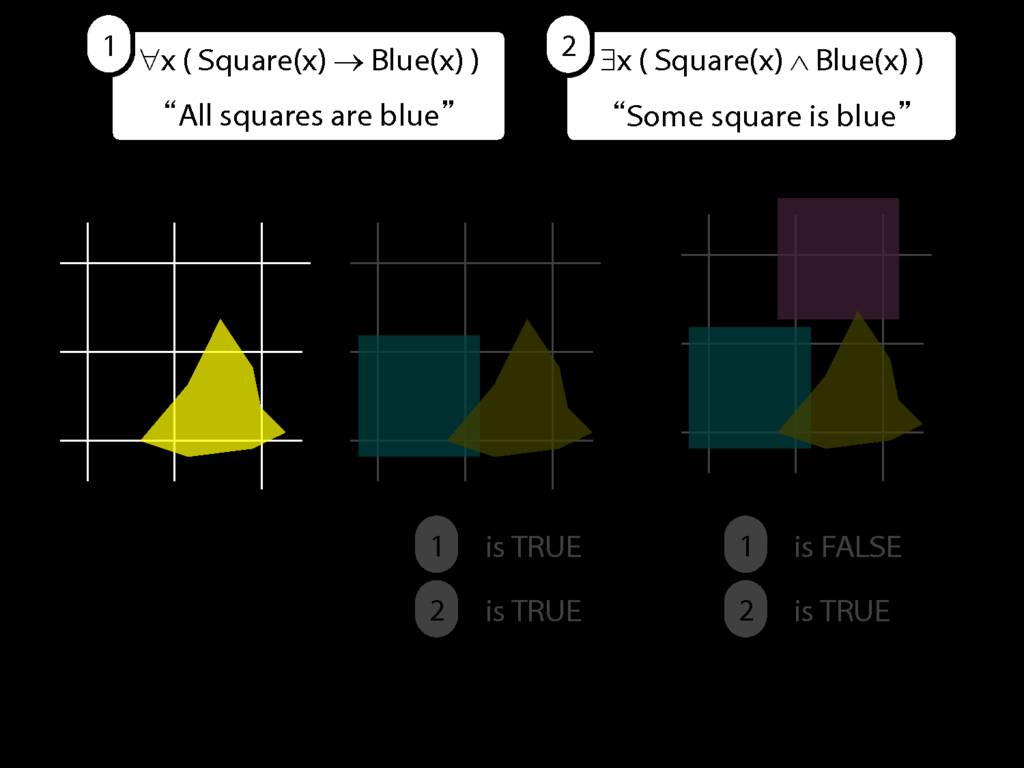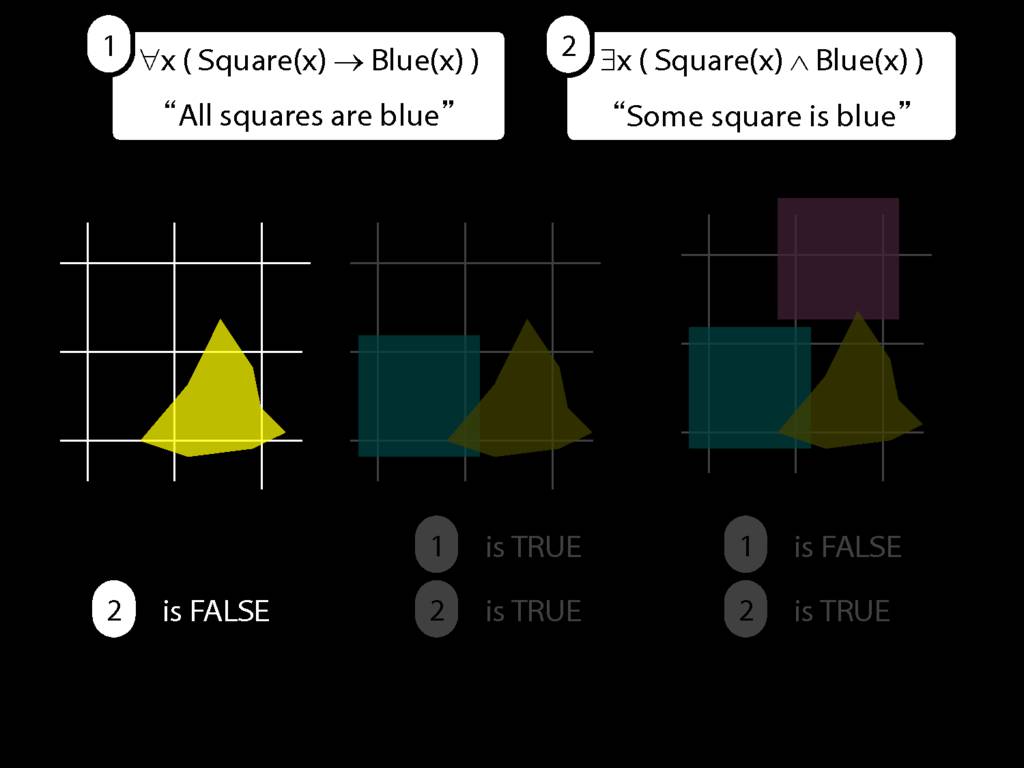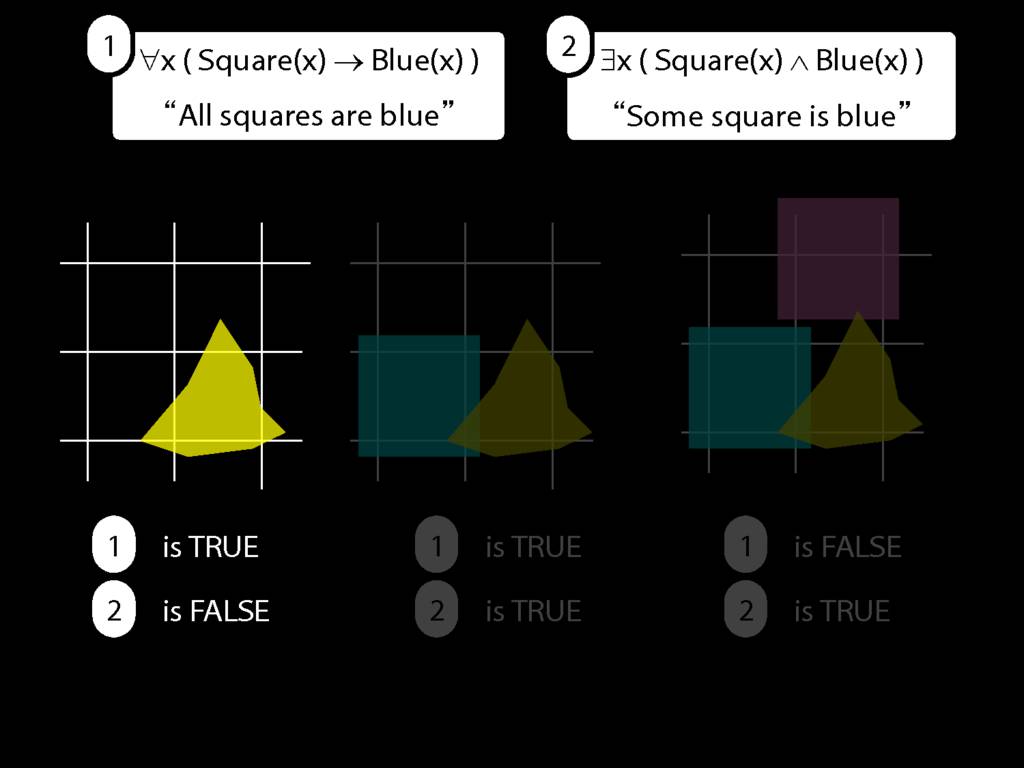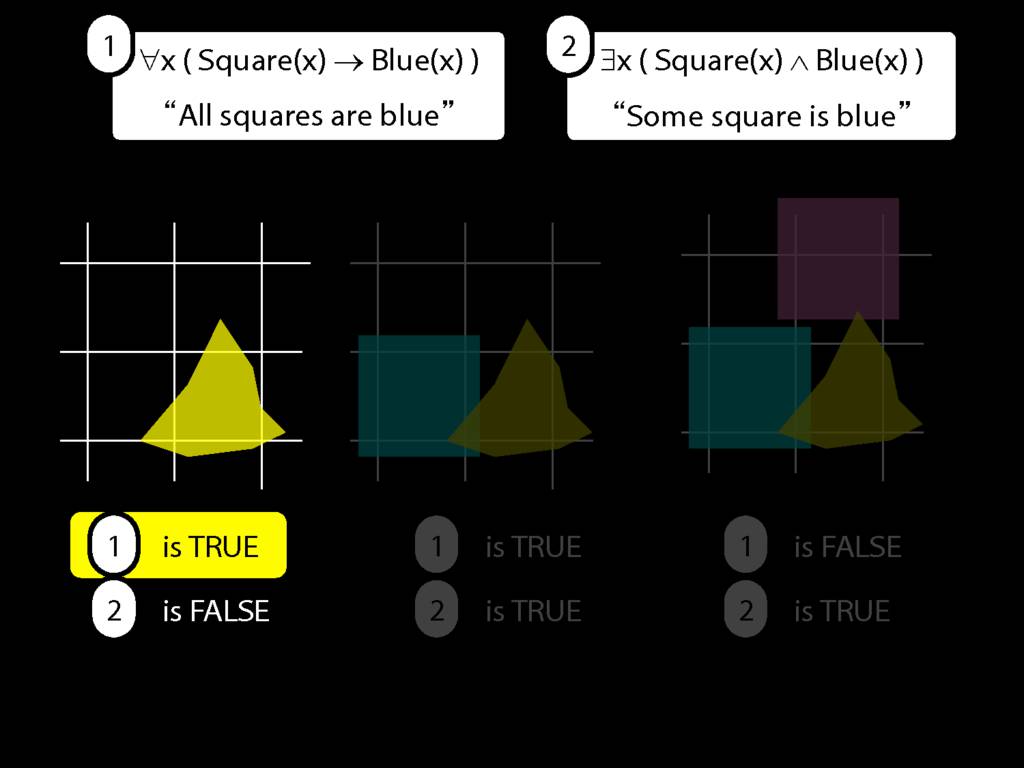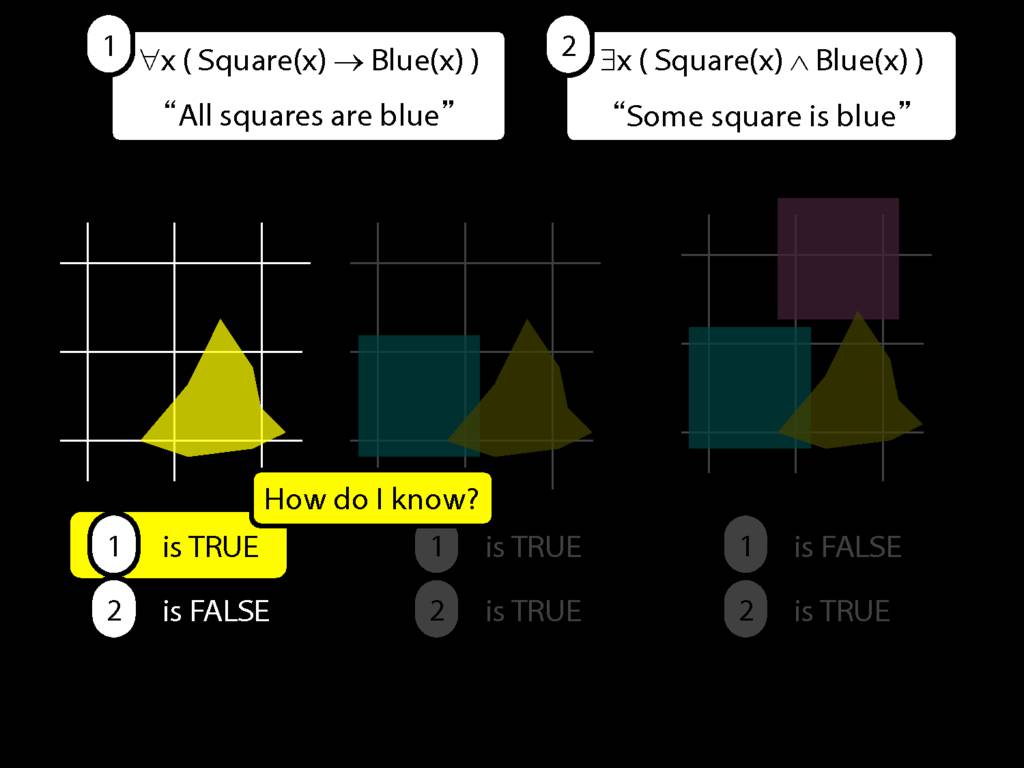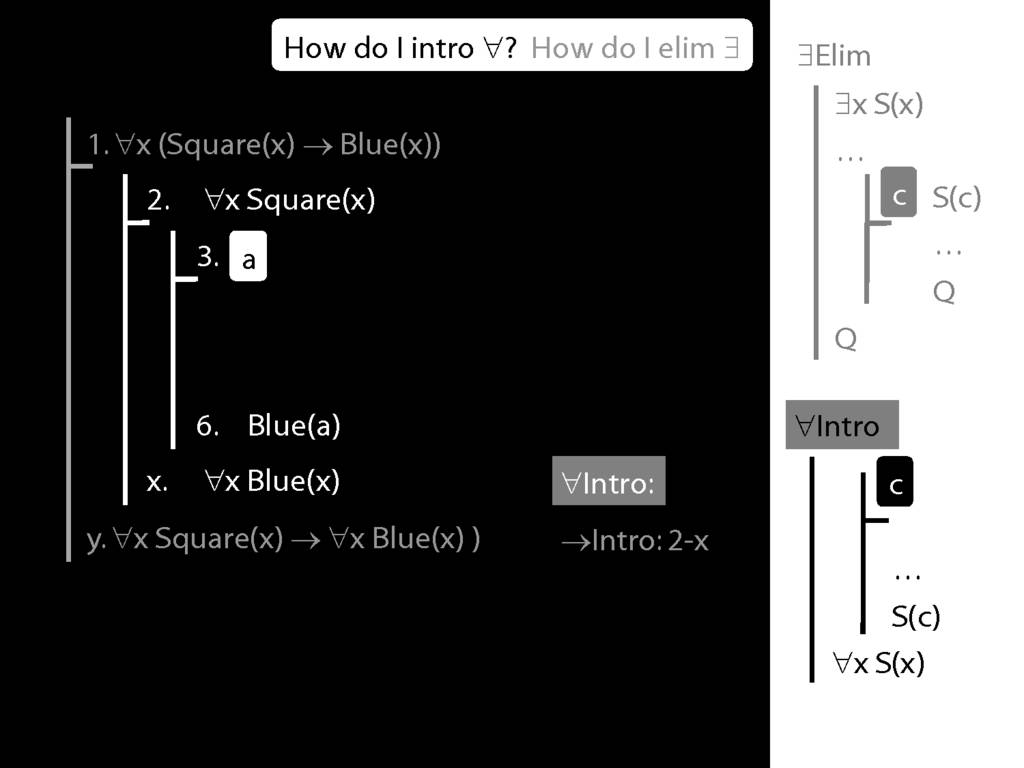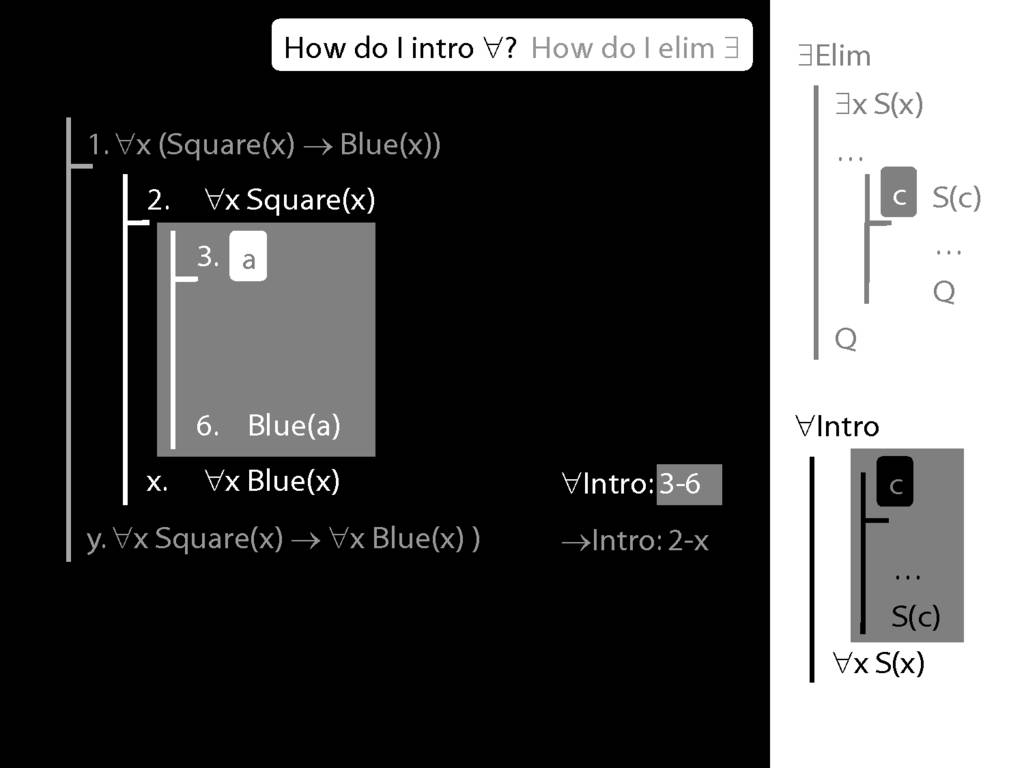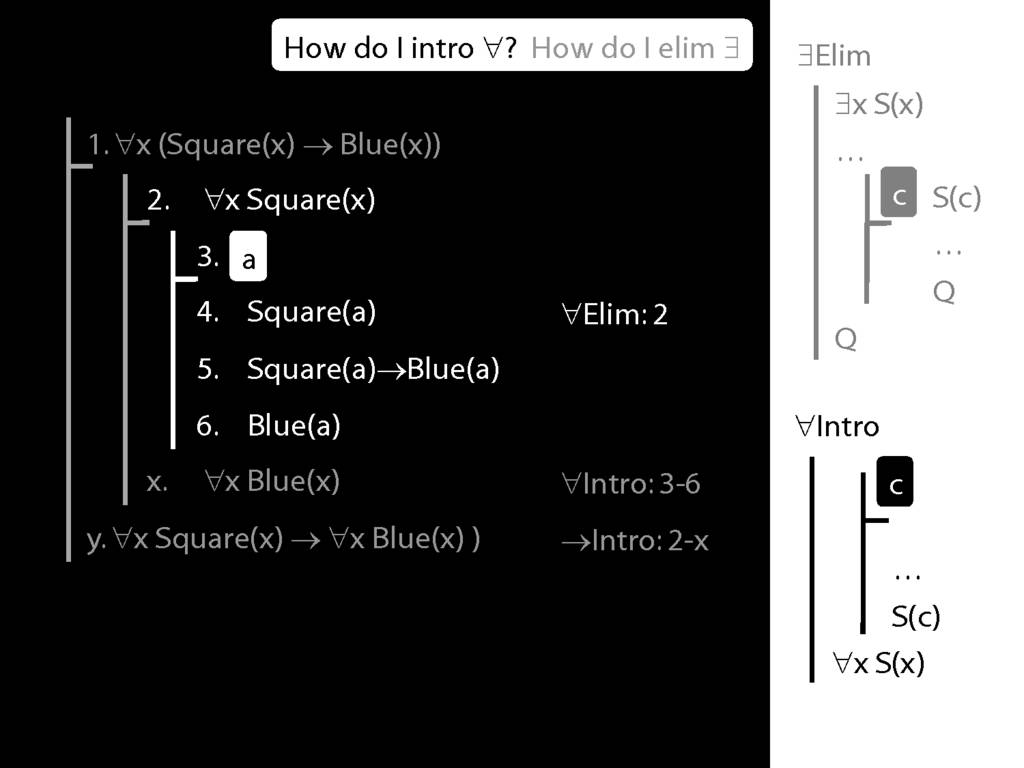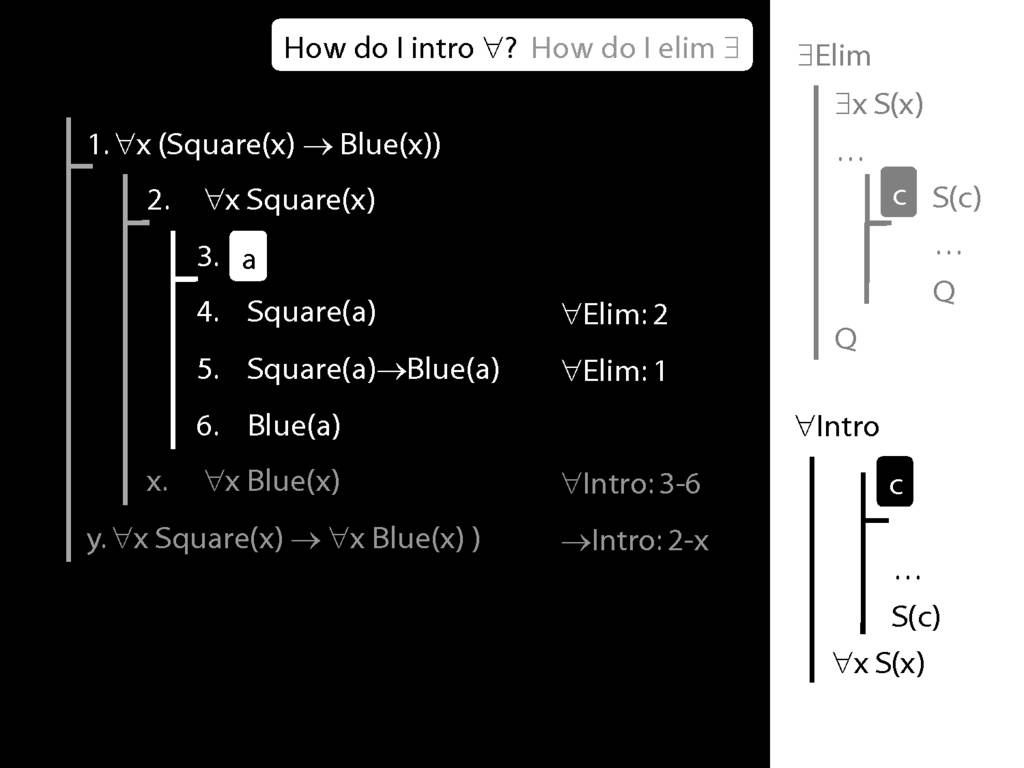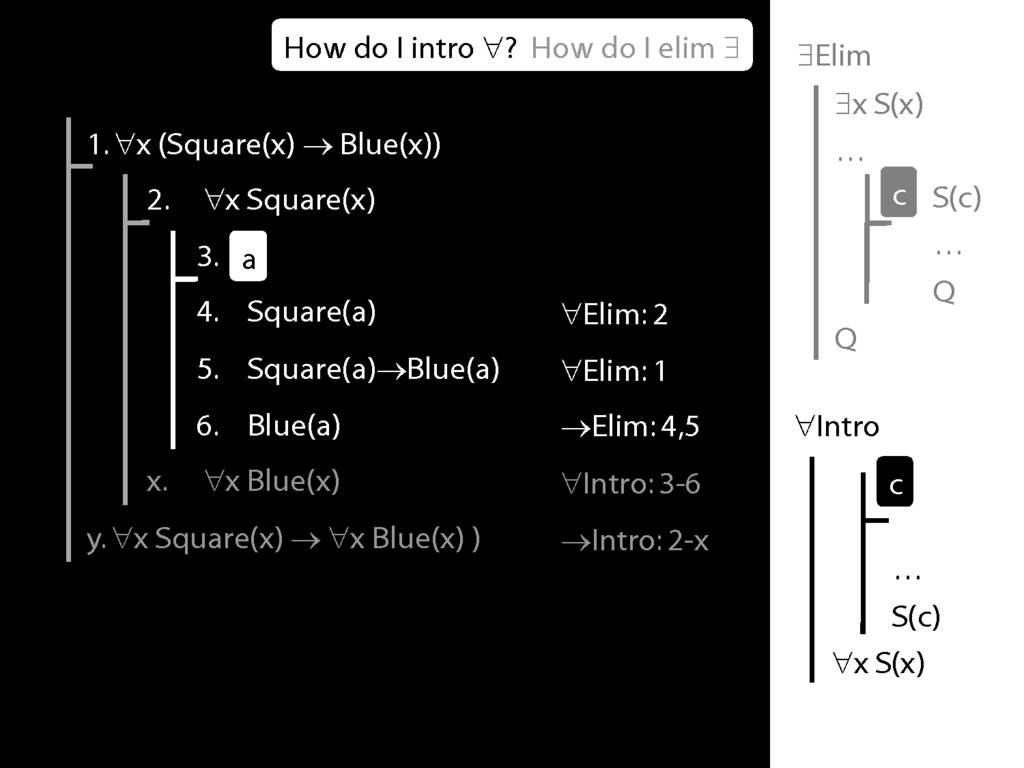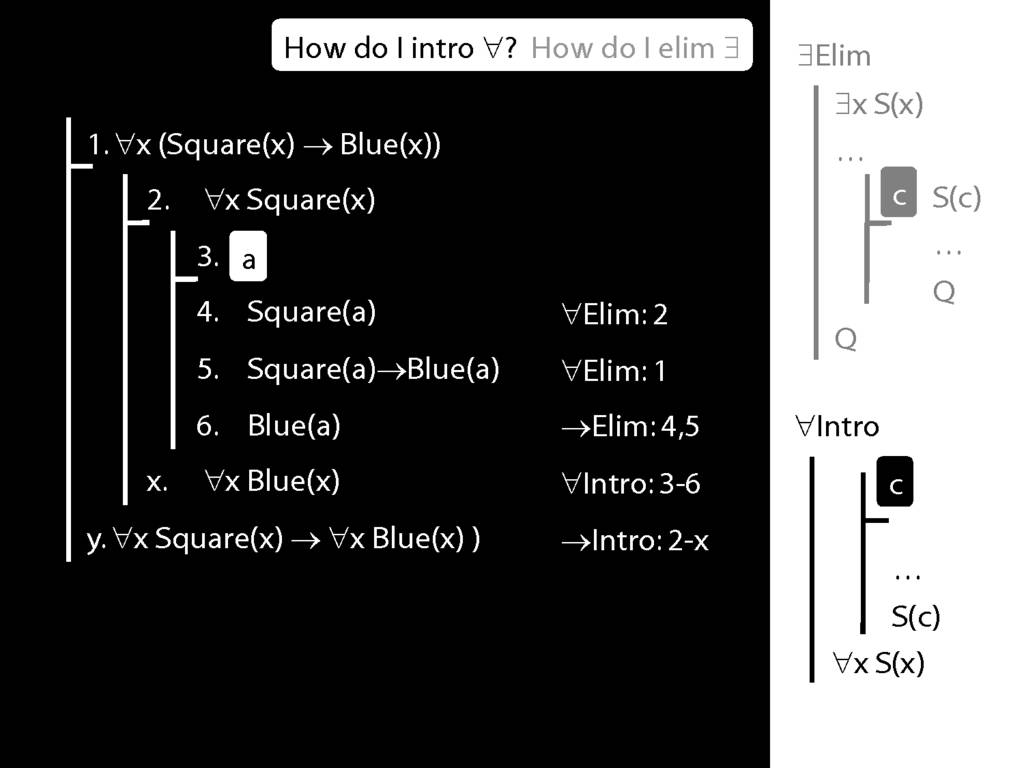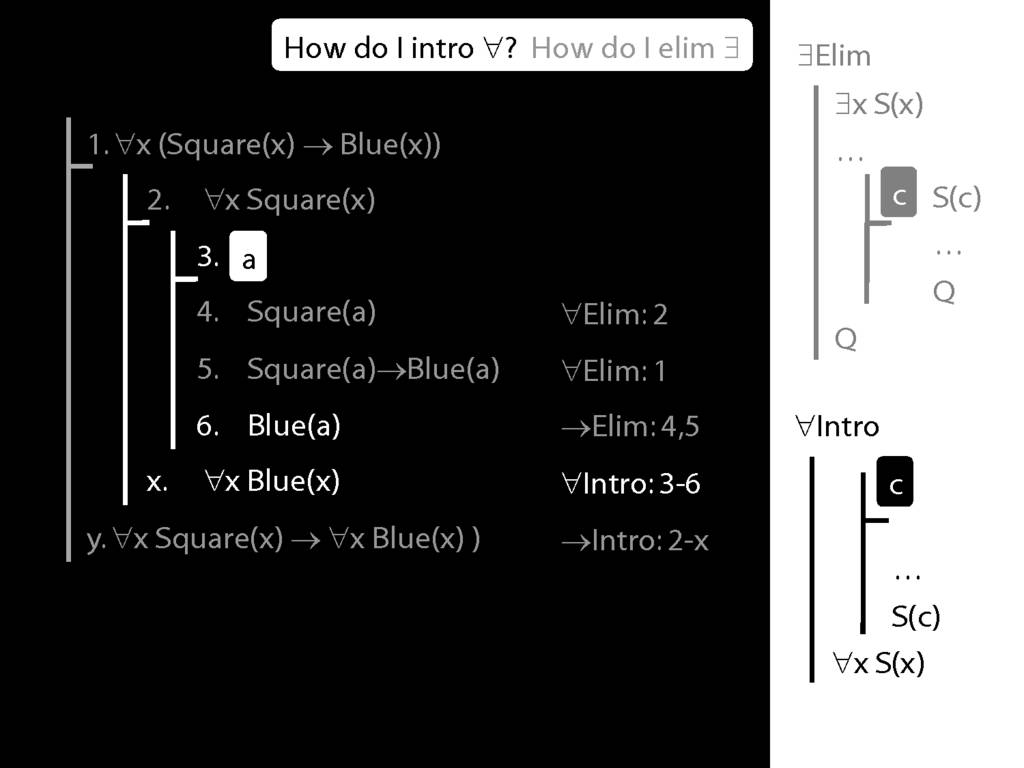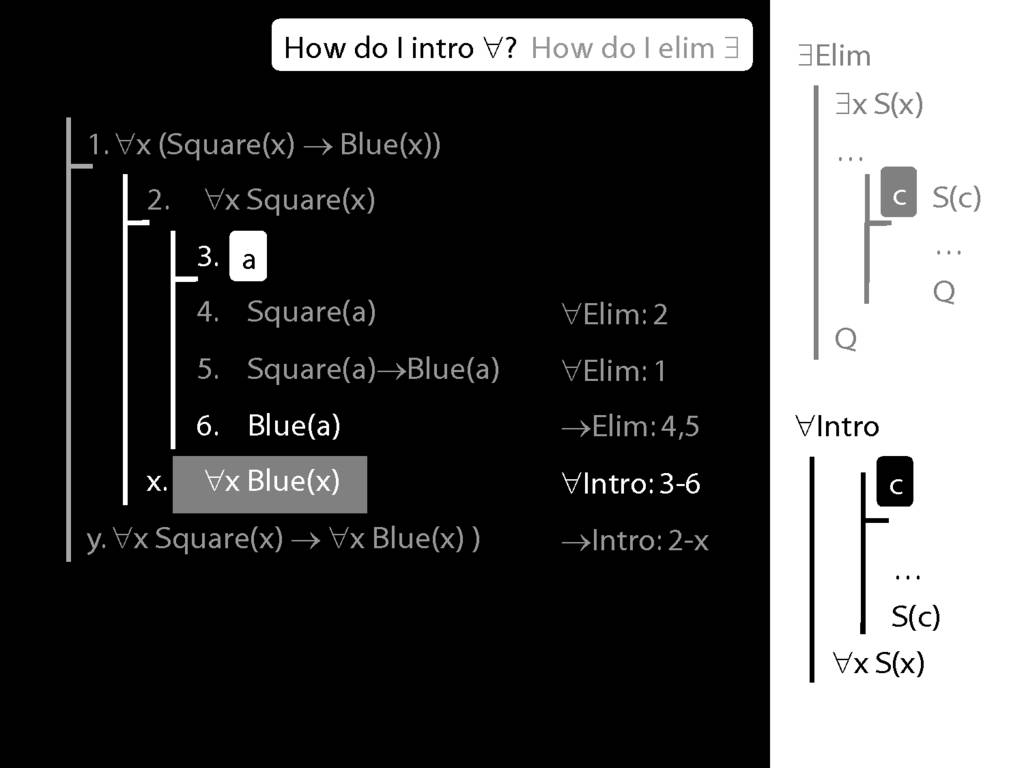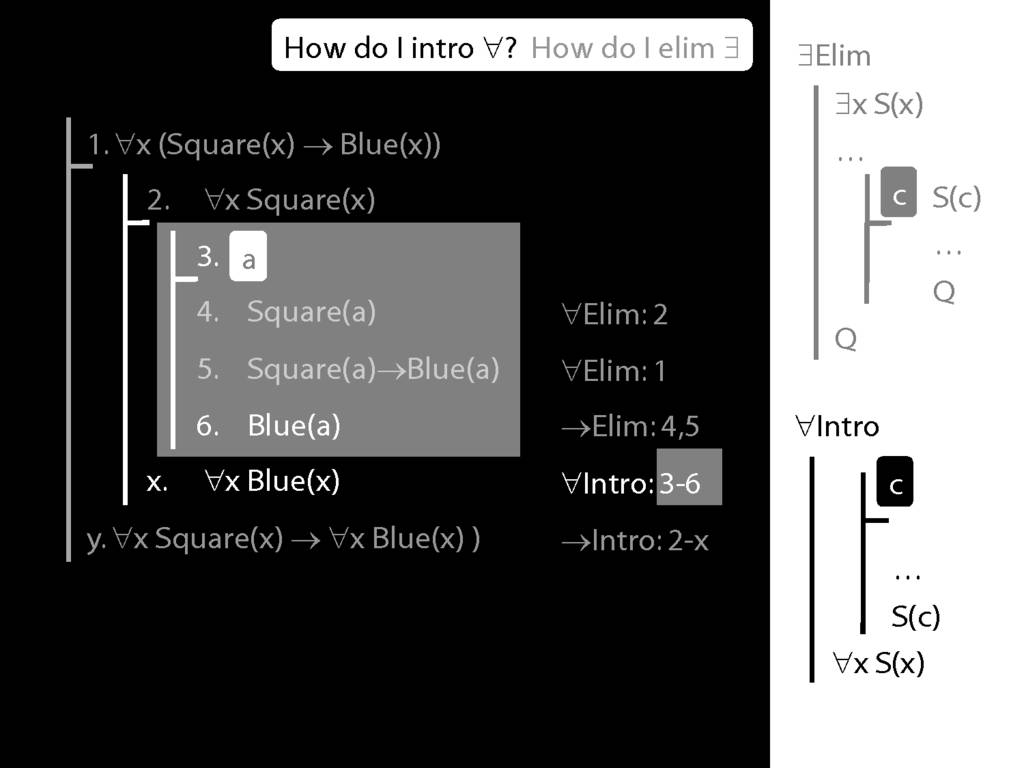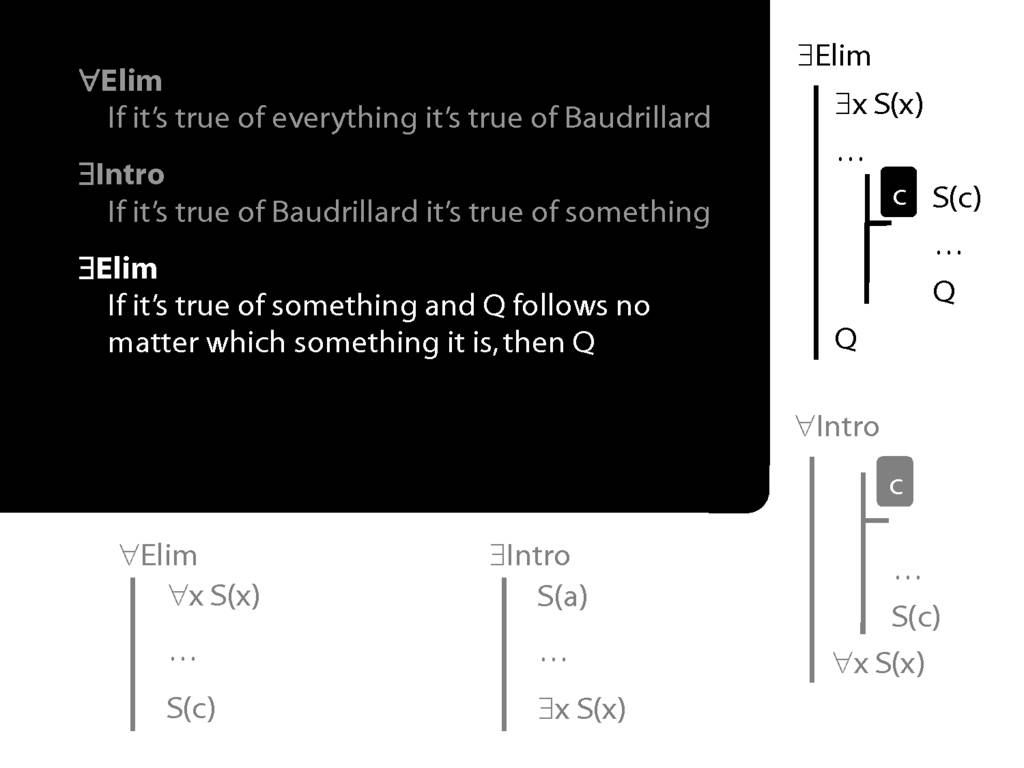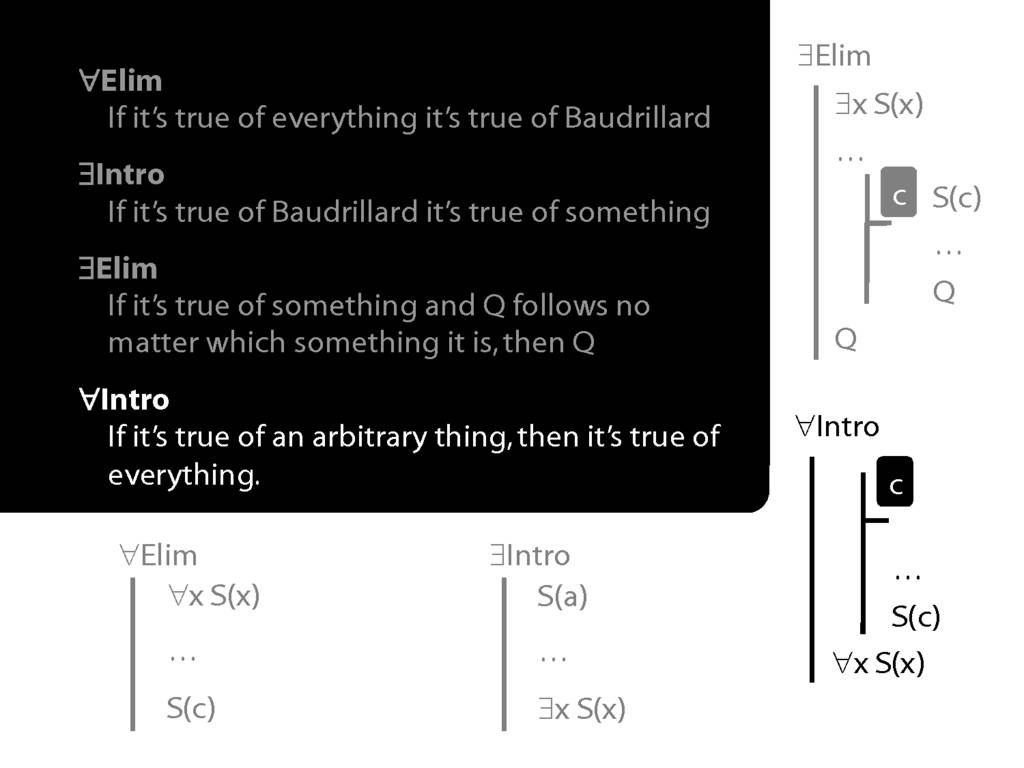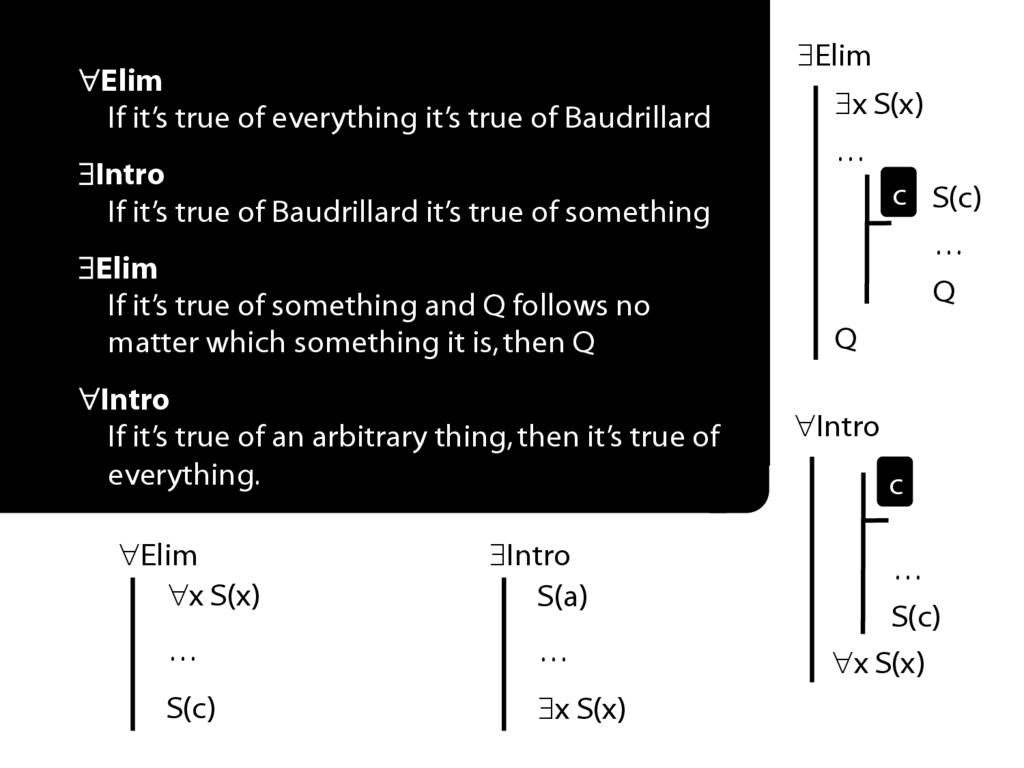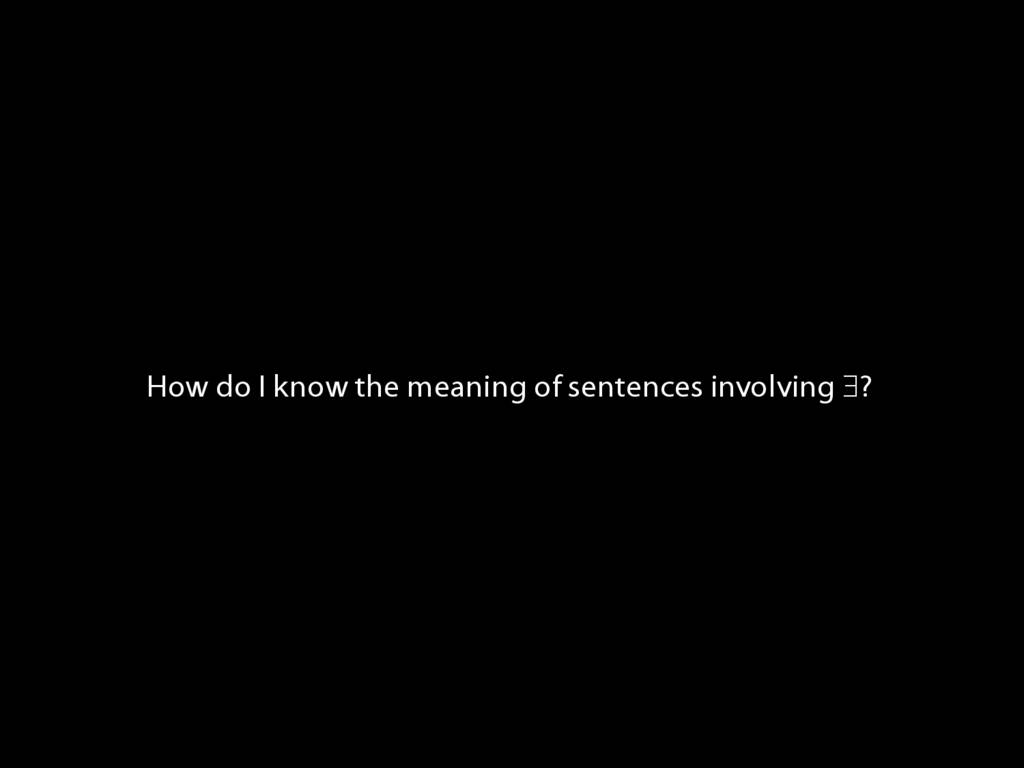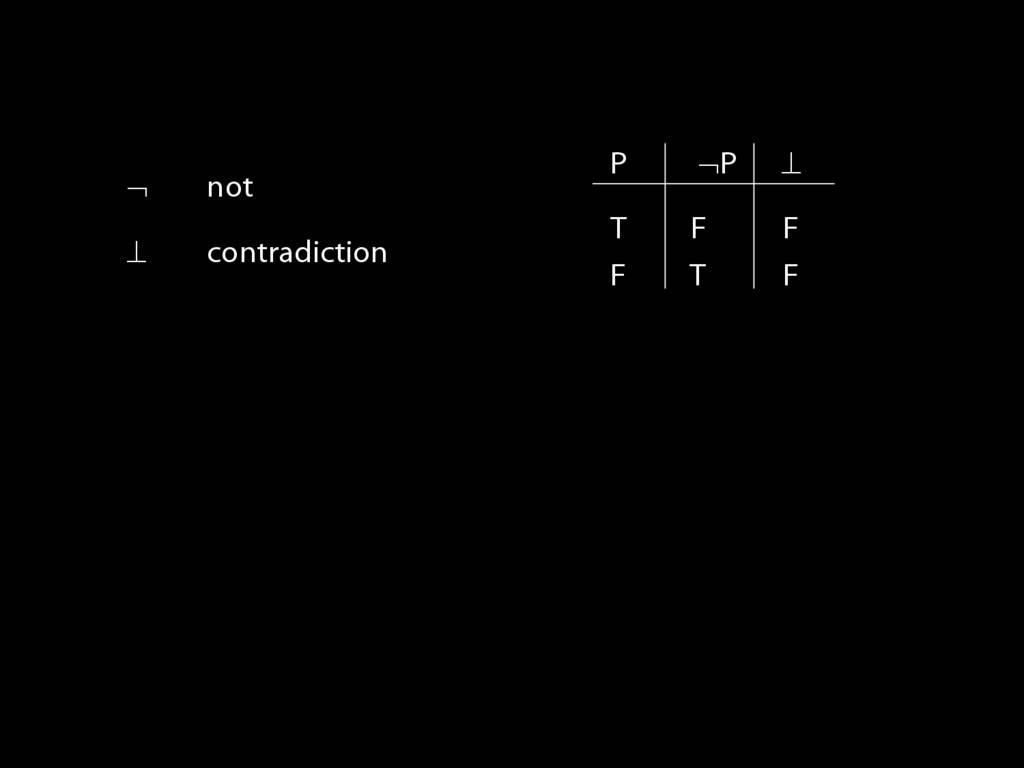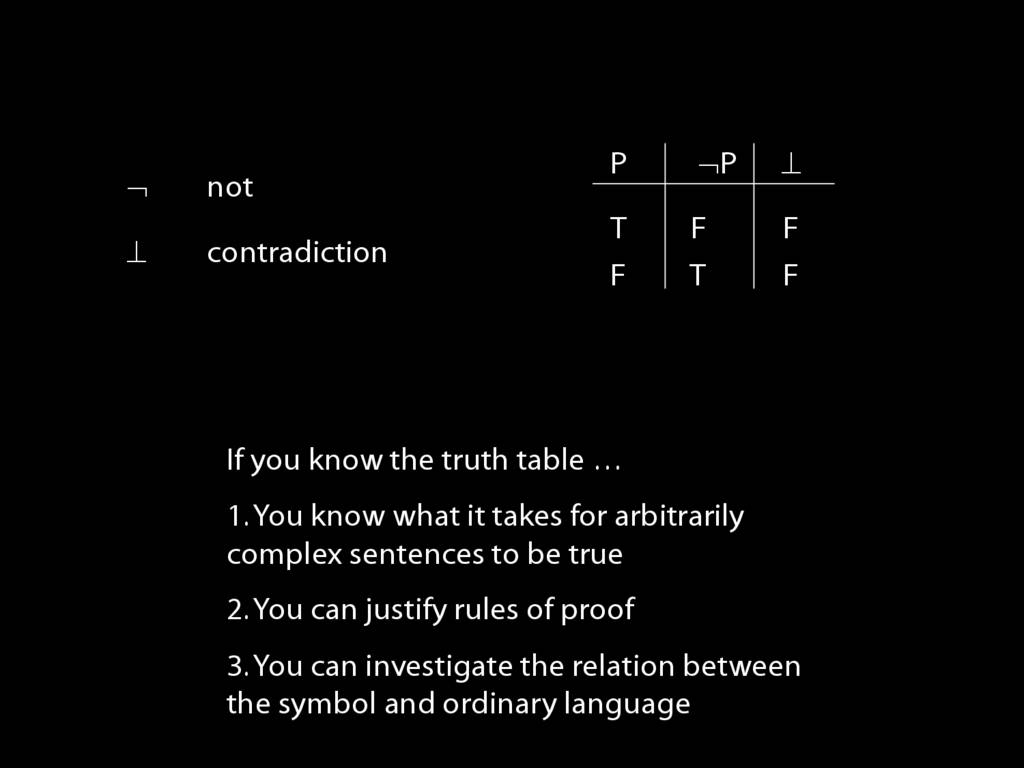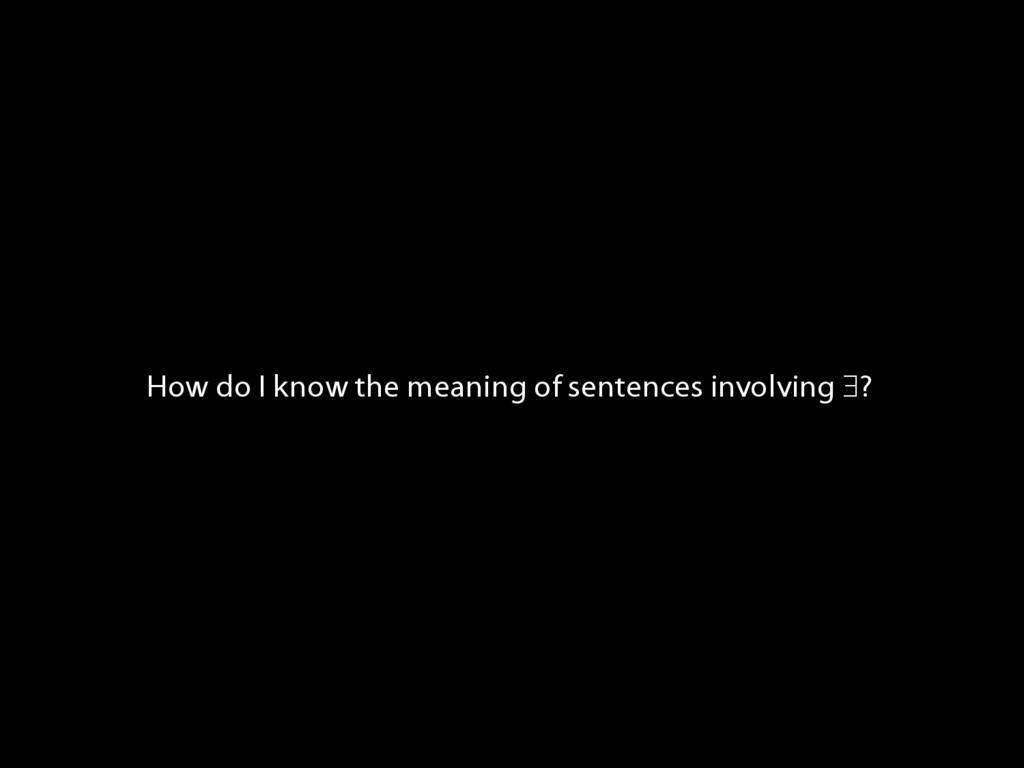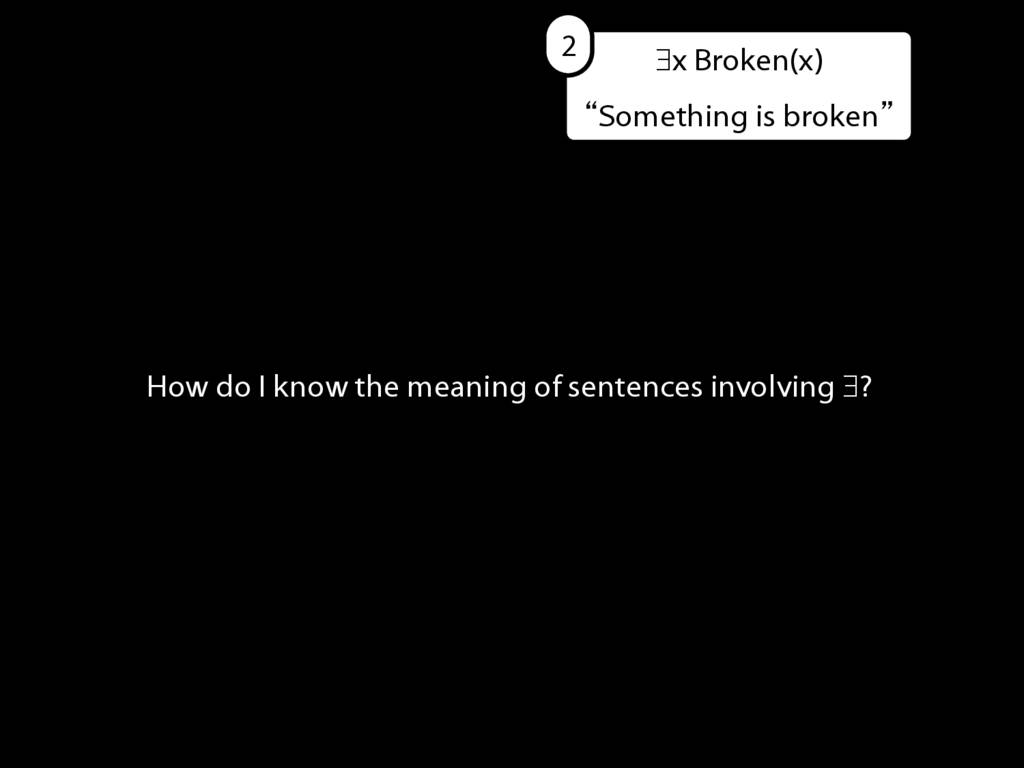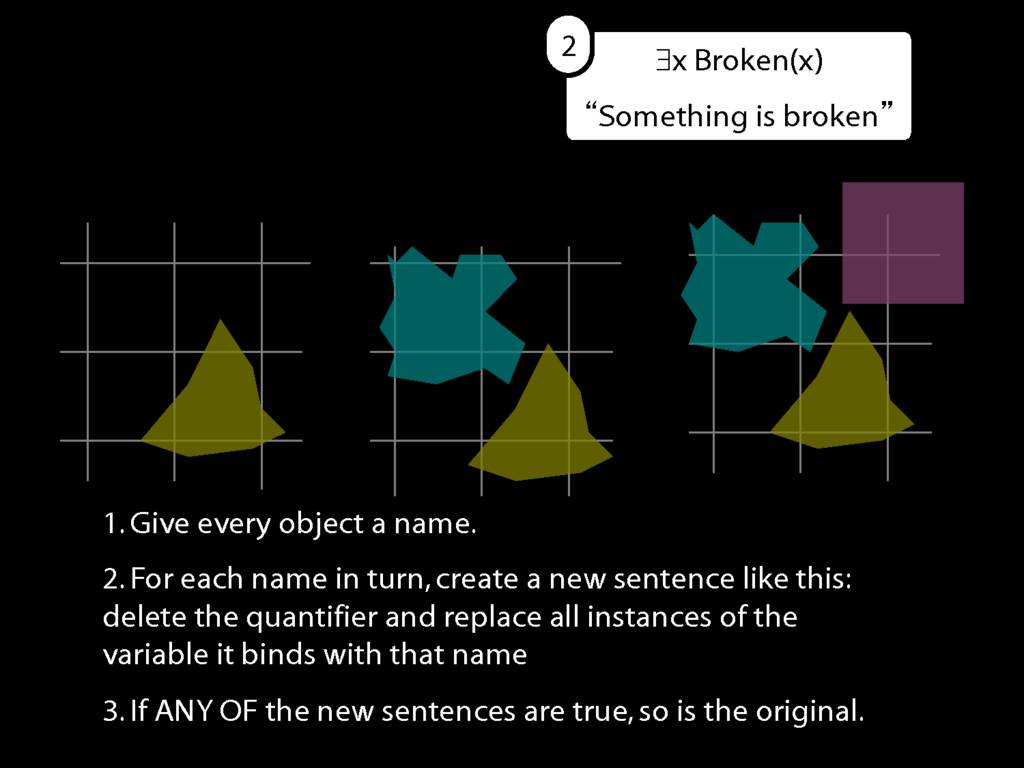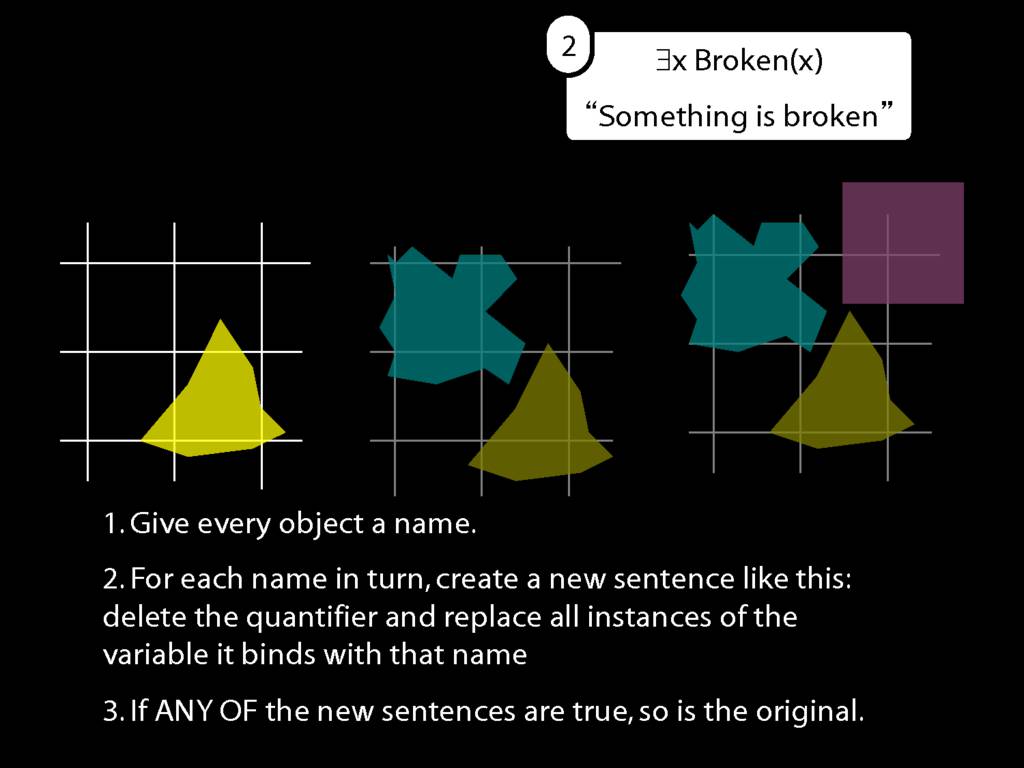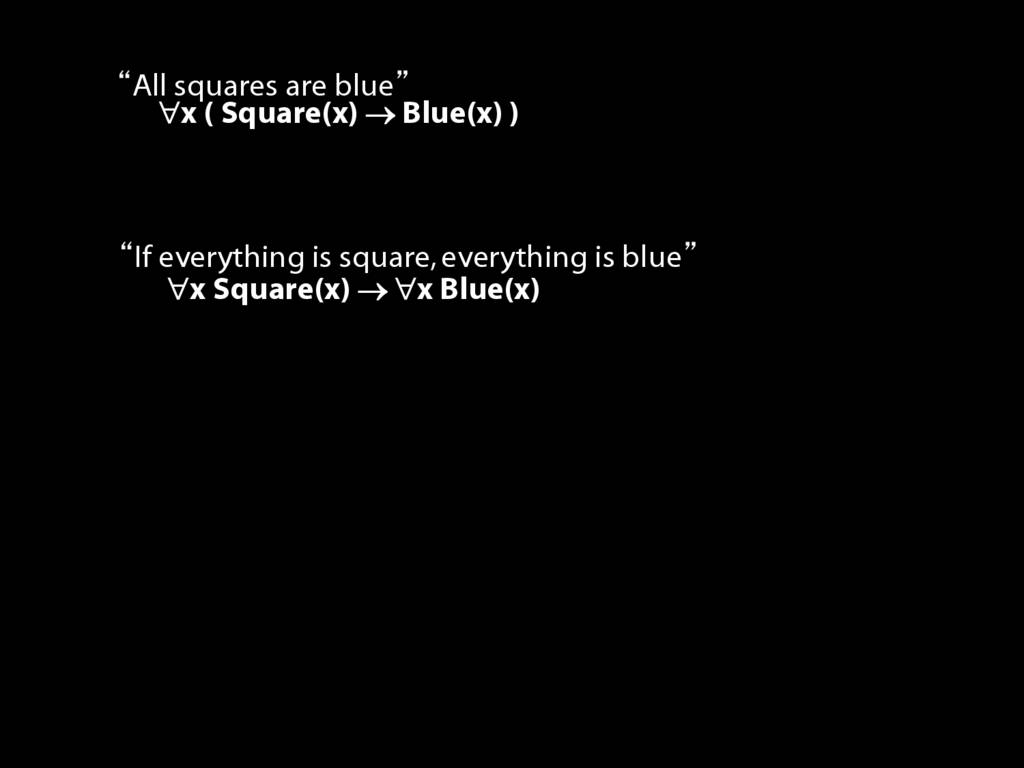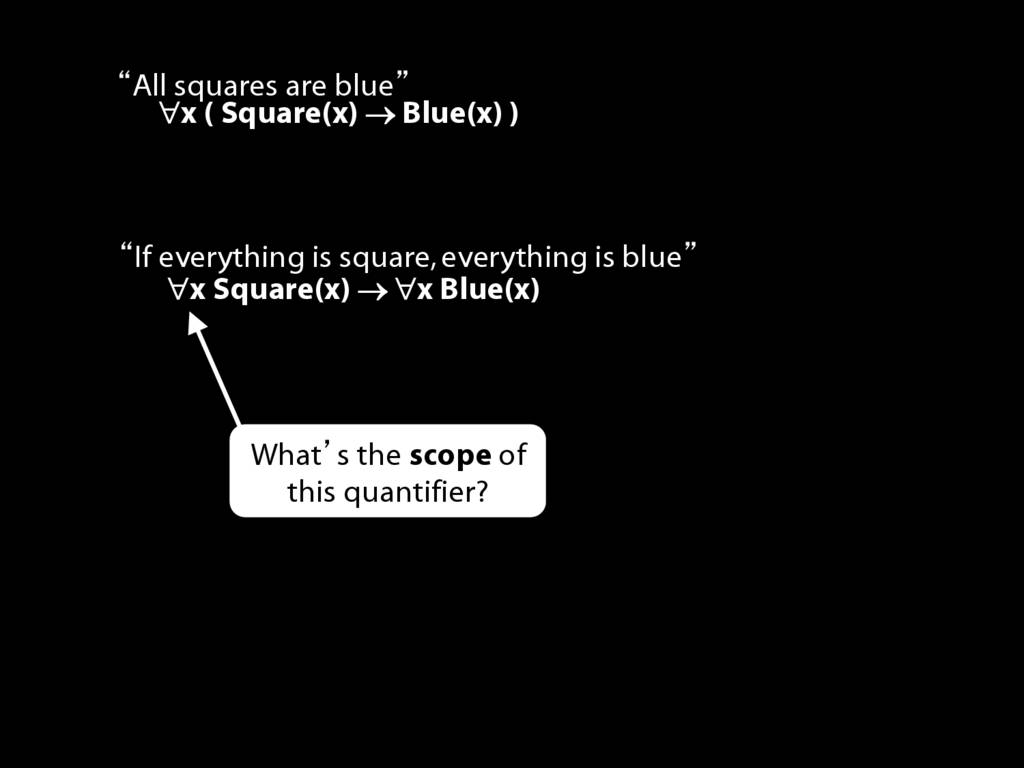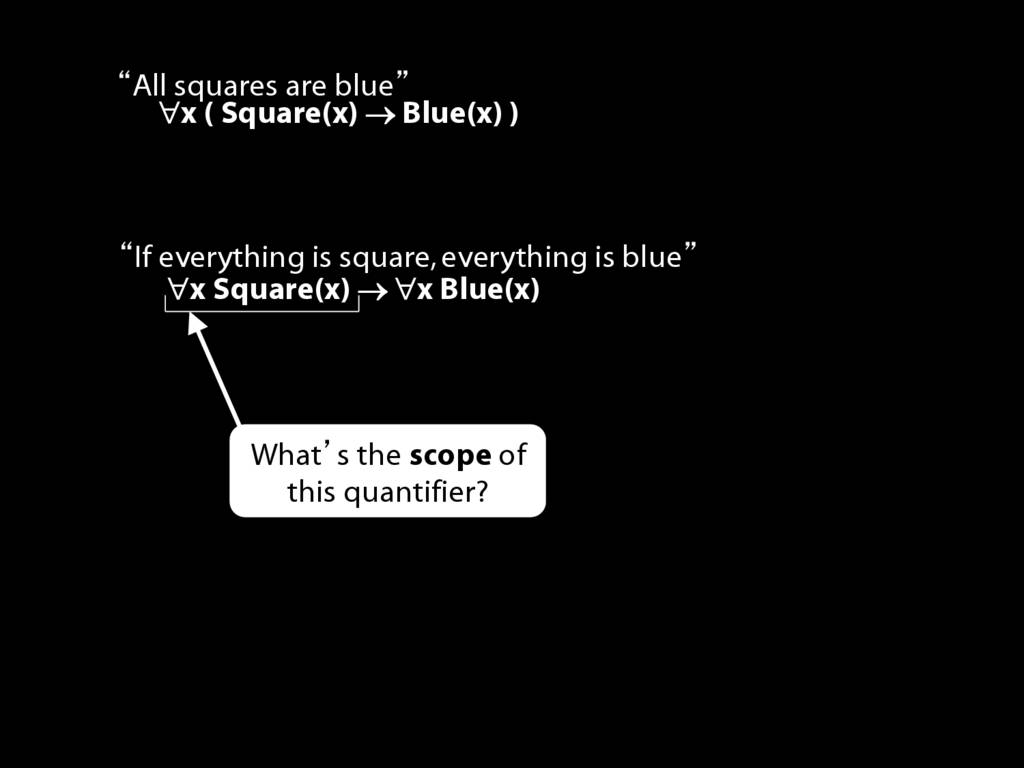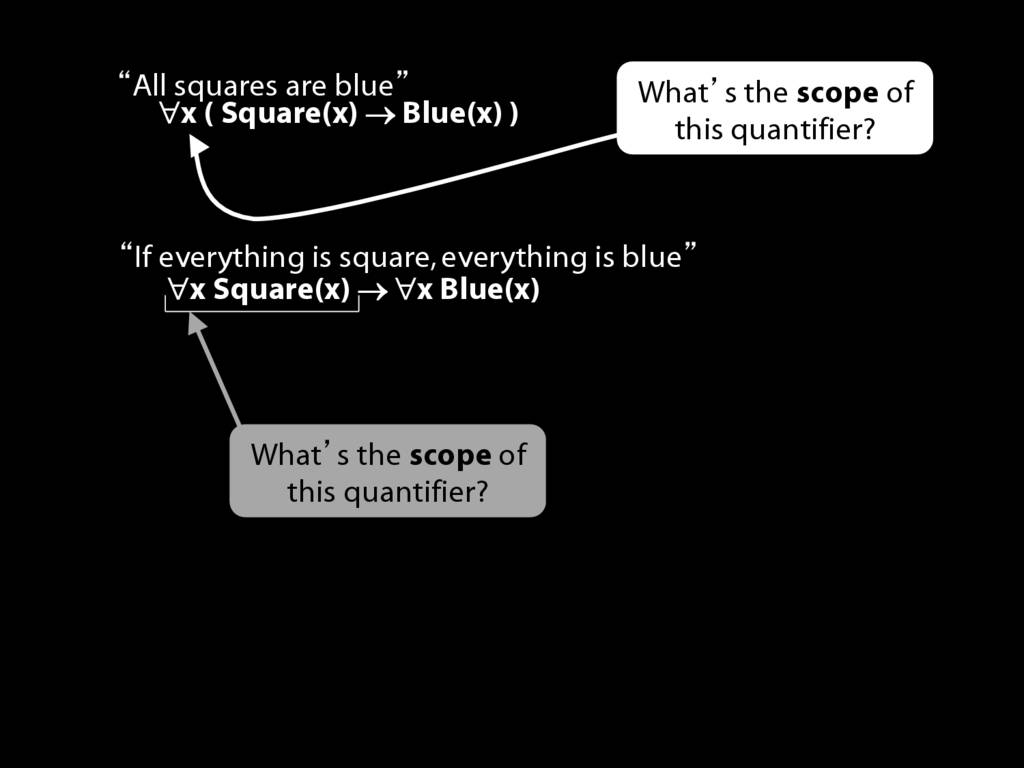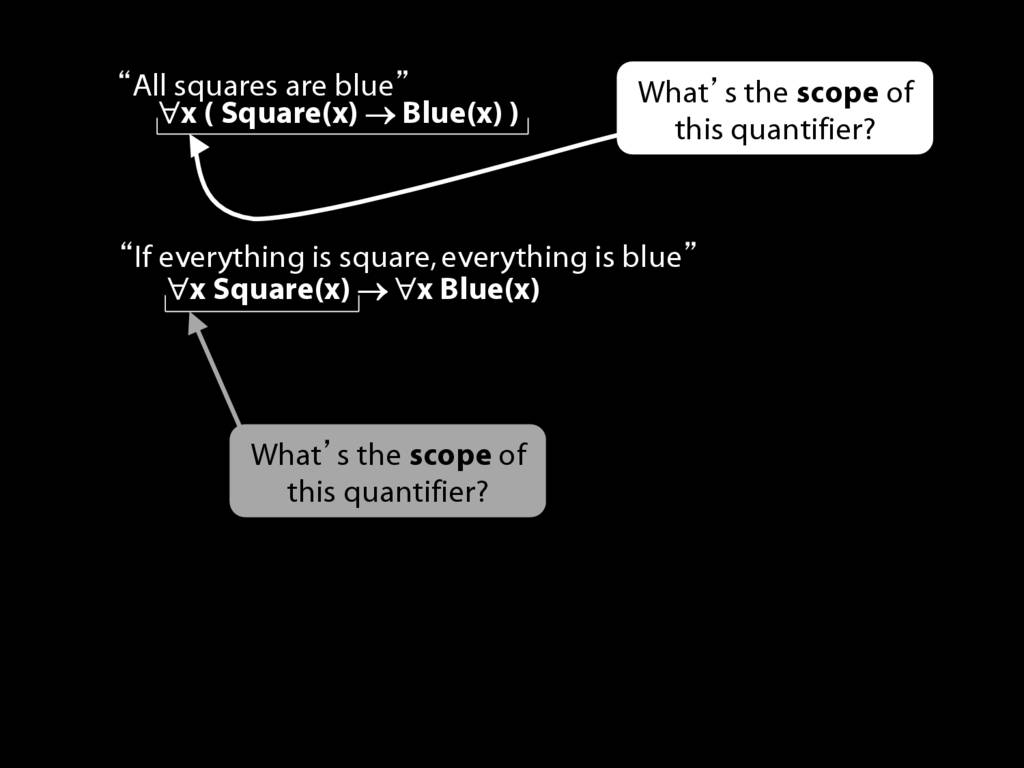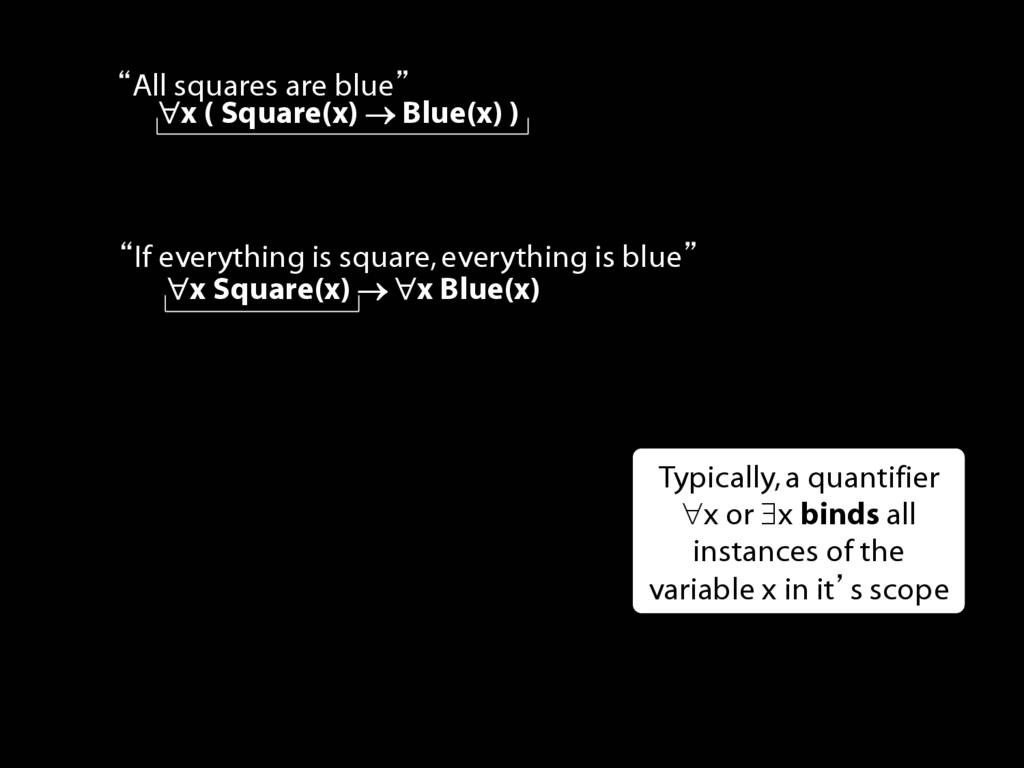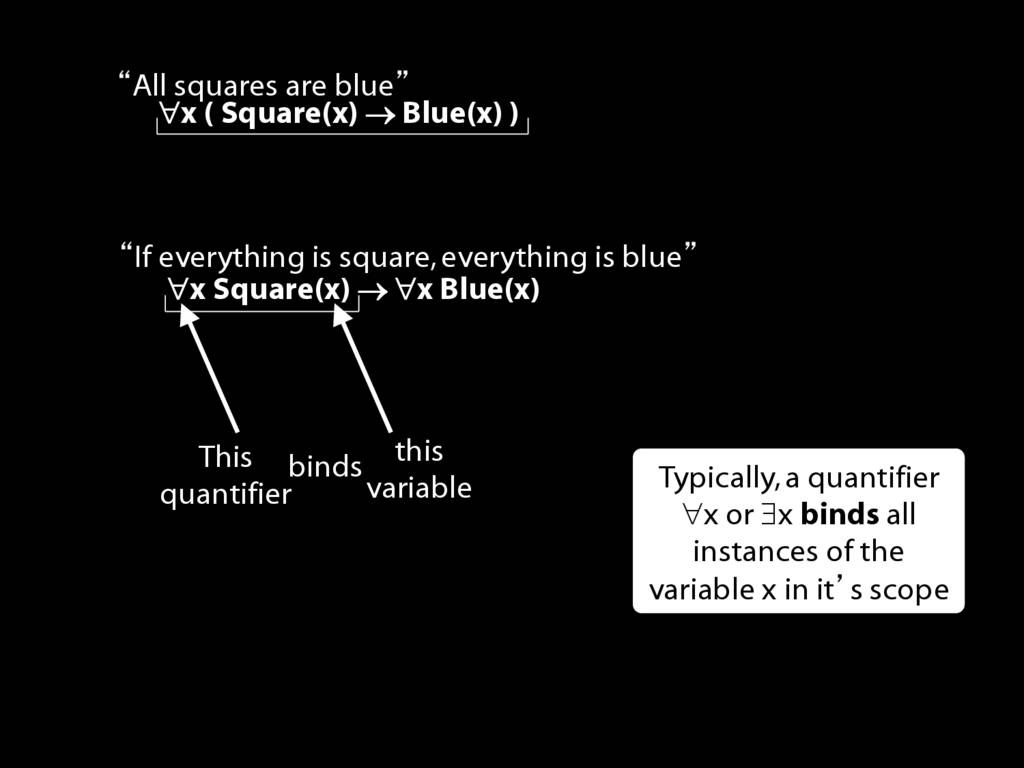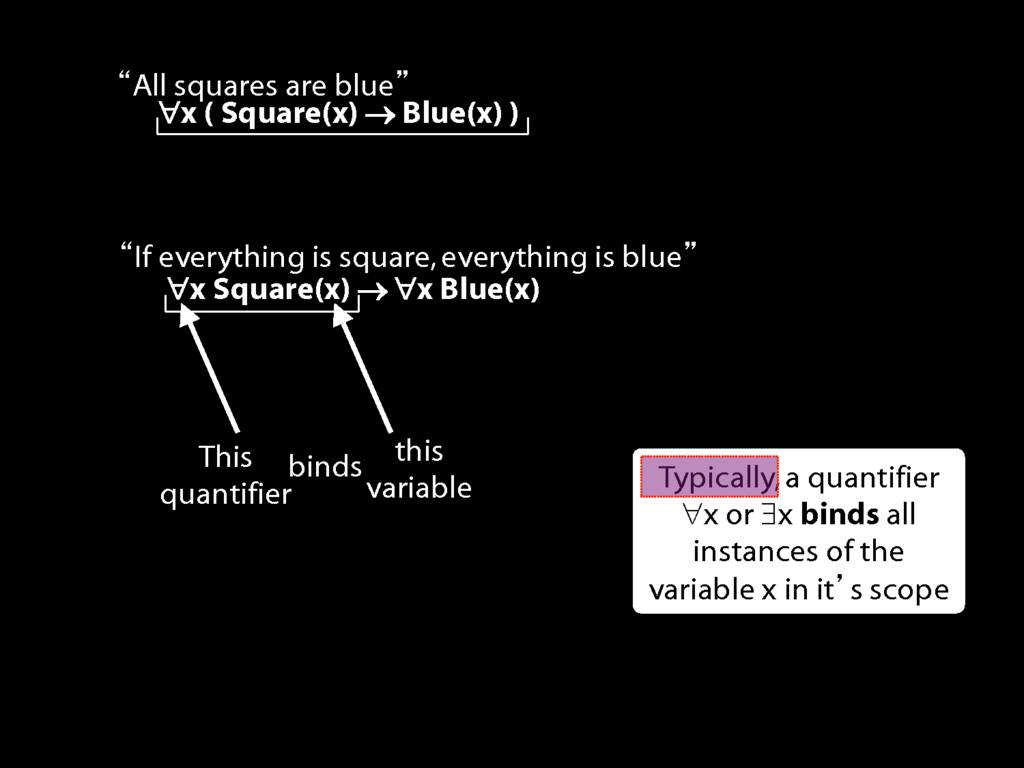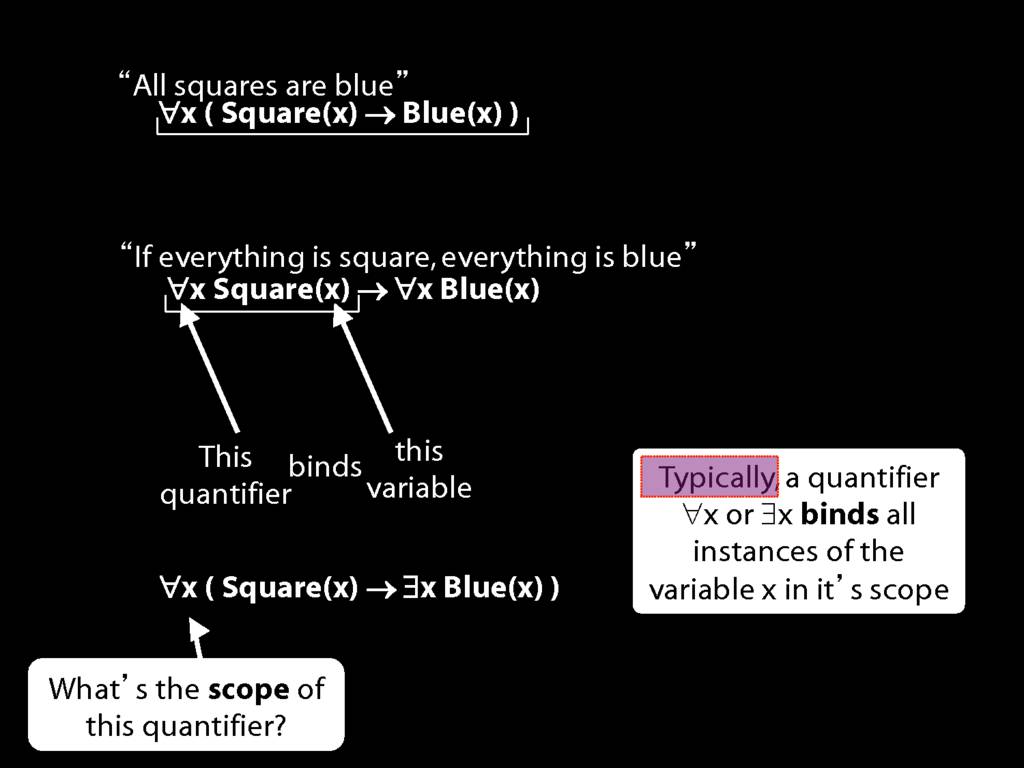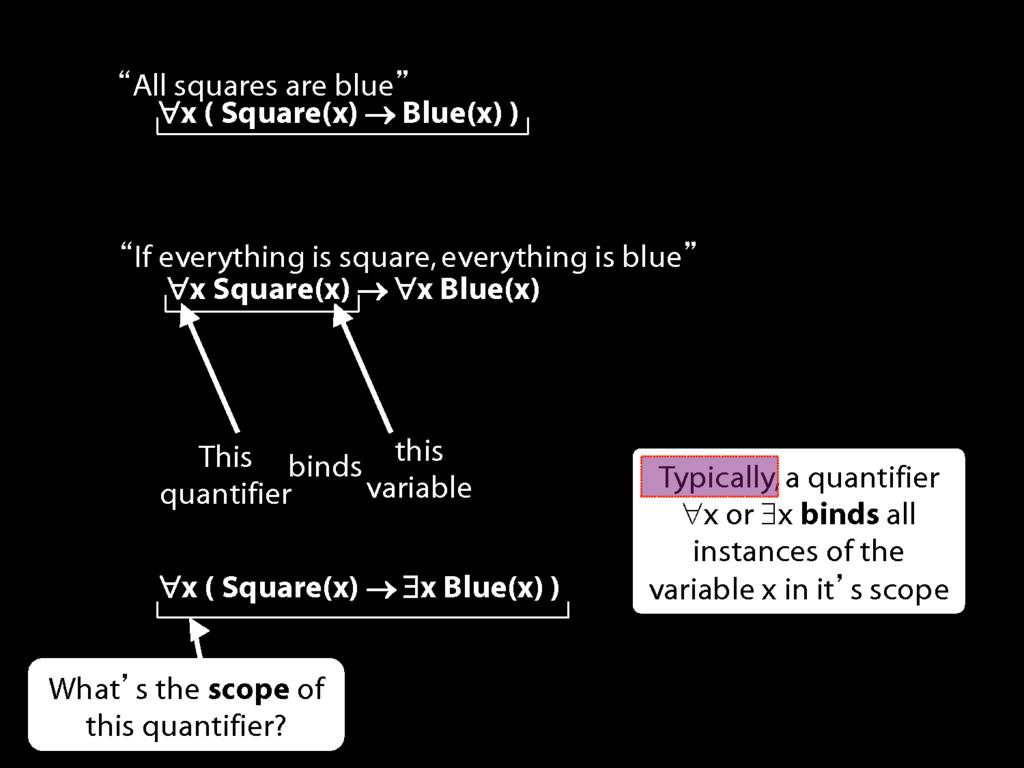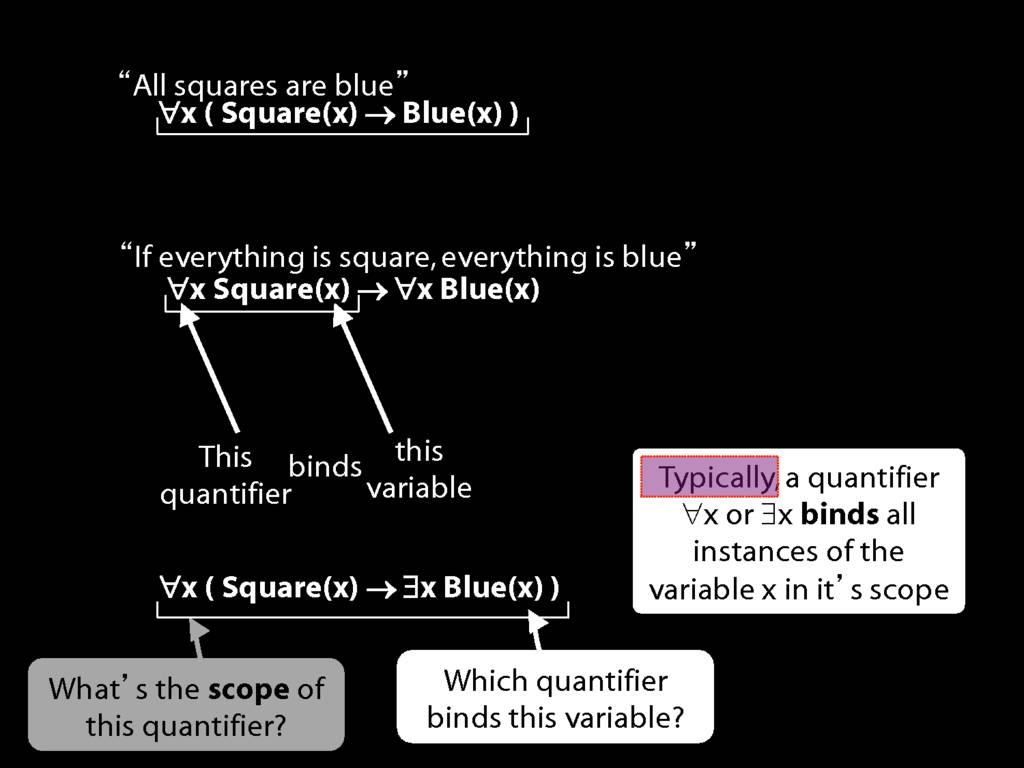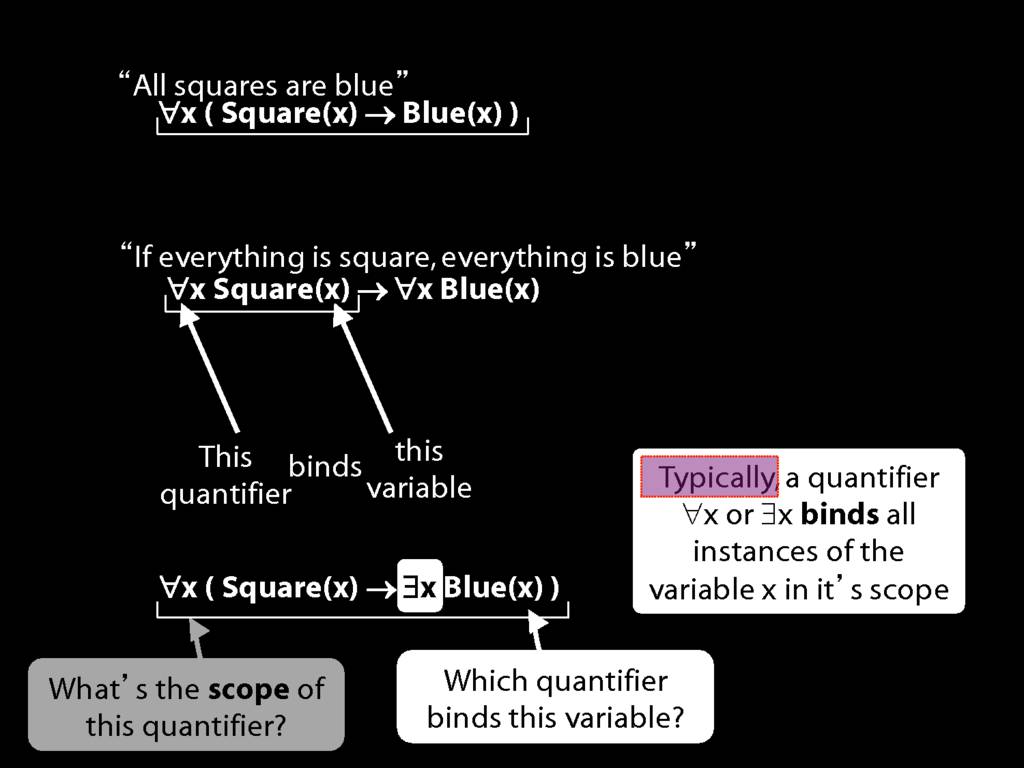Press the right key for the next slide (or swipe left)
also ...
Press the left key to go backwards (or swipe right)
Press n to toggle whether notes are shown (no equivalent if you don't have a keyboard)
Press m or double tap to see a menu of slides
8.26--8.30

\def \ititle {Logic I}
\def \isubtitle {Fast Lecture 04}
\begin{center}
{\Large
\textbf{\ititle}: \isubtitle
}
\iemail %
\end{center}
Readings refer to sections of the course textbook, \emph{Language, Proof and Logic}.
\section{Everything Is Broken}
\emph{Reading:} §9.1, §9.2

Everything is broken: ∀x Broken(x)
Something is broken: ∃x Broken(x)
9.1 odd numbers only
9.2 even numbers only
9.8–-9.10
\section{∃Elim}
\emph{Reading:} §12.2, §13.2
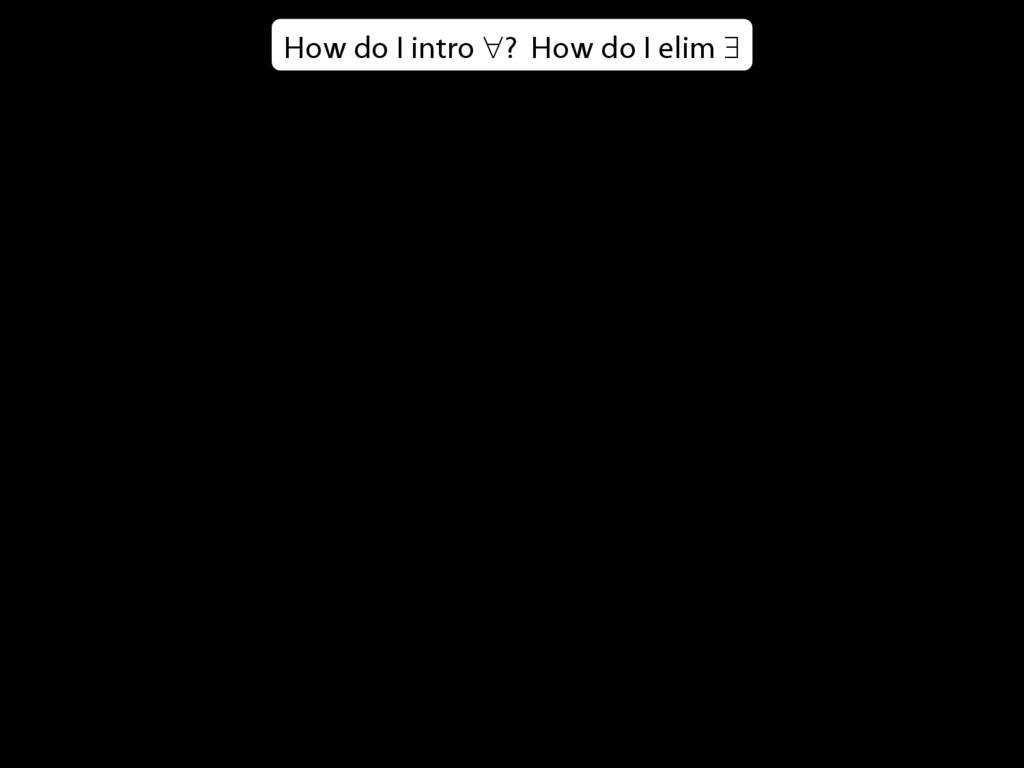
\begin{minipage}{\columnwidth}
Note this restriction on the use of ∃Elim:
\end{minipage}

Quantifer Rules: ∃Elim with zoxiy
\section{Quantifer Rules: ∃Elim with zoxiy}
The rules of proof exists elim and universal intro each
require you to put a name in a box in the premise of a subproof.
How can you do this with zoxiy?
Where you see a name in a box, just enclose it in square brackets.
For example: [a]
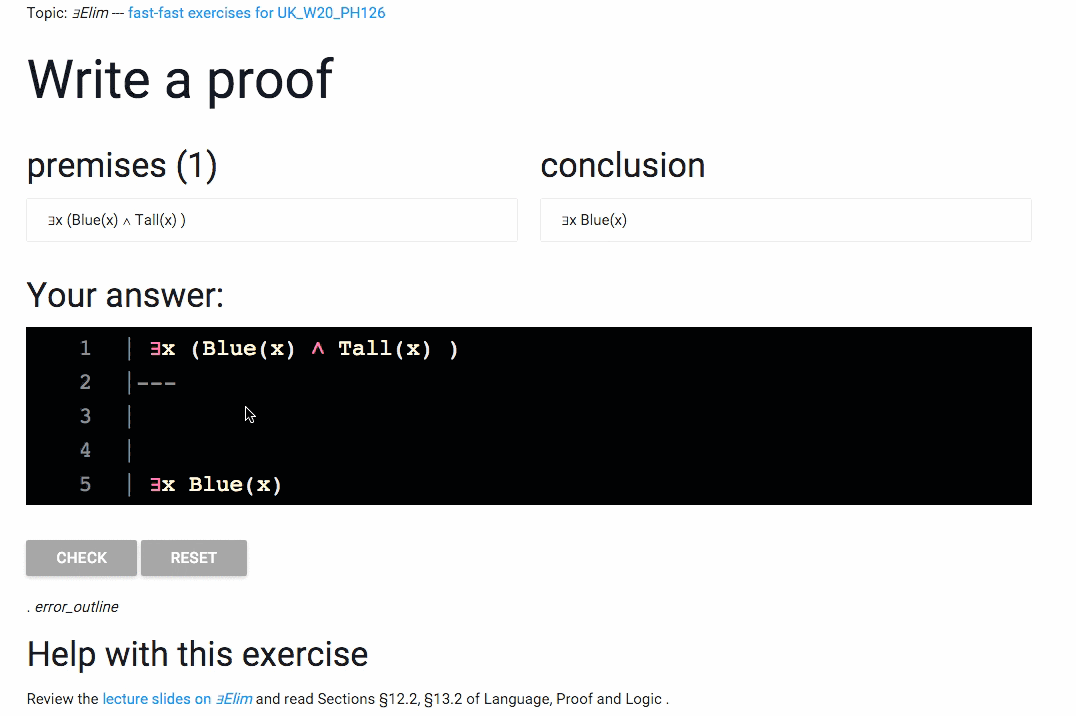

All Squares Are Blue (Fast Version)
\section{All Squares Are Blue (Fast Version)}
\emph{Reading:} §9.2, §9.3, §9.5
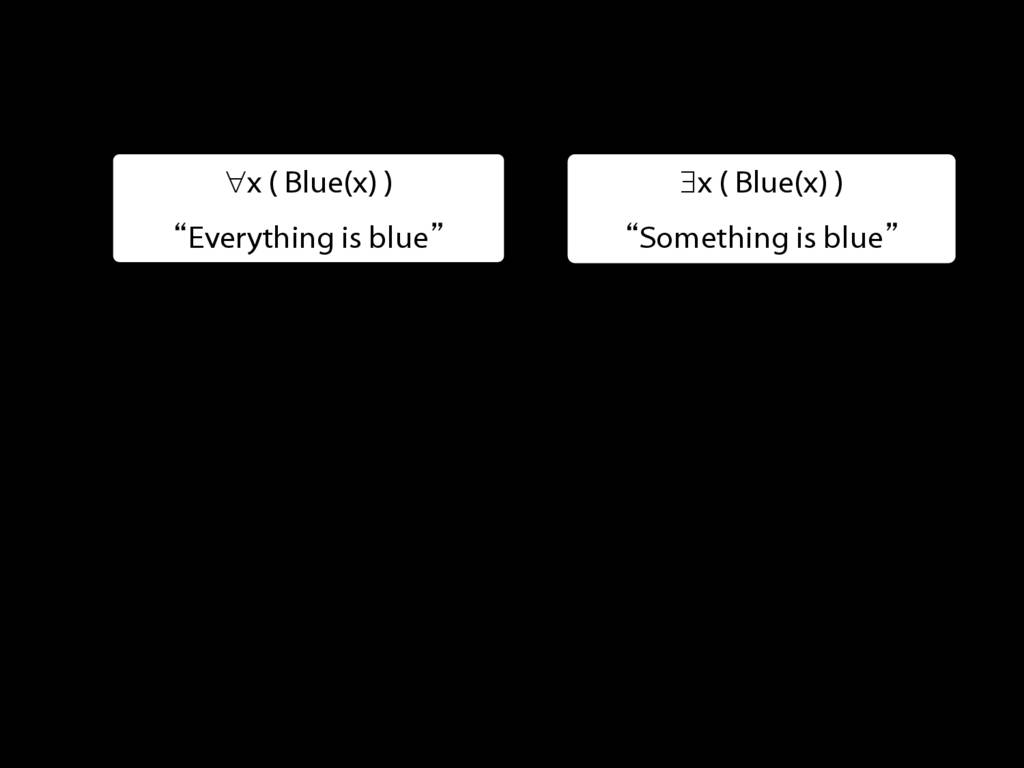
\begin{minipage}{\columnwidth}
\emph{∃ and ∧ work together}
Some square is blue:
∃x ( Square(x) ∧ Blue(x) )
Some of my things are broken:
∃x ( Belongs(a,x) ∧ Broken(x) )
\end{minipage}
\begin{minipage}{\columnwidth}
\emph{∀ and → work together}
All squares are blue:
∀x ( Square(x) → Blue(x) )
All my things are broken:
∀x ( Belongs(a,x) → Broken(x) )
\end{minipage}
9.16.10--9.16.15
9.17.7--9.17.15
\section{What does ∀ mean?}
\emph{Reading:} §9.4
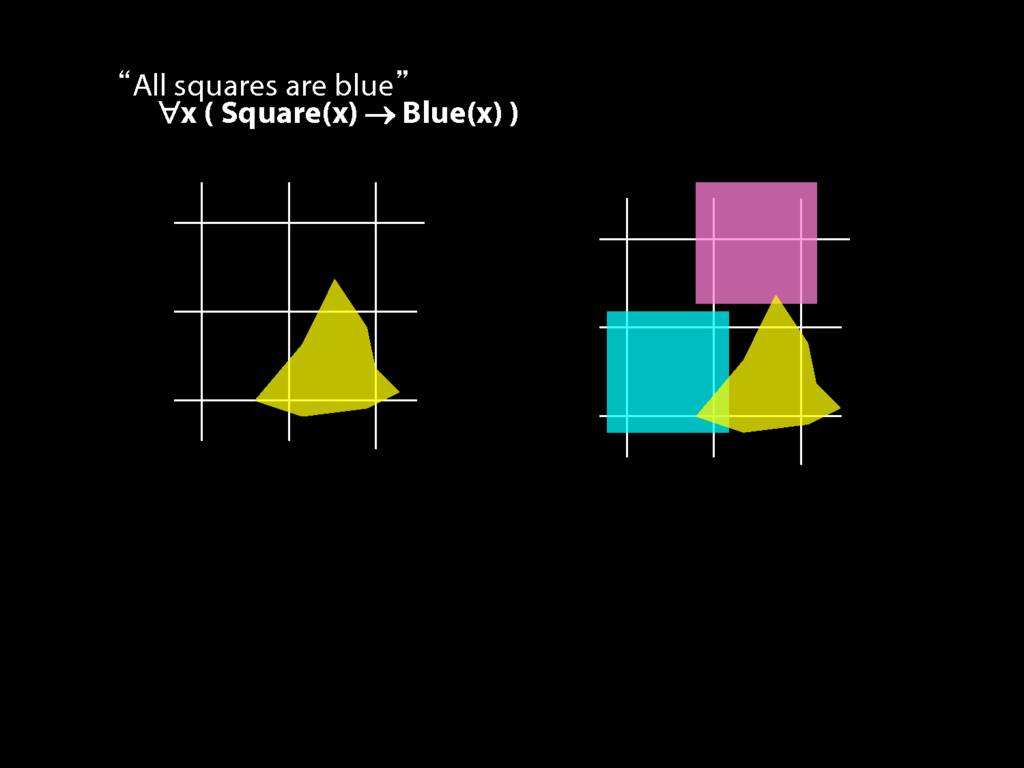
We give the meaning of ∀ by specifying what it takes for a sentence containing ∀ to be true:
\begin{enumerate}
\item Give every object a name.
\item For each name in turn, create a new sentence like this: delete the quantifier and replace all instances of the variable it binds with that name.
\item If ALL of the new sentences are true, so is the original sentence.
\end{enumerate}
\section{∀Intro}
\emph{Reading:} §12.1, §12.3, §13.1

\begin{minipage}{\columnwidth}
Why is this proof incorrect?
\end{minipage}
12.4--12.5
*12.6--12.7
12.9--12.10

Summary of Quantifier Rules
\section{Summary of Quantifier Rules}
\emph{Reading:} §13.1, §13.2
10.20
*10.24--10.7
10.28--10.29
13.2--13.3, 13.8--13.9
13.11, 13.13, 13.15
logic support
S0.08
Monday, 08 February 2016
19:00-20:00
- Logic II: Metatheory
- Logic III: Incompleteness and Undecidability
- Modal Logic
- Philosophy of Logic
- Philosophy of Mathematics
- Philosophy of Computation
3 year BSc in Mathematics and Philosophy
4 year BSc in Mathematics and Philosophy with specialism in Logic and Foundations

Translation with Quantifiers
\section{Translation with Quantifiers}
\emph{Reading:} §9.5, §9.6
\begin{minipage}{\columnwidth}
All discordians weep:
∀x( Dscrdn(x) → Wps(x) )
\end{minipage}
\begin{minipage}{\columnwidth}
All \textbf{quadrumanous} discordians weep:
∀x( ( \textbf{Quadr(x) ∧} Dscrdn(x) ) → Wps(x) )
\end{minipage}
\begin{minipage}{\columnwidth}
All quadrumanous discordians weep \textbf{and wail}:
∀x( ( Quadr(x) ∧ Dscrdn(x) ) → ( Wps(x) \textbf{ ∧ Wls(x)} ) )
\end{minipage}
\begin{minipage}{\columnwidth}
All quadrumanous discordians weep and wail \textbf{except Gillian Deleude}:
∀x( ( Quadr(x) ∧ Dscrdn(x) \textbf{∧ ¬(x=a)} ) → ( Wps(x) ∧ Wls(x) ) )
\end{minipage}
Some persuasive and useful arguments are not valid.
∃x(Persuasive(x) ∧ Useful(x) ∧ Argument(x) ∧ ¬Valid(x))
All discordians weep.
∀x( Dscrdn(x) → Wps(x) )
All quadrumanous discordians weep.
∀x( (Quadr(x)∧ Dscrdn(x) ) → Wps(x) )
All quadrumanous discordians weep and wail.
∀x( ( Quadr(x) ∧ Dscrdn(x) ) → ( Wps(x) ∧ Wls(x) ) )
All quadrumanous discordians weep and wail except Gillian Deleude.
∀x( ( Quadr(x) ∧ Dscrdn(x) ∧ ¬(x=a) ) → ( Wps(x) ∧ Wls(x) ) )
9.4–-9.5
9.8–-9.9
9.12-–9.13
\section{What does ∃ mean?}
\emph{Reading:} §9.4
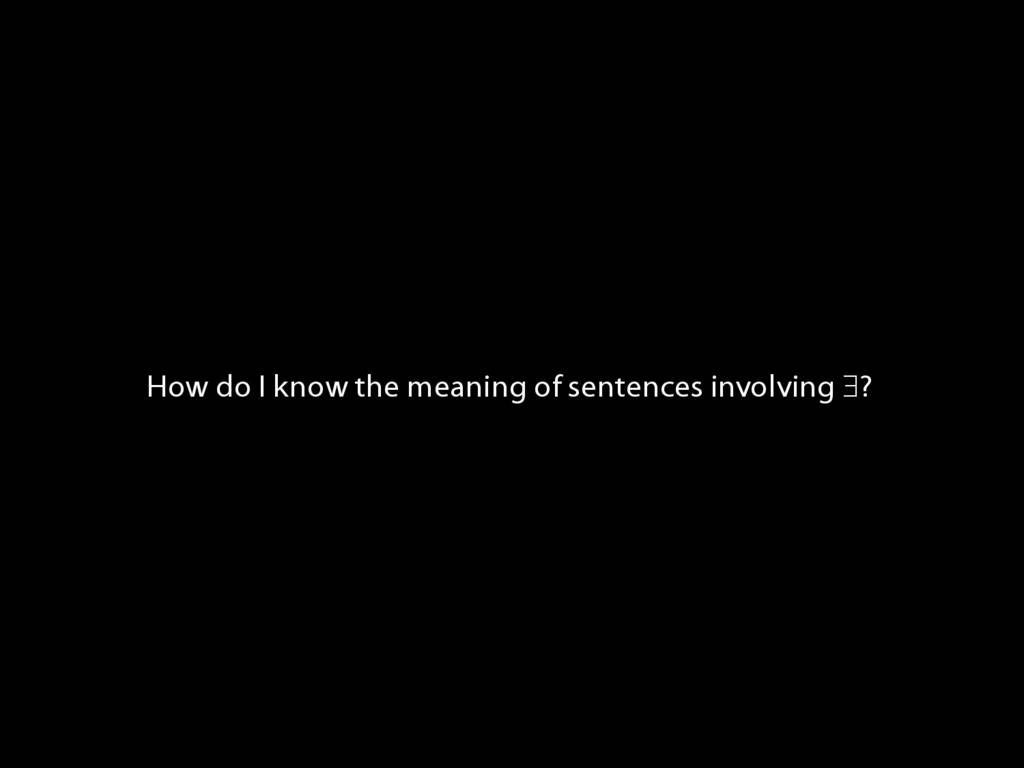
We give the meaning of ∃ by specifying what it takes for a sentence containing ∃ to be true:
\begin{enumerate}
\item Give every object a name.
\item For each name in turn, create a new sentence like this: delete the quantifier and replace all instances of the variable it binds with that name.
\item If ANY of the new sentences are true, so is the original sentence.
\end{enumerate}

Quantifiers Bind Variables
\section{Quantifiers Bind Variables}
\emph{Reading:} §9.3
Suppose you had to work out whether this sentence is true in a certain possible situation.
That would be tricky given what we've said so far about the meanings of the quantifiers.
It would be tricky because we have talked about replacing variables with names without saying, in cases like this, which variables to replace.
To specify this we need the notion of binding ...
∀x( Square(x) → ∃x Blue(x) )
But first, to see the problem, think about this variable instance.
When do we replace it? Is it when removing the truth of the universal quantifier?
Or should we leave the variable in tact and replace it when removing the existential quantifier?
To answer this question we need the notion of binding ...
(Btw, this sentence is eqvuivalent to 'either not everything is square or something is blue')
\section{Scope and Quantifiers}
\emph{Reading:} §9.5, §9.6
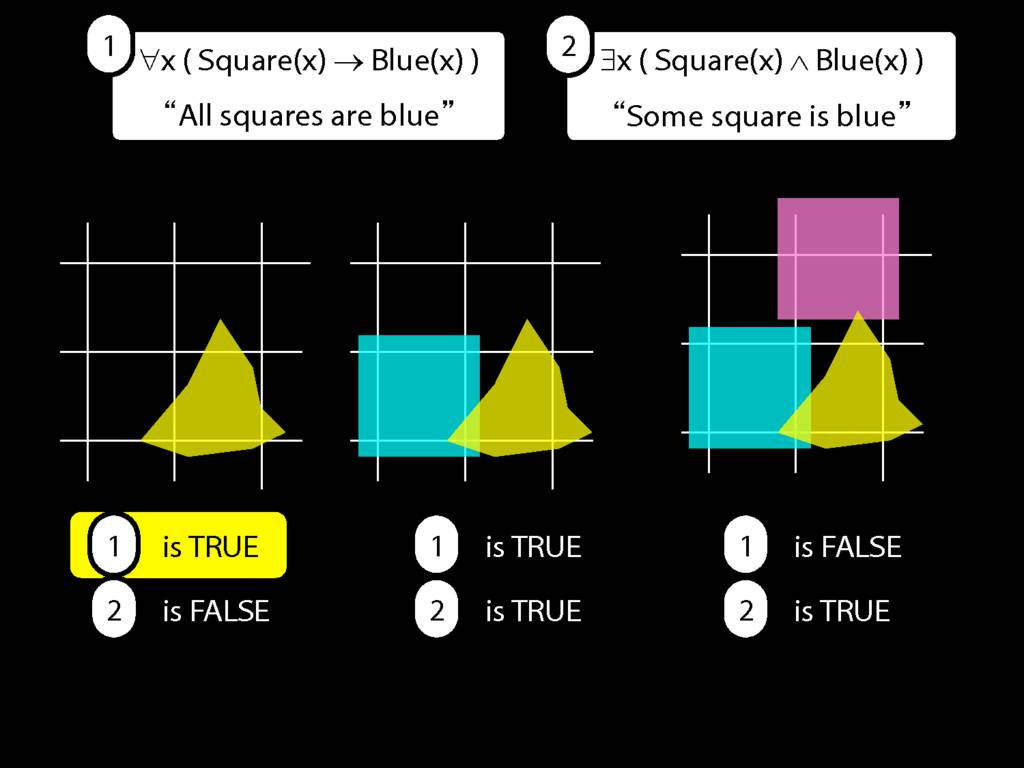
\begin{minipage}{\columnwidth}
Underlining shows the scope of the quantifiers:
\end{minipage}
∀x( Square(x) ∧ Broken(x) )
∀x( Square(x) ∧ Broken(x) ) ⊨ ∀x Square(x)
∀x( Square(x) ∧ Broken(x) ) ⊨ ∀x Broken(x)
∀x( Square(x) → Broken(x) )
∀x( ¬Square(x) ∨ Broken(x) )
∃x( Square(x) → Broken(x) )
∃x( ¬Square(x) ∨ Broken(x) )
∃x( Square(x) ∧ Broken(x) )










